|
5/31/2021 The Relevance of Marcuse’s One-Dimensional Man and its Failures. By: Carlos L. GarridoRead NowPosing the Question This year marks the 57th anniversary of Herbert Marcuse’s One-Dimensional Man (1964). This text, although plagued with a pessimistic spirit, was a great source of inspiration for the development of the New Left and the May 68 uprisings. The question we must ask ourselves is whether a text that predates the last 50 years of neoliberalism has any pertinent take-aways for today’s revolutionary struggles. Before we examine this, let us first review the context and central observations in Marcuse’s famed work. Review Marcuse’s One-Dimensional Man[i] (ODM) describes a world in which human rationality is uncritically used to perpetuate the irrational conditions whereby human instrumental ingenuity stifles human freedom and development. In the height of the cold war and potential atomic devastation, Marcuse observes that humanity submitted to the “peaceful production of the means of destruction” (HM, ix). Society developed its productive forces and technology to a scale never before seen. In doing so, it has created the conditions for the possibility of emancipating humanity from all forms of necessity and meaningless toil. The problem is, this development has not served humanity, it has been humanity that has been forced to serve this development. The instruments humans once made to serve them, are now the masters of their creators. The means have kidnapped the ends in a forced swap, the man now serves the hammer, not the other way around. The observation that our society has developed its productive forces and technologies in a manner that creates the conditions for more human freedom, while simultaneously using the development itself to serve the conditions for our un-freedom, is not a new one. The Marxist tradition has long emphasized this paradox in the development of capitalism. Marcuse’s ODM’s novel contribution is in the elucidation of the depth of this paradox’s submersion, as well as how this paradox has extended beyond capitalism into industrialized socialist societies as well. Let us now examine how Marcuse unfolds the effects of modern capitalist instrumental rationality’s closing of the political universe. Whereas the capitalism Marx would deal with in the mid-19th century demonstrated that along with clearly antagonistic relations to production, the working and owning class also shared vastly different cultures, modern one-dimensional society homogenizes the cultural differences between classes. Marcuse observes that one of the novelties of one-dimensional society is in its capacity to ‘flatten out’ the “antagonisms between culture and social reality through the obliteration of the oppositional, alien, and transcendent elements in higher culture” (HM, 57). This process liquidates two-dimensional culture and creates the conditions for social cohesion through the commodification, repressive desublimation, and wholesale incorporation and reproduction of these cultural elements into society by mass communication. In essence, the cultural differences the working and owning class had have dissipated, both are integrated in the same cultural logic. This does not mean there is no cultural opposition, but that the cultural opposition is itself “reduced” and “absorbed” into the society. Today, this absorption of the opposition is more visible than ever. Companies that donate millions to police departments post #BLM on their social medias, repressive state apparatuses who assaulted homosexuals in the 60s lavender scares now wave the LGBTQ+ flag, billion-dollar companies like Netflix who take loopholes to not pay taxes make a show on ‘democratic socialist’ Alexandria Ocasio Cortez, etc. All throughout our one-dimensional culture we experience the absorption of an ‘opposition’ whom in being absorbed fails to substantially oppose. This could be reformulated as, ‘all throughout our one-dimensional culture we experience the absorptions of any attempts at a great refusal, whom in being absorbed fail to substantially refuse.’ How did this happen? Well, in a way that paradoxically provides the material confirmation of Marxism as a science (according at least to Popper’s falsifiability requirement), while disconfirming one of its central theses, modern capitalism seems to have mended one of its central grave digging contradictions, the antagonistic contradiction between the proletariat and the owning class. According to Marcuse, modern industrial society has been able to do this because it provided the working masses (and society in general) a “comfortable, smooth, reasonable, democratic unfreedom” (HM, 1). It superimposed on the working masses false needs which “perpetuate [their] toil, aggressiveness, misery,” and alienation for the sake of continuing the never-ending hamster wheel of consumption (HM, 5). In modern industrial society people are sold a false liberty which actively sustains them in a condition of enslavement. As Marcuse states, Free choice among a wide variety of goods and services does not signify freedom if these goods and services sustain social controls over a life of toil and fear – that is, if they sustain alienation (HM, 8). In essence, that which has unnecessarily sustained their working life long, exploitative, and alienating, has made their life at home more ‘comfortable.’ This consumerist, Brave New World-like hellish heaven has perpetuated the prevalent ‘happy consciousness’ present in modern industrial society, where your distraction, comfort, and self-identification with your newly bought gadgets has removed the rebellious tendencies that arise, in a Jeffersonian-like manner, when the accumulation of your degradation reaches a certain limit where revolution becomes your panacea. The phenomenon of happy consciousness, says Marcuse, even forces us to question the status of a worker’s alienation, for although at work alienation might continue, he reappropriates a relation to the products through his excessive identification with it when purchased as a consumer. In this manner, the ‘reappropriation’ of the worker’s alienation to the product manifests itself like Feuerbach’s man reappropriating his species-being now that it has passed through the medium (alienated objectification) of God – the commodity here serving the mediational role of God. The working mass, as we previously mentioned, is not the only one affected by the effects of one-dimensional society. Marcuse shows that the theorists are themselves participatory and promotional agents of this epoch. Whether in sociology or in philosophy, the general theoretical trends in academia are the same; the dominance of positivist thinking, and the repression and exclusion of negative (or dialectical) thinking. This hegemonized positivist thought presents itself as objective and neutral, caring only for the investigation of facts and the ridding of ‘wrongful thought’ that deals with transcendental “obscurities, illusions, and oddities” (HM, 170). What these one-dimensional theorists do is look at ‘facts’ how they stand dismembered from any of the factors that allowed the fact to be. In doing so, while they present their task as ‘positive’ and against abstractions, they are forced to abstract and reify the fact to engage with it separated from its context. By doing this these theorists limit themselves to engaging with this false concreteness they have conjured up from their abstracting of the ‘fact’ away from its general spatial-temporal context. Doing this not only proves to be futile in understanding phenomena – for it would be like trying to judge a fight after only having seen the last round – but reinforces the status quo of descriptive thinking at the expense of critical and hypothetical thought. As Marcuse states, This radical acceptance of the empirical violates the empirical, for in it speaks the mutilated, “abstract” individual who experiences (and expresses) only that which is given to him, who has only the facts and not the factors, whose behavior is one-dimensional and manipulated. By virtue of the factual repression, the experienced world is the result of a restricted experience, and the positivist cleaning of the mind brings the mind in line with restricted experience (HM, 182). Given that “operationalism,” this positivist one-dimensional thought, which in “theory and practice, becomes the theory and practice of containment,” has penetrated the thought and language of all aspects of society, is there an escape to this seemingly closed universe (HM, 17)? As a modest dialectician, Marcuse denies while leaving a slight ‘chance’ for an affirmation. On one end, the text is haunted by a spirit of pessimistic entrapment – not only has the logic of instrumental rationality that sustains one-dimensional society infiltrated all levels of society and human interaction, but the resources are vast enough to quickly absorb or militarily “take care of emergency situations”, viz., when a threat to one-dimensional society arises. On the other end, he says that “it is nothing but a chance,” but a chance nonetheless, that the conditions for a great refusal might arise (HM, 257). Although he argues dialectical thinking is important to challenge capitalist positivism, he recognizes dialectical thinking alone “cannot offer the remedy,” it knows on empirical and conceptual grounds “its own hopelessness,” i.e., it knows “contradictions do not explode by themselves,” that human agency through an “essentially new historical subject” is the only way out (HM, 253, 252). The contingency of this ‘chance’ is dependent on the contingency of the great encounter between the “most advanced consciousness of humanity” and the “most exploited force,” i.e., it is the ‘barbarians’ of the third world to whom this position of possible historical subjectivity is ascribed to (HM, 257). Nonetheless, Marcuse is doing a theoretical diagnosis, not giving us a prescriptive normative approach. The slight moment where a glimpse of prescriptive normativity is invoked, he encourages the continual struggle for the great refusal. This is how I read the final reference to Walter Benjamin, “[critical theory] wants to remain loyal to those who, without hope, have given and give their life to the Great Refusal” (Ibid.). Even if we are hopeless, we must give our life to the great refusal. We must be committed, in Huey Newton’s terms, to “revolutionary suicide”, to foolishly struggling even when no glimpse of hope is to be found, for only in struggling when there is no hope, can the conditions for the possibility of hope arise. AnalysisThere are very few observations in this text to which we can point to as relevant in our context. The central thesis of a comfortable ‘happy consciousness’ which commensurates all classes under a common consumerist culture is a hard sell in a world in which labor has seen its century long fought for gains drawn back over the last 50 years.[ii] Neoliberalism has effectively normalized what William L. Robinson calls the “Wal-Martization of labor,”[iii] i.e., conditions in which work is less unionized, less secure, lower paid, and given less benefits. These conditions, along with the growing polarization of wealth and income, render Marcuse’s analysis of the post-WW2 welfare state impertinent. I lament to say that the most valuable take-away of ODM for revolutionaries today is where it failed, for this failure continues to be quite prevalent amongst many self-proclaimed socialist in the west. This failure, I argue, consist of Marcuse’s equating of capitalist states with socialist experiments. Marcuse’s ODM unites the socialist and capitalist parts of the world as two interdependent systems existing within the one-dimensional logic that prioritizes “the means over the end” (HM, 53). For Marcuse, the socialist part of the world has been unable to administer in praxis what it claims to be in theory; there is effectively a “contradiction between theory and facts” (HM, 189). Although this contradiction does not, according to him, “falsify the former,” it nonetheless creates the conditions for a socialism that is not qualitatively different to capitalism (Ibid.). The socialist camp, like capitalism, “exploits the productivity of labor and capital without structural resistance, while considerably reducing working hours and augmenting the comforts of life” (HM, 43). In essence, his argument boils down to 20th century socialism being unable to create a qualitatively new alternative to capitalism, and in this failure, it has replicated, sometimes in forms unique to it, the mechanisms of exploitation and opposition-absorption (through happy consciousness, false needs, military resistance, etc.), that are prevalent in the capitalist system. There are a few fundamental problems in Marcuse’s equalization, which all stem, I will argue, from his inability to carry dialectical thinking onto his analysis of the socialist camp. In not doing so, Marcuse himself reproduces the positivistic forms of thought which dismember “facts” from the factors which brought them about. Because of this, even if the ‘facts’ in both camps appear the same, claiming that they are so ignores the contextual and historical relations that led to those ‘facts’ appearing similar. For Marcuse to say that the socialist camp, like the capitalist, was able to recreate the distractingly comfortable forms of life that make for a smoother exploitation of workers, he must ignore the conditions, both present and historical, that allowed this fact to arise. Capitalism was able to achieve this ‘comfortable’ life for its working masses because it spent the last three centuries colonizing the world to ensure that the resources of foreign lands would be disposable to western capital. This process of western capitalist enrichment required the genocide of the native (for its lands), and the enslavement of the African (for its labor) and created the conditions for the 20th century struggle between western capital for dividing up the conquered lands and bodies of the third world. But even with this historical and contextual process of expropriation and exploitation, the fruits of this were not going to the working classes of the western nations because of the generosity of the owning class, regardless of how much they benefited from creating this ‘labor aristocracy.’ Rather, the only reason why this process slightly came to benefit the popular classes in the US was a result of century long labor struggles in the country, most frequently led by communists, socialists, and anarchist within labor unions. The socialist camp, on the other hand, industrialized their backwards countries in a fraction of the time it took the west, without having to colonize lands, genocide natives, or enslave blacks. On the contrary, regardless of the mistakes that were made, and the unfortunate effects of these, the industrialization process in the socialist camp was inextricably linked to the empowering of the peripheral subjects, whether African, Asian, Middle-Eastern, or Indo-American, that had been under the boot of western colonialism and imperialism for centuries. The ‘third-world’ Marcuse leaves the potential role of historical subjectivity to, was only able to sustain autonomy because of the solidarity and aid – political, military, or economic in kind, it received from the socialist camp. Those who were unable, for various reasons, to establish relations with the socialist camp, replicated, in a neo-colonial fashion, the relations they had with their ‘previous’ metropoles. In fact, history showed that the ‘fall’ of this camp led the countries in the third world that sustained an autonomous position (thanks to the comradely relations they established with the socialist world), to be quickly overturned into subjected servitude to western capital. By stating that the socialist camp was unable to affect a materialization in praxis of its theory, and as such, that it was not qualitatively different from capitalism (making the equating of the two possible), Marcuse effectively demonstrates his ignorance, willful or not, of the geopolitical situation of the time. Socialism in the 20th century could not create its ideal qualitatively new society while simultaneously defending its revolution from military, economic, and biowarfare attacks coming from the largest imperial powers in the history of humanity. Liberation cannot fully express itself under these conditions, for, the liberation of one is connected to the liberation of all. The communist ideal whereby human relations are based “from each according to his ability, to each according to his need,” is only realizable under the global totalizing disappearance of all forms of exploitation and oppression. It is idealist and infantile to expect this reality to arise in a world where capitalism exists even at the farthest corner of the earth, even less in a world where the hegemonized form of global relations is capitalistic. Nonetheless, even Marcuse is forced to admit that the socialist camp was able to create a comfortable life for its working masses. But, unlike Marcuse argues, this comfort in the socialist camp cannot be equated with comfort in the capitalist camp. Not only are the conditions that led to the comfort in each fundamentally different (as just previously examined), but the comfort itself, as a fact, was also radically different. In terms of job security, housing, healthcare, education, childcare, and other forms of government provided social securities, the comfort in the socialist camp was significantly higher than the comfort experienced by the working masses in the welfare social democracies in Europe, and tenfold that of the comfort experienced by the working masses in the US. When to this you add the ability for political participation through worker councils and the party, the prevalent spirit of solidarity that reigned, and the general absence of racism and crime, the foolishness of the equalization is further highlighted. Nonetheless, the comparison must not be made just between the capitalist and socialist camp, but between the conditions before and after the socialist camp achieved socialism. Doing so allows one to historically contextualize the achievements of the socialist camp in terms of creating dignified and freer lives for hundreds of millions of people. For these people, Marcuse’s comments are somewhere between laughable and symbolic of the usual disrespect of western intelligentsia. Although Marcuse was unable to live long enough to see this, the fall of the socialist camp, and the subsequent ‘shock therapy’ that went with it, not only devastated the countries of the previous socialist camp – drastically rising the rates of poverty, crime, prostitution, inequality, while lowering the standard of living, life expectancy, and the opportunities for political participation – but also the countries of the third world and those of the capitalist camp themselves! With the threat of communism gone, the third world was up for grabs again, and the first world, no longer under the pressure of the alternative that a comfortable working mass in the socialist camp presented, was free to extend the wrath of capital back into its own national popular classes, eroding century long victories in the labor movement and creating the conditions for precarious, unregulated, and more exploitative work. Works like One-Dimensional Man, which take upon the task of criticizing and equating ‘both sides,’ do the work of one side, i.e., of capitalism, in creating a ‘left’ campaign of de-legitimizing socialist experiments. This process of creating a ‘left’ de-legitimation campaign is central for the legitimation of capital. This text (ODM) is the quintessential example of one of the ways capitalism absorbs its opposition by placing it as a midpoint between it and the real threat of a truly socialist alternative. It is because the idealistic and non-dialectical logic of capital infiltrates these ‘left’ anti-communist theorists that they can condemn and equate socialist experiments with capitalism. If there is a central takeaway from Marcuse’s text, it is to guard ourselves against participating in this left-anticommunism theorizing that prostitutes itself for capital to create the conditions whereby the accidental ‘faults’ of pressured socialist experiments are equated with the systematic contradictions in capitalist countries. In a world racing towards a new cold war, it is the task of socialists in the heart of the empire to fiercely reject and deconstruct the state-department narratives of socialist and non-socialist experiments attempting to establish themselves autonomously outside of the dominion of US imperialism. Acknowledging how Marcuse failed to do this in ODM helps us prevent his mistake. Notes [i] Reference will be to the following edition: Marcuse, Herbert. One-Dimensional Man. (Beacon Press, 1966). [ii] Perhaps even longer, for The Taft-Hartley Act of 1947 had already began these drawbacks. Nonetheless, 1964 is a bit too early to begin to see its effects, especially for an academic observing from outside the labor movement. [iii] Robinson, L. William. Latin America and Global Capitalism. (Johns Hopkins University Press, 2008)., p. 23. AuthorCarlos L. Garrido is a philosophy graduate student and assistant at Southern Illinois University, Carbondale. His specialization is in Marxist philosophy and the history of American socialist thought (esp. early 19th century). He is an editorial board member and co-founder of Midwestern Marx and the Journal of American Socialist Studies. Archives May 2021
1 Comment
Friedrich Engels, Karl Marx’s life-long friend and co-developer of what has become known as Marxism, scientific socialism, dialectical materialism, and in the twentieth century as a result of the Russian Revolution, Marxism-Leninism, was born two hundred years ago on November 28, 1820, in what is now Wuppertal, Germany (then Barman, Prussia). This article commemorates the bicentenary of Engels’ birth by pointing out some of his most important contributions to the development of Marxist theory. Marx and Engels first met in 1842 in Cologne. Engels was 22 and had been active as a student in the democratic and progressive movements in Prussia and was on his way to England to join in the management of a factory partially owned by his father. His father, a conservative bourgeois, had taken Engels out of his university studies because he disapproved of his involvement in radical student movements opposed to the undemocratic Prussian monarchy. These movements were based based on the philosophical and political works of G. W. F. Hegel (1770-1831), and the students were known as the “Young Hegelians.” Marx was the editor of a radical democratic newspaper (Rheinische Zeitung), and Engels wanted to meet him. Engels had already made a name for himself as a radical journalist while a student. After Marx hired him as a foreign correspondent, he continued on to Manchester where the factory was located. His father’s hope that he would settle down and become a respectable businessman was not going to be realized. Engels spent two years in England, where he met with radical working-class leaders and wrote articles on current events and an important essay on political economy from a socialist point of view, as well as worked in his father’s factory. In 1844, on a trip back to Prussia, he stopped off in Paris to visit with Marx; the two had corresponded and wanted to meet up to compare their views on socialism. Marx was in Paris as a refugee, as the authorities in Cologne had expelled him for his political views. They spent ten days together and found out they had the same world outlook. They decided to collaborate and produce a joint work which put forth their views on socialism and philosophical materialism supporting the working class, as opposed to the Young Hegelians who based their views on philosophical idealism and were liberals opposed to communist and socialist views. Engels continued on to Prussia. A year later, their collaboration resulted in the publication of the first of many works the two would produce in the creation of dialectical materialism—the philosophy of the working-class struggle for emancipation and the creation of socialism. The Holy Family; or, Critique of Critical Criticism: Against Bruno Bauer and Company was not a full-fledged exposition of dialectical materialism, but it was a harbinger of things to come. Engels stayed in Prussia from the fall of 1844 to the spring of 1845. While there he wrote his well-known The Condition of the Working Class in England. The book created quite a stir in Germany when it was published in 1845. Engels discussed the working-class movement in terms of materialism and the need for socialism. He also stressed the importance of workers’ organizations and especially unions and the use of strikes to win acceptance of their demands from the bourgeoisie. He was also active in the socialist movement, wrote articles for the socialist press, and, as might have been expected, became estranged from his conservative father. Things were getting too hot in Prussia for Engels. With the authorities upset with his activities and the police spying on him, Engels worried about being arrested, so in the spring of 1845 he moved to Brussels. He chose Brussels because Marx was there, as he had to leave Paris for the same reasons. It was at this time that the pair worked out a full-fledged version of dialectical materialism. Engels had almost gotten there on his own, but Marx had worked out a more advanced view that Engels immediately recognized as such. Here they decided to collaborate on another book to iron out their ideas and solidify their new philosophy in contradistinction to both the objective idealism of Hegel and the materialism of Feuerbach (an influential student of Hegel whose materialist system inspired Marx and Engels but who was not dialectical in his thinking). Their new book was finished by 1846 but never published in their lifetime. The German Ideology had been accepted for publication, but political and financial difficulties had arisen and the publication was shelved until after the Russian Revolution when it was published by the Soviets. It had served its purpose though; in writing it Marx and Engels had finally arrived at full agreement both politically and philosophically and were ready to devote their lives to the struggle for communism. They packed away the manuscript and, as Marx remarked, “left it to the gnawing criticism of the mice.” Marx and Engels became involved in building socialist organizations in Brussels, and their writings were being spread in Germany and elsewhere through the socialist press. There were many different versions of “socialism” in the 1840s, but dialectical materialism began to slowly catch on to such an extent that in 1846 the Brussels followers of Marx and Engels sent Engels to Paris to make contact with the leading French groups and German exiles advocating socialism and democratic rights. So impressed were the leading French socialists that the editor of a major socialist paper, La reform, appointed Engels a correspondent. He also made contact with the leading group of German socialist exiles in Paris, The League of the Just. In 1847 the League asked Marx and Engels to become members. The influence exerted by their ideas soon came to dominate the thinking of most League members, and in June Engels went to London to attend the League’s First Congress. By the end of the congress the League had renamed itself the Communist League, and a new slogan, “Workers of the World, Unite,” was adopted, superseding the bourgeois liberal (and male chauvinist, pace Schiller and Beethoven) “All Men Are Brothers.” Brussels became the center for the Communist League and its internationally circulated newspaper Deutsche Brüsseler Zeitung, with Marx and Engels writing the articles on theory. In the fall of 1847 Engels went to Paris to help the Communist League and prepare for its Second Congress. He reworked the draft program the League has drawn up, named it the “Manifesto of the Communist Party,” and sent it to Marx to look over. The Second Congress (December 1847) adopted dialectical materialism as its policy, and Marx and Engels collaborated on getting the Manifesto ready for the press. It was published in February 1848, and the international communist movement was launched. The publication coincided with the 1848 February Revolution in France. Revolutions broke out all over Europe that year as the revolutionary bourgeoisie consolidated its political and economic power at the expense of the remnants of the old feudalist order. In France, Louis Philippe, the last of the French kings, was forced to abdicate, and the Second Republic was proclaimed. The revolution spread to Germany and southern and eastern Europe. Engels joined Marx in Cologne to work at the Neue Rheinische Zeitung, the Germany daily newspaper published by Marx. In 1849 Engels participated in revolutionary fighting in the Rhine Province, and when the revolutionaries were defeated he escaped to Switzerland. From there he made his way to London and helped reorganize the Communist League. In 1850 he wrote another of his important historical works, The Peasant War in Germany. Without Engels, Marx would have been “unable to complete” Das Kapital. The year 1850 also saw Engels’ return to Manchester and his father’s factory. Marx was now living in London, and the two were in constant communication. With the revolution having been defeated, they now engaged in research and the elaboration of their theories. Because Engels was running his father’s factory, he was able to help Marx financially; this allowed Marx the time he needed to write Das Kapital, one of two most important books published in the 19th century (it came out in 1867, the other was Darwin’s Origin of Species, published in 1859). Lenin said that without Engels’ aid Marx would have been “unable to complete” Das Kapital. As it was, Marx only lived to complete volume 1, and Engels, with Marx’s drafts and notes, completed volumes 2 and 3 and saw them through to print. Throughout the 1850s Marx, and especially Engels, concentrated on elaborating the practical aspects of dialectical materialism regarding the struggles of the working class to create unions and in the various national liberation movements that existed at that time, such as in Ireland, Poland, Hungary, the Balkans, and India, including the anti-slavery movement in the U.S. In 1864 Marx and Engels were instrumental in the founding of the First International. Throughout its existence Engels was a major contributor to the International’s positions on war, colonization, the U.S. Civil War, and the fight against the anarchist movements, which opposed the views of Marx and Engels and the Communist League, under the influence of Mikhail Bakunin (whose views are kept alive and well in the 21st century by anarchists representing the views of the petty bourgeois radicals and not the working class). In 1872 or 1873 Engels began another important book, Dialectics of Nature, which he worked on intermittently for ten years but never finished. After Engels’ death Edward Bernstein showed the manuscript to Albert Einstein, who thought it worth publishing even though the physics and mathematical parts were weak and out of date. It was published, finally, by the Soviet Union in 1925 (the Marx-Engels Institute). It has limited value, since the sciences have made qualitatively giant strides from the mid-19th century, but it shows how Engels used dialectical materialism to interpret scientific advances dialectically. It also has many interesting sections in which Engels put forth the rudiments of ideas that were later to become part of our contemporary scientific understanding of the world (especially in his discussion of human evolution and some aspects of modern physics, although in antiquated terms no longer in use). One of the reasons his book on nature was never completed was that he was busy on other important projects in the 1870s, such as following the developments and advising the growing socialist parties in France, Germany, England, and other countries while also writing important theoretical works: The Housing Question, On Authority, and The Bakuninists at Work (all in 1873), as well as one of the most important works in all Marxist literature, Anti-Dühring (1878). Anti-Dühring covered the whole gamut of dialectical materialism, and three chapters on the history of socialism were so popular that Engels was asked to issue them as a separate work. He reworked these chapters and in 1880 published them in the work we know as Socialism: Utopian and Scientific. The great collaboration of Marx and Engels came to an end on March 14, 1883, when Marx died at age 65, leaving Engels alone as the de facto intellectual leader of the world socialist movement. Marx left behind a trove of unfinished works which it was left for Engels to edit and see published. Engels had, as well, two more major works of his own to complete in the eleven years left to him. Lenin considered Engels’ Origin of the Family to be “one of the fundamental works of modern socialism.” Engels managed to get volume 2 of Das Kapital properly arranged and edited, and it was published in 1885, followed by volume 3 in 1894. He put so much work into these volumes that Lenin said they should be seen as joint works of Marx and Engels. At the same time he was editing Marx’s manuscripts and turning pages of notes and hastily jotted-down ideas into readable texts, he managed to write two works of his own that have become Marxist classics. In 1884 The Origin of the Family, Private Property, and the State came out (“one of the fundamental works of modern socialism”—Lenin). His final major work, Ludwig Feuerbach and the Outcome of Classical German Philosophy, was published in 1886. It was in this period that Engels advised the Marxist parties to avoid sectarianism and dogma and to work to develop mass working-class parties. He also gave the classical definition of “opportunism” (still a big problem)—“letting the great basic considerations be consigned to oblivion by transient daily interests,” in other words, “sacrificing the future of the movement to the present.” This period also saw the founding of the Second International (1889) in Paris in which Engels played a leading role. The First International (International Workingmen’s Association) had been basically set up by Marx and Engels in 1864 and was dissolved in 1876 to prevent its being taken over by the anarchist followers of Bakunin (who died that year in Bern). This international, which excluded the anarchists, lasted to 1916 when it fell apart because most of its national units, pledged to resist war, ended up supporting their own nations in World War I. It was succeeded by the Third International (1919–1943). Engels, who in these years maintained his position as the most influential leader of the world socialist movement, began to have health problems in the 1890s and died of laryngeal cancer on August 5, 1895. A short time before his death, a young Russian revolutionary, V. I. Ulyanov, made a trip to London, hoping to meet with Engels but was turned away because Engels was too ill to meet with anyone. After his death his daughter Eleanor Aveling and two close friends, Friedrich Lessner and Eduard Bernstein, carried out his last request to be cremated and his ashes scattered in the ocean off Beachy Head, near Eastbourne in East Sussex on the south coast of England. Cover image: Fondo Antiguo de la Biblioteca de la Universidad de Sevilla, Creative Commons (public domain). AuthorThomas Riggins is a retired philosophy teacher (NYU, The New School of Social Research, among others) who received a PhD from the CUNY Graduate Center (1983). He has been active in the civil rights and peace movements since the 1960s when he was chairman of the Young People's Socialist League at Florida State University and also worked for CORE in voter registration in north Florida (Leon County). He has written for many online publications such as People's World and Political Affairs where he was an associate editor. He also served on the board of the Bertrand Russell Society and was president of the Corliss Lamont chapter in New York City of the American Humanist Association. This article was first published by CPUSA. Archives May 2021 5/27/2021 Dialectical Power in Art; Communism’s First Anthem, La Marseillaise. By: Tim RussoRead NowIf you’re listening to the fiction audiobook series Ghosts of Plum Run here on Midwestern Marx, you’re learning the Union Army in the American Civil War had a lot of German immigrants in the regiments, especially in the First Minnesota. Company A of the First Minnesota crackled with spoken German constantly, German language newspapers delivered into camp, men writing letters in German. During their suicidal charge at sundown on July 2, 1863 on the second day of the Battle of Gettysburg, more than half of the First Minnesota’s Company A was German born, as were Company A’s killed in action during the 15 minute charge. More than half of Company A’s wounded to later die of their wounds from the charge were German born. While many notable German regiments celebrated their revolutionary German heritage, such as August Willich’s 9th Ohio and 32nd Indiana, most German born immigrants in the Union Army had erased from their history the communist revolutions of 1848 in Europe, leaving it behind and all else of Europe’s endless, tiresome, oppressively complicated dramas that drove them across the sea. America transformed them into newborns, with no past, only a future, but still German. One revolutionary leftover was very visibly (rather, audibly) kept, especially when Willich’s men drilled while the regimental band played the song of the revolution, La Marseillaise. To any outsider, the song was the most observable evidence of the 1848 revolution in the Union Army. La Marseillaise had entered the dialectic, and remains there even today. Composed by Claude Joseph Rouget de Lisle the night of April 25, 1792, La Marseillaise was first known as War Song for the Army of The Rhine. Rouget de Lisle attended a dinner that night hosted by the French mayor of largely German Strasbourg, Philippe Freidrich Dietrich, to honor officers of the French garrison in Strasbourg. Tension gripped Strasbourg, as Austrian and Prussian troops were about to invade to try and smother French revolutionary ideas in their cradle. Over drinks after dinner, Mayor Dietrich lamented to the gathered officers that revolutionary France had no national anthem to motivate armies in the face of the imminent invasion. So, Rouget de Lisle immediately hurried to his quarters to write just such an anthem, returning with sheet music for the mayor himself to sing for the first time in his living room, accompanied by his wife on piano in a late night, wine fueled flurry of music and revolution. Instantly infectious, the song stuck to France like glue. Lyrically, nothing could explode more with viciously revolutionary power, warning of “tyranny’s bloody standard raised” by “bloodthirsty despots”, a “horde of slaves, of traitors and conspiring kings” coming to “cut the throats of your sons and women” and worse, “tear apart their mothers’ breasts.” Sacre bleu! A call to arms was never more direct, itself so bloodthirsty the chorus demands over and over to crescendo, “To arms citizens! Form your battalions! March! March! Let an impure blood water our furrows!” It was first sung on the march mere weeks after its composition, in May, 1792, by volunteers from Marseille, whose entry into Paris that summer, singing the song, gave the anthem its permanent name, La Marseillaise. Translated rapidly into German in defense of the Alsace region against the Austrians and Prussians, La Marseillaise crossed national boundaries very early in its history. Alas, like so many incredibly powerful French revolutionary moments that somehow, someway, crossed some imaginary dialectical line somewhere, La Marseillaise lost favor quite quickly. Seeming to anticipate the danger of what he had done, Rouget de Lisle never signed the sheet music. Mayor Dietrich lost his head at the guillotine only a year later during the Reign of Terror, to be rehabilitated from the grave as a hero of the revolution two years later, when the song was made the French national anthem for the first time in 1795. After Napoleon Bonaparte turned revolution into empire, himself a “despot and conspiring king”, he got rid of the anthem, the succession of hobbled French monarchies after his ignoring the song entirely, with good reason. But the song would not die. It arose again in France’s 1830 revolution, and then most powerfully across the whole of Europe in 1848, sung by every nationality rising up against tottering monarchies across the continent. Revolutionaries who fought with La Marseillaise in their lungs then had to flee their homes as immigrants to America brought the anthem to German regiments in the Union Army in 1861. Back in Europe, Napoleon III threw up his hands in frustration in 1870, and encouraged the song’s return to help raise armies to fight the Franco Prussian War. This of course backfired, as the Paris Commune appropriated the song in 1871, changing the lyrics for communist effect. The commune crushed, buried the song was again until finally, in 1878, La Marseillaise stayed for good as France’s national anthem. The next century, Hollywood found it. Today, the most known version of La Marseillaise appears in what many consider the greatest film ever made, Casablanca (1942), in a scene itself teeming with explosive dialectical irony shooting in every direction. Having commandeered Sam’s piano, uniformed Nazis in Rick’s Café bombastically sing their Nazi approved German anthem, annoying the crowd filled with refugees waiting for visas to flee Europe to America. Instantly, resistor Victor Laszlo (played by Paul Henreid, himself a German refugee) marches to Rick’s house band and demands, “Play La Marseillaise! Play it!” The band leader looks for permission to Rick (Humphrey Bogart) across the room. Bogart nods approval, as if he is the dialectic itself, the barely perceptible nod a cosmic conduit from a boozy late night in 1792, to 1848, to 1861, to 1871, to 1942. The café explodes with La Marseillaise, drowning out the Nazis, who immediately begin a crackdown. Only art possesses such timeless dialectical power, in this case music. One of cinema’s greatest icons Humphrey Bogart likely did not know, as he nodded, that at the Battle of Shiloh, the reddest of the red August Willich calmed his staggered Union troops by drilling them in the manual of arms, under Confederate fire, on his horse, his back to the enemy, their calming rhythm made permanent by previously drilling to the strains of La Marseillaise in camp, over and over again. AuthorTim Russo is author of Ghosts of Plum Run, an ongoing historical fiction series about the charge of the First Minnesota at Gettysburg. Tim's career as an attorney and international relations professional took him to two years living in the former soviet republics, work in Eastern Europe, the West Bank & Gaza, and with the British Labour Party. Tim has had a role in nearly every election cycle in Ohio since 1988, including Bernie Sanders in 2016 and 2020. Tim ran for local office in Cleveland twice, earned his 1993 JD from Case Western Reserve University, and a 2017 masters in international relations from Cleveland State University where he earned his undergraduate degree in political science in 1989. Currently interested in the intersection between Gramscian cultural hegemony and Gandhian nonviolence, Tim is a lifelong Clevelander. Archives May 2021 5/25/2021 Book Review: Slavoj Zizek and Perverse Christianity (2003). Reviewed By: Thomas RigginsRead NowIn his book, “The Puppet and the Dwarf: The Perverse Core of Christianity” the Slovenian philosopher Slavoj Zizek puts forth the view that Marxists can no longer make a frontal attack on the institutions of imperialism, thus a feint under the cover of Christianity is necessary. Zizek calls himself "a materialist through and through" and believes that Christianity has a "subversive kernel" which can only be demonstrated by a materialist analysis. But he also holds that the relationship is so intimate that "to become a true dialectical materialist, one should go through the Christian experience." Zizek maintains that for "intelligent Marxists" the most interesting questions are not those about change and development – but about permanence and stability. Why has Christianity persevered from ancient times? We "find it in feudalism, capitalism, socialism..." etc. The clue is to be found in the writings of the Catholic writer G.K. Chesterton who wrote that despite the rigid ethical and moral demands of the Church and its priests, an inhuman "outer ring" it actually protected the masses of people where one would find "the old human life dancing like children and drinking wine like men; for Christianity is the only frame for pagan freedom." Pagan freedom is another term for joy in living. This may explain the persistence of Christianity, but why must Marxists have the Christian experience? This is too unrealistic a claim. Do Asian Marxists from non-Christian cultural backgrounds have to convert to Christianity in order to have the "Christian experience" before fully understanding dialectical materialism? Other religions have also been persistent. Hinduism, for example, is older than Christianity, as is Buddhism, and has adapted to the modern world. Zizek does discuss some of these other religions but is on shaky ground. He seems to think, for instance, that Bodhisattva is the name of a person rather than being a title used to describe Mahayana Buddhist “deities”. Zizek’s "materialism" or at least his "Marxism" is also all mixed up with categories borrowed from Lacanian psychoanalysis. And here is a digression based on W.L.Reese’s work Dictionary of Philosophy and Religion: Eastern and Western Thought: Jacques Lacan (1901-1981) was a French psychoanalyst who thought the unconscious Id expresses itself in language because it is structured like a language. The Ego should recognize the depth and plurality of meanings of the Id. This is hard to do as the Ego = our personal identity, our conscious self which is only composed of the info allowed through by the Censor. Lacan wants to subvert not strengthen the Ego. The Ego is a mess due to problems in infancy and it is this screwed up infantile Ego, surviving into adulthood, that must be subverted by the usual psychoanalytic methods. Using this Lacanian world view plus "Marxism," Zizek decides that by using a "perverse" version of Christianity leftists can smuggle in, as it were, progressive ideas and put them into play in our society. Having concluded that Marxism cannot get a hearing in our culture this is really the only way that we can advance the revolutionary cause. Marxists in Christian clothing. No doubt that because Christianity originated among oppressed national minorities and slaves there are many features of progressive social justice that can be deduced from it. The battle against the Christian right could be more easily waged by showing that its political and social formulations are contrary to Christian teachings and the logic of Christianity. In this respect Zizek has a point. But it is not necessary for Marxists to go through a Christian moment themselves. By the way, the "puppet" in the book’s title is Christian theology – we (the “dwarf”) will use theology to forward our secular ends – the dwarf will use the puppet. People interested in philosophy and religion may want to read this book. I have only scratched the surface in this brief article. At the end, Zizek says the point of his book is to show that Christianity at its core reveals the secret of the passion of the Christ (one that Mel Gibson missed). When Christ dies after asking his Heavenly Father why He has abandoned him, the historical secret is that there is no Heavenly Father. So is “Christ” just hallucinating? There is no "Other" to judge us. We are responsible. This is the perverse core of Christianity and Zizek takes us on an interesting tour of the history of Western thought to get there. You might not like all of the stops along the way, or even the final destination, but you may well enjoy the trip. Nevertheless, I don’t think we will ever start preaching Marxism-Leninism-Jesus Christ Thought. AuthorThomas Riggins is a retired philosophy teacher (NYU, The New School of Social Research, among others) who received a PhD from the CUNY Graduate Center (1983). He has been active in the civil rights and peace movements since the 1960s when he was chairman of the Young People's Socialist League at Florida State University and also worked for CORE in voter registration in north Florida (Leon County). He has written for many online publications such as People's World and Political Affairs where he was an associate editor. He also served on the board of the Bertrand Russell Society and was president of the Corliss Lamont chapter in New York City of the American Humanist Association. Archives May 2021 Who, or what, is the “middle class”? Most people identify themselves as middle class, but what does that mean, and what difference does it make? This article’s first focus is on the concept of middle class, especially the way people understand it and use it, from the perspectives of those who answer survey questions to the analysts who study social inequality. The way “class” is defined and used has the effect of rendering some social processes invisible. Second, Marxist analysis offers a much different conception of class, one that brings to light social dynamics hidden in the bourgeois perspective. Third, what are the material conditions and consciousness of the U.S. “middle class” today, and what are the political pressures that are bearing down on different segments of the economy? Economists, pollsters, and many policy researchers define class with reference simply to individuals’ or households’ annual income. For example, the Pew Research Center arrays all income data points in a line, from lowest to highest. The very middle point is the median. Then, people with incomes of less than two-thirds of the median are labeled “lower income.” “Upper income” are those with incomes twice the median or more. All those in-between are “middle income” or “middle class.” The advantage of this technique is that it offers a specific measure that can be used to compare inequality across time and place, data which the Pew Research Center regularly reports. The disadvantage is that it hides the impact of a host of other factors determining one’s relative position in the economy, like wealth and social status. And, unlike a Marxist analysis, this view of class, with its more or less arbitrary boundaries, doesn’t recognize that classes are collectivities that have a social reality over and above their individual members, and that act more effectively for social change than any individual member could possibly act. Some use the term “middle class” simply to distinguish it from those with the least income, who become known collectively as “the poor.” Reverend William Barber of the Poor People’s Campaign, for example, criticized the Democratic Party’s sole focus on the middle class, which he contrasted with the interests of the poor, as he said about poverty at a recent online meeting: “Neoliberalism isn’t going to fix this. The middle class isn’t going to fix this. And as Pope Francis has said, trickle-down has failed us.” Sociologist Mary Pattillo, in her 2005 study of “Black Middle-Class Neighborhoods” in the Annual Review of Sociology, writes that defining the middle class is difficult and that her article might better be entitled “Black Non-Poor Neighborhoods.” Trade union discourse tends to rely on the term to describe the benefits of good union jobs. Columbus Ohio building trade union activist Dorsey Hagar, for example, says that union jobs get workers “on that direct path to the middle class where they’re providing for themselves and their family.” Besides income, some people understand “middle class standing” as a social status, like occupational prestige and years of education. Sociologists today define the middle class as an ever-changing assortment of different occupational groups in “a heterogeneous and historically shifting middle class rather than distinct entities.”1 Others define middle class by levels of consumption, such as aspirations for home ownership, children’s education, health insurance and economic security, as in a 2010 Commerce Department document prepared for then Vice-President Joe Biden. If being middle class were just a matter of self-perception, almost all Americans would be in the middle class, according to one 2015 survey, which found that well over 85% call themselves middle class. Racial identification matters too; whites are far more likely to define themselves as middle class than are African Americans with similar incomes. In Marxist analysis, the understanding of “class” is very different. It starts by looking at large-scale social processes, and finds the basis of social classes in the relations of production in the economy. Those who own and control the means of production, and who are able to take ownership of all that is produced, form the ruling class; in capitalist society the ruling class is the bourgeoisie, while in feudal society, it was the landed aristocracy. Those who sell their labor power to the owners of the means of production are the proletariat or working class. Instead of class as a characteristic of individuals, Marxist analysis studies the way classes act in society as collective actors. Struggle between classes is the “motor of history,” driving all social change. Classes are rooted in the common material interests that derive from a similar relationship to the means of production. But that is not enough to unite or empower a class. To be a class “for itself” as well as “in itself,” a class needs a “community, . . . national bond, and . . . political organization,” as Marx said in The Eighteenth Brumaire of Napoleon Bonaparte. The small-holding French peasants he studied had common material interests, but they lived apart from one another and were unaware of those commonalities. They were just, in Marx’s words, “the simple addition of homologous magnitudes, much as potatoes in a sack form a sack of potatoes.” As a class, the peasantry was only as powerful as the sum of its parts. A class’s real power, over and above the sum of its members, is derived not just from common material interests, but from the class’s awareness of itself as a class engaged in struggle with other classes. That class consciousness was what empowered the industrialists of the eighteenth and nineteenth centuries to defeat the landed aristocracy, and it will be what empowers the proletariat to defeat the capitalist ruling class. Historical materialism predicts that society will become more and more polarized into two great classes, in conflict with each other. But other classes exist simultaneously. Some are vestiges of earlier stages of class relations, like the remnants of the landed aristocracy. Marx recognized that throughout history there are strata in society that are between the two great classes. New technologies may bring changes in class relations that hasten the demise of the old system. One of these “middle” classes for Marx was the occupational group of merchants who emerged from the separation of production and commerce at the dawn of the industrial age. When the Pew Research Center or the New York Times refers to the “middle class,” they are referring to a sector of the working class. Roberta Wood in her pamphlet “Marxism in the Age of Uber” has an expansive vision of the working class as 90 percent of the U.S. population: “The working class of the 21st century includes rideshare drivers, nursing home aides, baristas, warehouse workers, UPS package handlers, teachers, engineers, research scientists, and I.T. folks — alongside factory, construction and farmworkers and incarcerated labor.” Even before the pandemic, the non-poor working class was being squeezed financially. “The costs of housing, health care and education are consuming ever larger shares of household budgets, and have risen faster than incomes,” according to a 2019 article in the New York Times. “Today’s middle-class families are working longer, managing new kinds of stress and shouldering greater financial risks than previous generations did.” Then, the pandemic economy hit. The effects of loss of jobs and income have been severe and will reverberate for years to come. Working families face food insecurity, utility shut-offs, loss of health insurance, and eviction. According to a Pew Research Survey, about a quarter of all adults in the U.S., and one in every three low-wage workers, lost their jobs. More women than men, and especially Black and Latinx women, report having trouble paying their bills, and are more likely than men to have borrowed money, used savings that had been set aside for retirement, and gotten food from a food bank. Small business owners, the petty bourgeoisie in Marxist terms, is seen as a “middle” class, torn in their loyalty to the working class, which is closest to it in material conditions, or to the ruling class, to which it improbably aspires. Owners of small businesses and independent professionals may employ a handful of individual workers, whom they exploit by appropriating the surplus value of their labor in the same way that big corporations exploit workers. In the U.S., this sector is very engaged politically; one study found that 98% of small business owners were registered to vote and 62% have contributed to campaigns. A survey from before the pandemic showed that a majority of small business owners benefited from the 2017 tax cuts and believed that their businesses would be better off if Trump were re-elected. Some members of this group endorse the extreme right. As C. J. Atkins pointed out, the Atlantic documented that the insurrectionists who stormed the Capitol on January 6 were “a cavalry made up of ‘business owners, CEOs, state legislators, police officers, active and retired members of the military, real-estate brokers,’ and others.” An article in the Washington Post revealed that almost 60% of those charged in the Capitol insurrection “showed signs of prior money troubles, including bankruptcies, notices of eviction or foreclosure, bad debts, or unpaid taxes over the past two decades.” Downward mobility no doubt fueled their anger. But this sector is still powerless compared to big business. Like the working class, it is vulnerable to the vagaries of the capitalist economy of boom and bust. Small business owners were hit hard in the current recession. In September 2020 it was estimated that 100,000 small businesses that had shut down due to the pandemic had closed permanently. Black-owned businesses closed at twice the rate of white-owned businesses. That was even before the autumn surge in cases and further lockdowns. These times remind me of the saying, “Every woman is six weeks away from welfare.” It recognized the vulnerability of working women in particular, who often had sole responsibility for their children as well as themselves. Even if comfortably situated today, lulled by the idea that they had joined the middle class, job losses or medical emergencies could quickly drive people into poverty. Only the ruling class is protected. Notes 1. Melanie Archer and Judith Blau, “Class Formation in Nineteenth-Century America: The Case of the Middle Class,” Annual Review of Sociology, 1993, vol. 19, no. 1. Images: top, Christopher Chappelear (CC BY 2.0); college graduate, COD Newsroom (CC BY 2.0); barista, Phil Squires (CC BY-NC-SA 2.0); closed business, Ivan Radic (CC BY 2.0). AuthorAnita Waters is Professor Emerita of sociology at Denison University in Granville, Ohio, and an organizer for the CPUSA in Ohio. This article was first published by CPUSA. Archives May 2021 Authors of foreign policy in the United States (US) propose short, justifiable military interventions. These deployments to countries such as Iraq and Afghanistan considerably outlast conjured promises of swift victory made by US officials. Instead, these conflicts never fully resolve, and the occupations do not end. The endless war is an imperialist practice which maintains US hegemony throughout the world. American dominance is enforced via military occupation, economic and sociopolitical influence, and wealth extraction in the form of resources. For the Marxist-Leninist and the anti-imperialist, it is important to assess monolithic, enduring forms of oppression. Only through understanding the methods of the empire can one successfully oppose the newest iteration of it. The US occupation of Korea as an endless war has lasted for 70 years. This article specifically explores the US occupation of the Korean peninsula, as well as the economic, diplomatic, and political impacts that this imperialist endeavour has had and continues to have on both the Republic of Korea (ROK) and the Democratic People’s Republic of Korea (DPRK). The aim of this article is not to wholy discern the in-depth intricacies of US imperialism in the Korean peninsula, but rather provide an introductory framework as well as uncover misinformation and hearsay regarding the historic and modern implications of the US occupation on the peninsula. For the sake of transparency, there are challenges in procuring and establishing consistent, accurate information about the DPRK. First, not all primary source material from within the DPRK is obtainable. Second, the DPRK is barred from accessing the global internet structure (Williams, 2016). Third, both English-language and ROK news and information sources about the DPRK include propaganda, often biased against the DPRK. The US is still technically at war with the DPRK, and the US military continues to occupy the ROK (United States [US], 2018). Material for this article spans these conflicting perspectives. Sources that meet a degree of impartiality are utilized to produce supporting arguments. References include the US Central Intelligence Agency (CIA), global public financial reports, the Korean Friendship Association (KFA), as well as both Korean and Western news media. The US has a long history of occupying the Korean Peninsula, including a number of military endeavors waged against sovereign Korean governments. In 1871, during the Joseon Dynasty, the US initiated its first attempt to establish trade relations (Nahm, 1996). US warships were forced to retreat following an initially successful but costly skirmish off the coast of Ganghwa Island (Nahm, 1996). The Korean government continued to refuse all negotiations with the US government until 1882. American trade and business ventures would expand in Korea under the Japanese occupation of the Peninsula from 1910 until trade and relations broke down between the US and Japanese governments during World War II (WWII). When considering post WWII Korea, it is necessary to review the political and economic implications that led to the development of the DPRK and the ROK, the occupation of the ROK by the US military, and the economics and politics in the two modern respective Korean governments. Following WWII, the Korean Peninsula was occupied by two of the Allied victors: the Union of Soviet Socialist Republics (USSR) and the US. The planned objective for both the USSR and the US was to occupy the peninsula on opposing sides of the 38th parallel for roughly a five-year period. Both nations would officially withdraw combat troops in 1948. However, the US did not recall all forces as agreed, but left military advisors in the South until after 1949 (Cummings, 2005). The DPRK, foundationally, could be described as a socialist state, despite formally not identifying as such anymore. Officially the DPRK identifies through a political ideology developed by Kim Il-Sung called “Juche”, which means ‘self-reliance’. Additionally, much of the structure of the DPRK has developed through the idea of “Songun”, which emphasizes the importance of military strength as the primary defender of the nation’s interests and economic development (Central Intelligence Agency [CIA], 2018). The ROK is largely described as a constitutional republic and bases its strong economic development through one of the most domineering capitalist markets in the world (Britannica, 2018). The foundations of the modern DPRK and the ROK stem from the ashes of the Korean war which lasted from June 1950- July 1953. This conflict did not rise out of nowhere, and it would be historically improper to not highlight here the ahistorical view that the North and Kim Il-Sung were solely responsible for the outbreak of the war. Since the advent of Japanese occupation and the subsequent occupation of the peninsula by both the USSR and the US, many Koreans dreamed of a unified and independent nation of their own to rule over. With the continued division after 1946, these unification sentiments continued to grow. This is relevant because the North did in fact want to unify the two Koreas (by forceful civil war if necessary), and Syngman Rhee (ROK President) and the South also wanted to achieve this as well. Following WWII, it was not the North who initially began drawing up and enacting battle plans to reunify the peninsula, but rather the Southern government under Rhee. While the North was definitely interested, a large portion of the best North Korean soldiers were still participating in the Chinese Civil War, fighting alongside Mao Tse-Tung and the People’s Liberation Army (PLA); thus rendering a full-scale offensive into the South, not a feasible notion (Cummings, 2005). In-fact the major global influencers, the USSR and the US were not totally interested in taking sides in another all-out war either. While the super powers were less inclined to do so, the US did keep military advisers in Seoul to advise on the interests of the American policy of containment and to vett Rhee’s administration of being competent enough of America’s time and money. While the North was assisting the communist revolutionaries in China to secure China’s future support in reuniting the peninsula. In contrast the government in the South; in order to gain favor from the US, was tasked with routing the impoverished guerilla fighters who had begun taking up arms all over the rural sections of the southern peninsula. These guerillas utilized hit and run tactics on military outposts, and while many would either be communists or deemed communist sympathizers, there has never been surmountable proof of material aid from the North (Cummings, 2005). To further strengthen his forces and to undermine the communist element growing in the South from 1946-1949; Rhee bolstered his military and administration with former Japanese colonialist collaborators and soldiers. Rhee’s administration, with the assistance of American advisors, completed their task and all but eliminated between 5,000 and 12,000 guerilla fighters by mid-late 1949. Additionally his military created an estimated 100,000 refugees of villagers solely in the South Chulla region. Throughout much of 1949, skirmishes between the North and the South began appearing in greater numbers, as Rhee’s administration sent exploratory missions into Northern territory, likely in hopes of goading a large (but ineffective) invasion from the North. The response to this from the North would not come until the following year (with the official start to the Korean War), likely due to many of Kim Il-Sung’s best troops and leaders still aiding Mao and the PLA in the last stages of the Chinese Revolution (Cummings, 2005). There are dozens of more significant actions (and tragedies) leading up to the civil war, deeply involving the interests of Kim Il-Sung and the North and Syngman Rhee and the South; but these developments are significantly more suited for military and cultural historians who have documented these events at length. This discussion of military expansion and political power dynamics is explored here to brush the surface of preliminary tensions and the influence of imperialism on the peninsula with historical regards as to how, when, and why the two Koreas should be unified. Despite the US and the ROK still technically being at war with the DPRK, for the purposes of this article, relations between the DPRK, ROK, and US after the armistice of 1953 will be referred to as ‘post-war involvement’. In order to assess modern dynamics of the US’ involvement in Korea, assessment of the re-establishment of the occupation in post-war Korea must be discussed. As of 2019, the US officially controls 15 military bases situated throughout various regions across the ROK countryside (US, 2018). In addition to these formal outposts, the US military stations additional troops and equipment in ROK military installations throughout the country, as well as along the demilitarized zone (DMZ) (Ryan, 2018). For many Koreans, over 70 years has been too long of a wait for not only unification, but also self-determination. Throughout the ROK, citizens have a wide variety of opinions on reunification, the occupation, and the military. This includes those who have sided historically with the governments viewpoints, and that of the US, but also those who oppose US presence and military interventions as a means of deterring the DPRK from invading. Most notable are the views of the latter, and can be readily observed by South Koreans who reside in DMZ border towns, or in areas that were displaced for the creation of military installations. Many of these particular critics or US and ROK governance decisions view these military bases and programs such as THAAD (Terminal High Altitude Area Defence) to be overtly aggressive behaviors and hazardous to the citizens of the ROK (Cho, et al., 2018). In looking further as to why the US still occupies the Korean peninsula, we must also further look at the development of cultural views towards reunification among Koreans. Historically reunification has been a hope for many Koreans, but legitimate governmental attempts at this have been largely a political taboo. Much of this taboo is rooted in early US political pressure on the ROK, which originates from before the Korean war, under the first US occupation at the end of WWII. Since the impeachment and arrest of former ROK President Park Geun-Hye (daughter of former ROK Dictator Park Chung-Hee), current President Moon Jae-In has made significant efforts towards unification and denuclearization of the peninsula. The DPRK has since utilized this new political climate led by Moon’s administration in an attempt to leverage the sanctions imposed by the US where possible (Griffiths, 2018). Another consideration of the continued occupation of the ROK is due to the benefits it brings from investments into the military industrial complex. Not only does the US allocate more funding for its military than many other nations combined (National Priorities, 2015), which designates a vested interest for American defense contractors, but Korean capitalists and investors across the global market have much to gain from furthering the Korean War. Following the military industrial complex’s possibility for profit due to these material conditions, a reunification of the peninsula under a joint ROK/USA venture would open up millions of dollars in natural resources to be stolen from the northern regions, and profit extracted to shareholders in other parts of the world (Killalea, 2017). Keeping these considerations in mind, we must also look to one of US President Donald Trump’s summits with DPRK leader Kim Jong-Un. Stock volume for companies with large US defence contracts, such as Halliburton (HAL, 2018), Raytheon (RTN, 2018), and Lockheed Martin (LMT, 2018), dropped either leading up to, or following the meeting. South Korean companies such as Samsung have made significant investments in building up ROK military strength. Samsung is one of the largest tech and telecom companies in the world and owns a subsidiary corporation which works closely with the ROK and US military advisors, as well as holding significant portions of defence contracts with the ROK government. To give a more specific example, Samsung developed an autonomous sentry unit that is to be stationed at various points along the DMZ, where this sentry costs $200,000 USD per unit (Crane, 2014). Continued examination of the relation between the capitalist class and the ROK government shows significant signs of corruption, especially for capitalists who directly benefit from the continuation of the Korean War. Several former Samsung executives faced various charges and jail sentences for bribing and inducing corruption in former President Park Geun-Hye’s administration. Notably, Lee Jae-Young the (at the time) Vice-Chairman of Samsung, was relieved of his five-year prison sentence for bribing the former president (Reuters, 2017). Looking through the US’ historical obstruction of the peace process between the ROK and the DPRK, the notion that the US’ presence as an occupying force of the ROK has been all but solidified. Due to long standing economic aid, as well as the laws set up within the ROK, the US has significant control of what the peace process does or does not look like on the peninsula. The US can threaten economic cutbacks, reduced investments, and even veto ROK governance decisions as chartered through treaties and laws. From 1953 up through Nikki Haley’s departure as the US’ United Nations representative; there has been continued condemnation and obstruction to any ROK politicians attempting to meet with DPRK officials to discuss denuclearization or an official end to the war. Despite this, former US Secretary of State Rex Tillerson recanted negative statements made by Haley against Kim Jong-Un, and stated that he and the DPRK were making significant efforts towards reconciling with the ROK and limiting continued US involvement (Webb, 2017). There are significant political and economic motives for the US and Korean capitalists to push for staunch and restrictive economic and foreign policies towards the DPRK. The presence of conservative sections of Korean society, which frequently are rooted in anti-communist ideology sourced from the US occupation and various ROK administrations, is still very much apparent (Silberstein, et al., 2017). Additionally with regards to US economic policy towards the DPRK, sanctions have yielded mixed results. These sanctions exacerbated the devastation that gripped the DPRK in the mid-to-late 1990’s caused by a naturally occuring famine and the subsequent dissolution of the USSR (Park, 2017). Currently there is conflicting evidence that shows food availability and market values are both at nominal levels (as compared to other nations), while other reports state food insecurity still exists at a national level within the DPRK (CIA, n.d.). Among South Koreans, there is no overall consensus for a means to end the war, the occupation, and establishing reunification. Presently the key objective for the DPRK is likely the removal of the US military from the peninsula and the potential for reunification with the ROK. The present goals of the US are evidenced to be continued pushing for economic and quasi-political supremacy of the region, and pushing for the denuclearization of the DPRK. Regardless of any one country's individual endeavors, the current dichotomy on the Korean peninsula will likely continue for the foreseeable future. Marxist-Leninists and anti-imperialists must be cognisant of the world around them. Imperialism does not just come in the form of foreign military dictatorship. It comes in the form of investment rooted in the oppression of the occupied people and the detraction from self determination. For those in the imperial core, most notably the US, the importance cannot be expressed enough about being at the forefront of the anti-imperialist movement. Being at the forefront of this most noble and necessary cause begins with understanding the issue. Works Cited Britannica, T. E. (2018, October 24). Park Chung Hee. Retrieved November 23, 2018, from https://www.britannica.com/biography/Park-Chung-Hee Cho, H., Chung, J., & Kim, C. (2018, April 23). South Korean protesters denounce U.S. anti-missile system ahead of... Retrieved November 25, 2018, from https://www.reuters.com/article/us-northkorea-missiles-thaad/south-korean-protesters-denounce-u-s-anti-missile-system-ahead-of-north-south-summit-idUSKBN1HU101 C.I.A. (n.d.). The World Factbook: Korea, North. Retrieved November 20, 2018, from https://www.cia.gov/library/publications/the-world-factbook/geos/print_kn.html Crane, D. (2014, September 17). Samsung SGR-A1 Armed/Weaponized Robot Sentry (or 'Sentry Robot') Remote Weapons Station (RWS) Finally Ready for Prime Time? Retrieved November 25, 2018, from http://www.defensereview.com/samsung-sgr-a1-armedweaponized-robot-sentry-or-sentry-robot-remote-weapons-station-rws-finally-ready-for-prime-time/ Cumings, B. (2005). Korea's place in the sun: A modern history. New York: W.W. Norton. Estes, R. J., DSW. (2010). United States-Based Conceptualization of International ... (C., Ed.). Retrieved November 26, 2018, from http://repository.upenn.edu/cgi/viewcontent.cgi?article=1185&context=spp_papers Griffiths, J. (2018, August 24). South and North Korea want a peace treaty. What happens if the US doesn't? Retrieved November 25, 2018, from https://www.cnn.com/2018/08/22/asia/north-korea-south-korea-peace-treaty-intl/index.html HAL Historical Prices | Halliburton Company Stock. (2018, June 15). Retrieved November 25, 2018, from https://finance.yahoo.com/quote/HAL/history?period1=1528603200&period2=1528948800&interval=1d&filter=history&frequency=1d Killalea, D. (2017, July 03). North Korea is sitting on $6 trillion in mineral resources. Retrieved November 25, 2018, from https://nypost.com/2017/07/03/north-korea-is-sitting-on-6-trillion-in-mineral-resources LMT Historical Prices | Lockheed Martin Corporation Stock. (2018, June 15). Retrieved November 25, 2018, from https://finance.yahoo.com/quote/LMT/history?period1=1527825600&period2=1528948800&interval=1d&filter=history&frequency=1d National Priorities. (2015). Military Spending in the United States. Retrieved November 24, 2018, from https://www.nationalpriorities.org/campaigns/military-spending-united-states/ Park, K. B. (2017, December 17). Hunger in North Korea Is Devastating. And It's Our Fault. Retrieved November 24, 2018, from https://www.nytimes.com/2017/12/17/opinion/weapons-north-korea-hunger.html?mtrref=www.facebook.com&assetType=opinion Reuters. (2017, December 27). Samsung heir faces 12 years' jail for corruption. Retrieved November 25, 2018, from https://www.abc.net.au/news/2017-12-28/samsung-heir-faces-jail-for-bribing-south-korea-president/9288950 RTN Historical Prices | Raytheon Company Stock. (2018, June 15). Retrieved November 25, 2018, from https://finance.yahoo.com/quote/RTN/history?period1=1528603200&period2=1528948800&interval=1d&filter=history&frequency=1d Ryan, M. (2018, September 16). Why the US's 1994 deal with North Korea failed – and what Trump can learn from it. Retrieved November 25, 2018, from http://theconversation.com/why-the-uss-1994-deal-with-north-korea-failed-and-what-trump-can-learn-from-it-80578 U.S. (2018, July 17). North Korea. Retrieved November 24, 2018, from https://www.state.gov/r/pa/ei/bgn/2792.htm US. (2018). US Military Bases in South Korea |15 Bases. Retrieved November 24, 2018, from https://militarybases.com/overseas/south-korea/ Webb, W. (2017, September 09). Beating The Drum For A "Good" Nuclear War With North Korea. Retrieved November 26, 2018, from https://www.mintpressnews.com/beating-the-drum-for-a-good-nuclear-war-with-north-korea/231710/ Williams, M. (2016, November 28). How the Internet Works ("Works") in North Korea. Retrieved November 24, 2018, from http://www.slate.com/articles/technology/future_tense/2016/11/how_the_internet_works_in_north_korea.html Silberstein, B. K., Ward, P., Frank, R., & Cronin, P. M. (2017, November 14). Between Sanctions, Drought and Tensions: How Bad is North Korea's Food Situation? | 38 North: Informed Analysis of North Korea. Retrieved November 24, 2018, from https://www.38north.org/2017/11/bksilberstein111417/ AuthorChristian Marinos is a Social Worker and Socialist from Akron, Ohio. He has a history in working in both manual labor and service industry jobs, as well as working for various social service and grassroot organizations in Northeast Ohio. Areas of interest includes (among others): U.S. imperialism, the plight of Refugees and Immigrants, the impact of social services in the imperial core, and global economics. Archives May 2021 5/24/2021 American Socialism Travels: Lessons From the Shakers of New Lebanon. By: Mitchell K. JonesRead NowUnited Society of Believers in Christ's Second Appearing, known colloquially as Shakers, arrived in North America in 1774. Their founder, Mother Ann Lee, began agitating for a renunciation of sin and celibacy in the 1760s, which landed her in prison. In 1770, while in prison, she had visions telling her to lead a spiritual movement renouncing lust and the sin that it influenced. Shaker leaders posthumously announced she was the female reincarnation of Jesus Christ. After the English Revolution, heretical doctrines like hers encouraged severe and violent persecution. After a series of incidents where Congregationalists attacked Shakers, who they called heretics, they fled England. The Shakers successfully built the first self-consciously communal villages in the New World. Shaker communes established a foundation for socialism in America. The Shakers practiced community of property, complete celibacy and separate but equal segregation of the genders. By the early 19th century, they chose New Lebanon in Upstate New York for their headquarters.[1] By the mid-19th century, other religious groups, inspired by the Shakers’ success, including the Icarians, the Zoarites, the Amana Society Inspirationists and the Rappite Harmonists also fled Europe and started their own communes in the United States. In a piece entitled “Description Of Recently Founded Communist Colonies Still in Existence,” first published in the German newspaper Deutsches Bürgerbuch für in 1845, Karl Marx’s comrade and writing partner Frederich Engels cheered these utopian experiments in America, writing, “For communism, social existence and activity based on community of goods, is not only possible but has actually already been realised in many communities in America and in one place in England, with the greatest success, as we shall see.”[2] Shaker Elders Daniel Offord and Brother Levi Shaw demonstrating advanced yard care technology: scythe and lawn mower, Mount Lebanon, NY, 1854 postcard Engels went on to describe what he knew of the Shaker community at New Lebanon: Another colony of Shakers, New Lebanon in the State of New York, was visited by a second English traveller, by the name of Pitkeithly, in the year 1842. Mr. Pitkeithly most thoroughly inspected the whole town, which numbers some eight hundred inhabitants and owns between seven and eight thousand acres of land, he examined its workshops and factories, its tanneries, sawmills and so on, and declares the whole arrangement to be perfect. He too is surprised at the wealth of these people who began with nothing and are now becoming richer with each passing year, and he says: They are happy and gay among themselves; there is no quarrelling but on the contrary friendliness and love prevail throughout their habitation, in every part of which reigns an orderliness and regularity which have not their equal. ...As we said, they enjoy complete community of goods and have ten such communities in the United States of North America.[3] There is still an open-air Shaker museum at the Mount Lebanon site. My wife and I decided to make the trip up to New Lebanon on a pleasant late May day. It was about a four hour drive from our home in Rochester. We remarked at the beauty of the Hudson Valley as we glided along above it all. When we reached the Shaker Community at New Lebanon it was quiet, although there were several cars parked in various places. We explored the buildings in the self-guided tour. There are brochures available on one of the buildings that guide the visitor through the historic community. Admission to the village is free all year, although the buildings are not open. It is now the grounds of the Darrow School, a private, college-prep, boarding school. The Darrow School campus and dormitories have been closed due to COVID-19, another example of how, like the outbreak of Typhus at the Sodus Bay Phalanx, pandemic and epidemic diseases can be extremely dangerous in congregate living settings. The idea of a private school is not entirely beyond the pale for Shaker theology. Shakers spurned the state. Engels wrote of their attitude toward the law: In their ten towns there is not a single gendarme or police officer, no judge, lawyer or soldier, no prison or penitentiary; and yet there is proper order in all their affairs. The laws of the land are not for them and as far as they are concerned could just as well be abolished and nobody would notice any difference for they are the most peaceable citizens and have never yielded a single criminal for the prisons.[4] Shaker Schoolhouse, Shaker Road, New Lebanon, Historic American Buildings Survey, William F. Winter, Jr., Photographer August 1931 John 15:19 says, “If you were of the world, the world would love its own; but because you are not of the world, but I chose you out of the world, because of this the world hates you.” The Shakers’ experiences in Europe made this bible verse really resonate with them. They distrusted state institutions, which led them to create their own alternative institutions. The Shakers set up their own school system in New Lebanon in 1815. They based their system on the cutting-edge Lancasterian system. British educator Joseph Lancaster recommended the classroom be a… parallelogram, the length about twice the width. The windows were to be six feet from the floor. The floor should be inclined, rising one foot in twenty from the master's desk to the upper end of the room, where the highest class is situated. The master's desk is on the middle of a platform two to three feet high, erected at the lower end of the room. Forms and desks, fixed firmly to the ground, occupy the middle of the room, a passage being left between the ends of the forms and the wall, five or six feet broad, where the children form semicircles for reading. Boys attended school in the winter, while girls attended in the summer after Father Meacham and Mother Wright’s direction for gender segregation. In 1817, the Shaker school at New Lebanon was declared a public school by the state of New York.[5] Despite the cutting edge vision of the Darrow School’s educational system and the Shakers' reluctance to work with the state, Shakers still would have spurned education for pay. The fact that they agreed to cooperate with New York State in making the New Lebanon school a public school indicates that Shakers of the past might have questioned the operation of a private prep school on their domain. Shakers were known for their herbal home remedies and selling seeds to grow medicinal herbs My wife and I were both thoroughly impressed by the Shaker architecture. Many of the buildings have additions that appear as though a hole was cut in the wall and an appendage grafted onto the opening. It is as though the Shaker council met and determined they needed more space, engineered the best way to create more indoor space out of what they had and then collectively worked together to make it happen. The stone barn at New Lebanon is one of the most awe inspiring achievements of Shaker engineering and collective construction on display. It is thoroughly impressive to stand inside. It is also inspiring to know that people worked in this barn for the collective good of the whole group. Engels hailed the Shakers as founders of modern communism, writing, “The first people to set up a society on the basis of community of goods in America, indeed in the whole world, were the so-called Shakers. These people are a distinct sect who have the strangest religious beliefs, do not marry and allow no intercourse between the sexes, and these are not their only peculiarities of this kind.”[6] He explained the defiant history of the Shakers and their triumph in the United States: The sect of the Shakers originated some seventy years ago. Its founders were poor people who united in order to live together in brotherly love and community of goods and to worship their God in their own way. Although their religious views and particularly the prohibition on marriage deterred many, they nevertheless attracted support and now have ten large communities, each of which is between three and eight hundred members strong. Each of these communities is a fine, well laid-out town, with dwelling houses, factories, ÷4 workshops, assembly buildings and barns; they have flower and vegetable gardens, fruit trees, woods, vineyards, meadows and arable land in abundance; then, livestock of all kinds, horses and beef-cattle, sheep, pigs and poultry, in excess of their needs, and of the very best breeds. Their granaries are always full of corn, their store-rooms full of clothing materials, so that an English traveller who visited them said he could not understand why these people still worked, when after all they possessed an abundance of everything; unless it was that they worked simply as a pastime, having nothing else to do. Amongst these people no one is obliged to work against his will, and no one seeks work in vain. They have no poor-houses and infirmaries, having not a single person poor and destitute, nor any abandoned widows and orphans; all their needs are met and they need fear no want…. They enjoy, as we said, the most absolute community of goods and have no trade and no money among themselves.[7] The Shakers were celibate separatists with peculiar religious views, according to Engels, but they had somehow achieved something remarkable. They were able to establish successful communism in living, something that no other sect before them had done. The Shakers built their first meetinghouse on Mount Lebanon, also known as New Lebanon, in the town of Canaan, NY in 1785. The biblical land of Canaan was the promised land to the Israelites after they escaped from slavery in Egypt. Today, the idea that God promised the land of Canaan at Mount Zion to the Israelites is the basis for Zionism, a religious ideology that justifies oppression of Palestinian Arabs. However, for Shakers, it represented their escape from slavery to orthodox religion. For them, Canaan, NY was the promised land. Ironically, there is an obvious analogy in relation to settler colonialism between the Palestinian situation today and the situation of the people of the Haudenosaunee Confederacy in the late 18th century. Shaker gift drawing by Sister Sarah Bates of Mount Lebanon, NY, Philadelphia Museum of Art. Spiritual visions or "gifts" inspired Shaker art.[8] Even before communitarian immigrants like the Shakers and the Amana Society came from Europe, the native peoples of upstate New York were living in a form of primary communism. Pioneer anthropologist Lewis Henry Morgan, based in Rochester, NY, was the first to identify the way of life of the indigenous Haudenosaunee people of Western New York as “primitive communism.” Later, Socialists such as Sam Marcy, Buffalo, NY based founder of the Communist Workers’ World Party would use the less pejorative term “primary communism.” Marcy wrote in 1992, “Lewis Henry Morgan's writings on the communal life of the Iroquois in North America confirmed what the socialist movement in Europe had deduced about early societies elsewhere before written history: that there was a universal period when property was communal, there was no state, and the products of human labor were shared equitably.”[9] The Haudenosaunee (Iroquois) of what is now Western New York were some of the first communists in North America. Although their way of life was crushed by European settlement, they inspired settler communities that would come later. "Siege on the Iroquois Village" by Samuel de Champlain from his book Les voyages du Sieur de Champlain Xaintongeois, capitain ordinaire pour le Roy en la marine… circa 1615-1618[10] and The city of passageways and housing units of Charles Fourier’s ‘garantiste’ city by André.[11] The indigenous Haudenosaunee or Iroquois nation organized their society on a kinship-based form of socialism. According to Morgan, the Iroquois practiced “communism in living” for centuries.[12] Iroquois society planned for and met the needs of each individual. Extended families lived communally in large longhouses and shared everything. They organized inter-communal trade networks based on reciprocity. In 1881, Morgan wrote, “Among the Iroquois hospitality was an established usage. If a man entered an Indian house in any of their villages, whether a villager, a tribesman, or a stranger, it was the duty of the women therein to set food before him. An omission to do this would have been a discourtesy amounting to an affront. If hungry, he ate; if not hungry, courtesy required that he should taste the food and thank the giver. This would be repeated at every house he entered, and at whatever hour in the day.”[13] Hospitality and harmony were key values in Iroquois society. By the 18th century, their primary communist system inspired settlers from Europe who came to the New World seeking refuge from religious persecution. Groups like the Shakers saw the Haudenosaunee as fellow travelers. Throughout the early 19th century, Shakers had visions of native spirits.[14] While their possession rituals often amounted to what some today might consider racist stereotypes and melodramatic pageantry, they were remarkable as reflections of the Shaker’s aspirations. They admired and wanted to live like native people. Historian Erik Seeman argues, “[N]ative spirits offered Shakers a sense of group identity through ‘collective responsibility’ for past injustices and the ‘possibility of redemption’ by acknowledging such historical misdeeds.”[15] They attempted to atone for the original American sin of settler colonialism by building a social order they hoped was in harmony with that of the Iroquois. The Shakers were among the first white Americans to aspire to live up to the communitarian call of the Haudenosaunee region. This fir tree and carriage house in New Lebanon have looked much the same for hundreds of years The biblical Canaan was located in the fertile valley below Mount Lebanon. Lebanon means white in Hebrew and, according to the bible, the mountain was named that because it was covered in snow.[16] In the bible, Lebanon was known for its cedar and cypress trees.[17] Cedar wood from Mount Lebanon was used in the building of the second temple in Jerusalem.[18] The beauty of the region reminded the Shakers of the biblical promised land of Canaan and their own exodus from persecution in Europe, so they decided to settle there. Shakers were not the only religious people that found inspiration in the hills and valleys surrounding New Lebanon, NY. According to a sign posted in the inspirational grotto next to the Catholic Church of the Immaculate Conception in New Lebanon: In 1858, in the grotto of Massabielle, near Lourdes in southern France, Our Lady appeared eighteen times to Bernadette Soubirous, a young peasant girl. She revealed herself as the Immaculate Conception, asked that a chapel be built on the site of the vision, and told the girl to drink from a fountain in the grotto. No fountain was to be seen, but when Bernadette dug at a spot designated by the apparition, a spring began to flow. The water from this still flowing spring has shown remarkable healing power, though it contains no curative property that science can identify. Lourdes has become the most famous modern shrine of Our Lady. The church also runs a food pantry, known as Charlie’s Pantry, for the poor and needy on the grounds. According to the church’s website: We are a community of believers who are grateful for our diversity and mindful of our unity in Christ. Our lives are based on faith, hope and charity through the outpouring of the Spirit, nourished by the Eucharist. Catholics, as the religion of Italian, Irish, Spanish and Latino immigrants, have long been the victims of discrimination. It is good to know that in this place where historically so much material good has been done in the name of Jesus Christ, even the Catholics are inspired to communitarian call. The Mount Lebanon Shaker Society was home to Shaker pioneers Father Joseph Meacham and Mother Lucy Wright. Mother Ann Lee died in 1784, leaving Fr. Meacham in charge. He called Sister Wright to Lebanon from a community in Pittsfield, MA. Shaker historian Sister Flo Morse describes the arrangement, “Father Joseph chose a woman, Sister Lucy Wright of Pittsfield, Massachusetts, to be the ‘leading character in the female line’ and set the pattern for a dual order of government with equality of the sexes far in advance of the times.”[21] New Lebanon became a center of leadership for the Shaker religion. Morse continues, “Father Joseph and Mother Lucy made their headquarters at New Lebanon, and the New York community became the mother church. It was the first to collect its members into the way of life the Shakers called ‘society-order.’”[22] From there the Shakers put out the call to build communal dwellings and prepare for converts to arrive. Mount Lebanon was the model for communism in living not only for other Shakers, but for religious sects and radicals throughout the antebellum era. For a time the Shakers’ increased their membership dramatically, riding on the crest of the Second Great Awakening revival movement in mid-19 century Upstate New York. However, ultimately their prohibition on sex discouraged new members and prevented current members from having children of their own. The communal way of life became less attractive to pious Americans as the economy shifted post-industrial revolution. Early 1900s postcard from New Lebanon, NY Engels concluded his review of the religious communists in America by remarking on their influence on the socialist movement that was developing at the time: The success enjoyed by the Shakers, Harmonists and Separatists, and also the general urge for a new order in human society and the efforts of the Socialists and Communists that this has given rise to, have caused many other people in America to undertake similar experiments in recent years. Thus Herr Ginal, a German minister in Philadelphia, has founded a society which has bought 37,000 acres of forest in the State of Philadelphia, built more than 80 houses there and already settled some five hundred people, mostly Germans, there. They have a large tannery and pottery, many workshops and storehouses, and they are really thriving. It goes without saying that they live in community of goods, as is the case with all the following examples. A Mr. Hizby, an ironmaster of Pittsburg (Ohio) has set up in his native town a similar society which last year bought some 4,000 acres of land in the vicinity of the town and is planning to establish a settlement there based on community of goods —In addition there is a similar settlement in the State of New York at Skaneateles which was founded by J. A. Collins, an English Socialist, in the spring of 1843* with thirty members; then at Minden in the State of Massachusetts, where about a hundred people have been settled since 1842; then two in Pike County in the State of Pennsylvania, which were also recently set up; then one at Brook Farm, Massachusetts, where fifty members and thirty pupils live on about two hundred acres and have set up an excellent school under the leadership of the Unitarian minister G. Ripley ; and then one at Northampton in the same State, which has been in existence since 1842 and provides work for one hundred and twenty members on five hundred acres of land, in arable and livestock farming as well as in sawmills, silk-mills and dyeing, and finally a colony of emigrant English Socialists at Equality near Milwaukee in the State of Wisconsin, which was started last year by Thomas Hunt and is making rapid progress. Apart from these, several other communities are said to have been founded recently, but there is as yet no news of them .-This much is however certain: the Americans, and particularly the poor workers in the large towns of New York, Philadelphia, Boston, etc., have taken the matter to their hearts and founded a large number of societies for the establishment of such colonies, and all the time new communities are being set up. The Americans are tired of continuing as the slaves of the few rich men who feed on the labour of the people; and it is obvious that with the great energy and endurance of this nation, community of goods will soon be introduced over a significant part of their country.[23] As I stood in awe of the triumph of collective architectural, engineering and constructive endeavors that is the stone barn at New Lebanon, I could not help but say a silent prayer of thanks to the Shakers for their example of communism in living and gender equality that was so ahead of its time. Many Americans today erroneously believe that socialism and communism are ideas wholly foreign to Americanism. They believe that the basis of communism was formed by European philosophers who were out of touch with the American creed. The truth, however, is that socialism in America is not only as old, but older than the American nation itself. In no other region is this more clearly demonstrated than in Upstate New York. Works Cited [1] Flo Morse, The Story of the Shakers, (Woodstock, VT: The Countryman Press, 1986), 17. [2] Friedrich Engels and Nelly Rumyantseva, Marx and Engels on the United States, (Moscow: Progress, 1979), 33. [3] Engels, Marx and Engels on the United States, 36. [4] Engels, Marx and Engels on the United States, 34. [5] Isaac N. Youngs, “Concise View of the Church of God,” Winterthur Museum Library, Andrews Shaker Collection ms. 861, 355, 366–74. [6] Engels, Marx and Engels on the United States, 34. [7] Engels, Marx and Engels on the United States, 34. [8] Picture source: “From a Spirit Communication, an Iconic Logo Emerges: How a Shaker Gift Drawing Inspired CBS,” Shaker Museum Mount Lebanon, May 9, 2018, https://shakerml.org/from-a-spirit-communication-an-iconic-logo-emerges-how-a-shaker-gift-drawing-inspired-cbs/. [9] Sam Marcy, “Utopian Socialist Experiments.” Soviet Socialism: Utopian or Scientific - Utopian socialist experiments, Accessed October 30, 2019, https://www.marxists.org/history/etol/writers/marcy/sovietsocialism/sovsoc1.html. [10] Samuel de Champlain, “Siege of the Iroquois Village. - Cornell University Library Digital Collections,” Cornell University Library Digital Collections: Images from the Rare Book and Manuscript Collections, Accessed November 19, 2019, https://digital.library.cornell.edu/catalog/ss:574092. [11] Hubert-Jan Henley and Hilde Heynen, Back from Utopia: the Challenge of the Modern Movement, (Rotterdam: 010 Publishers, 2002), 281. [12] Morgan, Houses and House-Life of the American Aborigines, 44. [13] Lewis Henry Morgan, Houses and House-Life of the American Aborigines, (Chicago: University of Chicago Press, 1881), 45. [14] Erik R. Seeman, “Native Spirits, Shaker Visions,” Journal of the Early Republic 35 no. 3 (2015): 347. [15] Seeman, “Native Spirits, Shaker Visions,” 350. [16] Jer 18:14 [17] Judg 9:15 [18] 1 Ki 5:6; 7:2 [19] “Immaculate Conception Church; Saint Joseph's Church,” Immaculate Conception; Saint Joseph's: New Lebanon, Accessed May 23, 2021, https://parishes.rcda.org/ImmaculateConception&StJosephs/shrine.php. [20] “Immaculate Conception Church; Saint Joseph's Church.” Immaculate Conception; Saint Joseph's: New Lebanon, Accessed May 23, 2021, https://parishes.rcda.org/ImmaculateConception&StJosephs/ [21] Morse, Story of the Shakers, 17. [22] Morse, Story of the Shakers, 18. [23] Engels, Marx and Engels on the United States, 41 AuthorMitchell K. Jones is a historian and activist from Rochester, NY. He has a bachelor’s degree in anthropology and a master’s degree in history from the College at Brockport, State University of New York. He has written on utopian socialism in the antebellum United States. His research interests include early America, communal societies, antebellum reform movements, religious sects, working class institutions, labor history, abolitionism and the American Civil War. His master’s thesis, entitled “Hunting for Harmony: The Skaneateles Community and Communitism in Upstate New York: 1825-1853” examines the radical abolitionist John Anderson Collins and his utopian project in Upstate New York. Jones is a member of the Party for Socialism and Liberation. Archives May 2021 After finishing their previous discussions of Chinese philosophy, [check blog archive] Karl and Fred were ready to look at the philosophy of Laozi. Karl, who knew more about Chinese philosophy than Fred, began by asking Fred what he knew about Laozi. “The philosophy of Laozi is called Daoism, do you know much about it Fred?” “I have read a little. Karl. I know that the philosophy of Laozi is contained in a book called the “Daode Jing” or “The Way and its Virtue”. Also that not much is really known about him. The Chinese think he lived around the time of Confucius, maybe twenty or so years before him. It is unlikely they ever met. It is also possible that he really lived hundreds of years after Confucius. Legend has it that he got tired of all the hassles in China and departed for the West riding on the back of an ox, but was stopped by the gatekeeper of the Western Pass and not allowed to proceed unless he wrote down his thoughts. That is how the “Daode Jing” came about. Having complied, he disappeared over the mountains heading for India--or so they say.” “Pretty good introduction seeing as we don’t even know if he was a real person or a mythical one! Well, you have the book, Chan’s translation, let’s see if we can figure out what it means.” [A Source Book in Chinese Philosophy by Wing-Tsit Chan] Fred picked up the book and began to read. “I, that’s Chapter One, of eighty six,--’The Dao (Way) that can be told of is not the eternal Dao; The name that can be named is not the eternal name. The Nameless is the origin of Heaven and Earth; the Named is the mother of all things. Therefore let there always be non-being so we may see their subtlety, And let there always be being so we may see their outcome.’ Now what is that all about?” “This is a mystical book. Daoism is a tradition at odds with what will develop out of the Analects. The DAO is incapable of being pinned down by human language. If someone thinks they know what it is you can be sure they are wrong because it will be even more than that. You know, Maimonides in his “Guide for the Perplexed” says that God is undefinable so that we really can’t say anything about it correctly--in just this sense is the DAO nameless.” “OK, here is 2: ‘When the people of the world all know beauty as beauty, there arises the recognition of ugliness. When they all know the good as good, there arises the recognition of evil. Therefore: Being and non-being produce each other; Difficult and easy complete each other; Long and short contrast each other; high and low distinguish each other; Sound and voice harmonize with each other; Front and back follow each other. Therefore the sage manages affairs without action (wu-wei) And spreads doctrines without words.’ “ “The term for ‘non-action’, i.e., wu-wei, means no action contrary to nature. I think Chan points this out. In general, we see here a dialectical approach to reality. Everything has its opposite and complements that opposite. Until we know what the ‘good’ is we don’t know ‘evil.’ It looks like we have to use a lot of ‘names’ after all since ‘good.’ ‘evil,’ ‘beauty,’ ‘ugliness,’ etc., are all names. Thus while the DAO, as ground of the world' is ‘nameless’ the things in the world are known by names. This seems not to contradict Confucius's views about the Rectification of Names--remember Rule Two from a previous discussion? [Cf. Confucius reference above. Rule Two- Language must be in accord with truth]. Also, note that Confucius did not allow himself to be drawn into discussions about the ultimate metaphysical basis of the world so he too seems not to be in disagreement with the view of the DAO as nameless. The part about spreading doctrines without words may mean that it is by EXAMPLE that influence is spread, and I don’t think Confucius would disagree with this.” “I thought you said Daoism was in conflict with Confucianism. It looks like they agree on everything!” “What can I say? We have only looked at the first two chapters. I’m sure the big differences will soon manifest themselves.” “3: ‘Do not display objects of desire, so that the people’s hearts shall not be disturbed. Therefore in the government of the sage He keeps their hearts [peaceful and pure] (xu), Fills their bellies, Weakens their ambitions, And strengthens their bones, He always causes his people to be without knowledge (cunning) or desire, And the crafty to be afraid to act.’” “I really don’t know what to make of this! The sage ruler evidently keeps his wealth under lock and key so the masses won’t see the class differences in the state. He provides bread and circuses as a Roman emperor so that the people remain content and don’t mess with the government. This is obviously the product of a feudal mentality.” “5: ‘Heaven and Earth are not humane (ren). They regard all things as straw dogs. The sage is not humane. He regards all people as straw dogs.’ That doesn’t sound very good to me Karl.” “Well let’s not read too much into it. I remember Chan on this selection saying that it means that Nature and the Sage are really IMPARTIAL and not playing favorites unjustly. Heaven and Earth are just following Dao, as we would say, ‘the laws of nature’, and as you know the sun shines on the just and the unjust alike. The Sage too has to be impartial and examine things according to their merits. The Prime Directive! [Cf. Confucius discussion. The Prime Directive of philosophy is ‘Always seek the truth by means of logic and reason without appeals to faith and emotion.’] “7: ‘Heaven is eternal and Earth everlasting. They can be eternal and everlasting because they do not exist for themselves. And for this reason can exist forever. Therefore the sage places himself in the background but finds himself in the foreground’.” “Now I understand the last part. Don’t toot your own horn and all that, lead by example, but the first part is just mystical excess as far as I can tell. Heaven and Earth not existing for themselves what can that mean? Perhaps he means they are manifestations of Dao, but this passage is all too mystical for me.” “I like the following from 9: ‘To be proud with honor and wealth Is to cause one’s own downfall. Withdraw as soon as your work is done. Such is Heaven’s Way.’” “Yes, don’t overstay your welcome. At least this counteracts the view that Daoists are recluses. You have a job or function to perform and you should stick with it until its done--but then leave!” “Chapter Eleven is a little mysterious. ‘Doors and windows are cut out to make a room but it is on its non-being that the utility of the room depends. Therefore turn being into advantage, and turn non-being into utility.’” “I think Lao is saying that the room is ‘empty’ hence ‘non-being’ and because it is empty it can be used for something--a dining room, bedroom, study, etc. The ‘being’ would be the material of the room from which the doors and windows were cut.” “And what can this mean? 12:’Goods that are hard to get injure one’s activities. For this reason, the sage is concerned with the belly and not the eyes, Therefore he rejects the one but accepts the other.’” “Your guess is as good as mine Fred. But look at it this way. It is easy to get a bowl of rice to eat, all the simple fare required, really, for a Daoist sage, but you can see palaces and treasures and things of that sort which others have and will never be yours so it is better to avoid that kind of ‘concern’ and stick to your proper activities.” “Sounds good to me Karl. Here is 13: ‘If I have no body, what trouble could I have? Therefore he who values the world as his body may be entrusted with the empire.’” “I remember this. Chan says something about it doesn’t he?” “Here is his comment on page 145 of his “Source Book”: ‘On the basis of this attitude toward the body, it is difficult to accept the theory that Yang Chu who would preserve one’s own life under any circumstances, was an early Daoist, as some have maintained.’ Remember Yang Chu was a character we ran into when we discussed Mencius.” “OK, and....” “And Chan is, I think, wrong. This passage from Lao is not putting down the body. He says we value it and even love it --otherwise there is trouble. Since this is the case the person who loves the world just as much as himself, since he will love himself, will be the best ruler. If Yang Chu thought as much of the world as he did of himself, he would be a good ruler. He was, however, an egotist. Yang may not have been an admirable Daoist, a sage, but his being an early Daoist hasn’t been proven wrong by this comment by Lao.” “14: ‘We look at it and do not see it; Its name is the Invisible. We listen to it and do not hear it; Its name is the Inaudible. We touch it and do not find it; its name is the Subtle (formless). These three cannot be further inquired into, And hence merge into one.’” “A typical mystical statement. The hidden ground of the universe is not available to our knowledge, at least not to our sense knowledge so we will have no direct empirical knowledge of it. “ “Chan says this view of the non-detectability of ultimate reality--the ‘formless’ is in contradistinction to the Confucian view that reality is ‘manifest.’ He also points out that as Chinese philosophy developed under the influence of Buddhism, centuries later, the so called Neo-Confucianists made a synthesis and he quotes a Neo-Confucianist Cheng Yi who wrote ‘there is no distinction between the manifest and the hidden.’” “That is a very Hegelian type of synthesis. Hegel did not have a high regard for Chinese thought, perhaps because of limited access to it in his day. But Hegel taught that ‘Thought’ advances by developing concepts that engender counter concepts that then result in a synthesis of the two into a new ‘higher’ concept that combines what was the one-sidedness of the original concepts. This is really quite a simplification, but from what you just read from Chan, I’m sure Cheng YI’s unification of these two concepts the ‘hidden’ and the ‘manifest’--’there is no distinction’ would meet with Hegel’s approval.” “I notice here a reference to pu in 15 and ’uncarved wood’? What is that image about?” “That, Fred, is one of the most famous Taoist images. A sage is like an ‘uncarved block of wood.’ I see it as meaning we are all ‘potential’. An uncarved block could become anything under the hands of an artist--a horse, a figure of a man, or anything at all. But once carved that's it--the carved horse can’t later be a carved man. Also, Lao calls the uncarved block ‘genuine.’ So there is something artificial about the carved block. This somehow implies that human actions are not fully natural, they contrast to the Dao. This is, I think, incorrect on Lao’s part! Everything is comprehended under the Dao so humans are too and the uncarved block and the carved block originate from the same universal process. There is an unresolved contradiction at the heart of Daoism which we will have to see played out. Sartre, in his Existentialism, would say humans have to live in the world even when trying not to interfere with it--they are committed to some ‘project’ or other so even being an ‘uncarved block’ is a form of being ‘carved’. For now, I’ll leave this as an unresolved ‘Hegelian’ contradiction.” “18: ‘When the great Dao declined, the doctrines of humanity (ren) and righteousness (yi) arose. When knowledge and wisdom appeared, there appeared great hypocrisy. When the six family relationships [father, son, elder and younger brother, husband and wife--Chan] are not in harmony, there will be the advocacy of filial piety and deep love to children. When a country is in disorder, there will be praise of loyal ministers.’” “Pretty obvious. All of these things are a reflection that there are problems and imperfections, a sign that Dao is not working properly--the Dao of human affairs that is, the Dao of Nature is something else it seems. Look at our example. We like to think we care about the environment and other people--but look at the reality. It is just because we degrade both the environment and our fellow beings that we have to have so many laws to protect them. Big corporations such as GE, Exxon-Mobil, etc., spend millions in ad campaigns telling us how corporate America is environmentally conscious--but the fact that we need anti-pollution laws and regulations aimed at these very companies shows that what they claim they are and what they are vastly different. Do you think that if there were freedom and equality in the United States, we would need civil rights laws? And why did they pass a law in Texas against having sex with sheep? This is the message of Laozi. “ “Lao goes on in 19: ‘Abandon sageliness and discard wisdom; then the people will benefit a hundredfold. Abandon humanity and discard righteousness; Then the people will return to filial piety and deep love. Abandon skill and discard profit; Then there will be no thieves or robbers. However these three things are ornament (wen) and not adequate. Therefore let people hold on to these: Manifest plainness, Embrace simplicity, Reduce selfishness, Have few desires.’” “Its too late for this Daoist program, I fear. Civilization was even so far advanced in Lao’s time that a program such as this, a going back to ‘nature’ program as it were, was not realistic. Daoism is reactionary--it reacts to the problems of the times by harking back to a mythical past when the Dao was not in decline and we didn’t need all the regulations and rules that have evolved along with our social development. Nevertheless, the four rules he gives at the end are not so bad--just on utilitarian grounds--if we all practiced them many of the negative aspects of our technological world system would be mitigated. I’m sure you can see how their application would bring this about.” “Now this is really important Karl--Chapter 21, Chan says it’s the most important in the entire book--philosophically that is.” “Well, let’s hear it then!” “OK, here goes, ‘The all-embracing quality of the great virtue (de) follows alone from the Dao. The thing that is called Dao is eluding and vague. Vague and eluding, there is in it the form. Eluding and vague, in it are things. Deep and obscure, in it is the essence [intelligence, spirit, life-force]. The essence is very real; in it are evidences. From the time of old until now, its name (manifestations) ever remains, by which we may see the beginning of all things. How do I know the beginnings of all things are so? Through this (Dao).’” “In itself this passage is too vague. What do we learn from saying ‘the Tao is all encompassing and is the ultimate explanation for everything?’ Not much. Chan thinks it so important because it is similar to passages in the Book of Changes [of which more later] which were utilized in Neo-Confucianist metaphysics.” “Here is 22, some more ‘mysticism’--’To have plenty is to be perplexed. Therefore the sage embraces the one and becomes the model of the world. He does not show himself; therefore he is luminous. He does not justify himself; therefore he becomes prominent. He does not boast of himself; therefore he is given credit. He does not brag; therefore he can endure for long.’” “Next!” “23: ‘Nature says few words. For the same reason a whirlwind does not last a whole morning, Nor does a rainstorm last a whole day. What causes them? It is Heaven and Earth (Nature). If Heaven and Earth cannot make them last long, How much less can man? Therefore he who follows Dao is identified with Dao.’” “Very interesting. He seems to be saying don’t mess with Nature. You have heard of the ‘Three Gorges” dam project in China?” “It’s supposed to be the world’s largest dam project--displacing thousands of people and completely changing the face of the land.” “And you know that projects like this, and many other man-made attempts to change the environment have ended in disasters. Think of the problems in the Everglades since we have monkeyed around with the water levels in Florida--and the extinction of many species throughout the world due to the destruction of habitats. I think those in power could learn a thing or two from this passage in Lao. Work with Nature, don’t try to completely rearrange the natural processes that have developed on the planet--that is following Dao.” “This chapter, 25, reminds me of the opening: ‘There was something undifferentiated and yet complete, which existed before heaven and earth. Soundless, and formless, it depends on nothing and does not change. It operates everywhere and is free from danger. It may be considered the mother of the universe. I do not know its name; I call it Dao. If forced to give it a name; I call it great...Being far-reaching means returning to the original point. Therefore Dao is great.’” “As Chan says, this passage is representative of the Chinese view that history and nature operate cyclically. [Of course, now that they are Marxists they are not supposed to believe this.] Whereas we in the West more or less think in terms of progress and continual betterment, the Chinese in classical times thought in terms of cycles rather than progress.” “26: ‘The tranquil is the ruler of the hasty. Therefore the sage travels all day Without leaving his baggage.... How is it that a lord with ten thousand chariots Should behave lightheartedly in his empire? If he is lighthearted, the minister will be destroyed. If he is hasty, the ruler is lost.’” “Not really a Daoist paradox. The ruler is secure and tranquil being lighthearted is a sign of assuredness. On the other hand, the function of the minister is to carry out his duties--lightheartedness ill behooves him.” “This next chapter is interesting and I don’t think it really needs any explication--27: ‘A well-tied knot needs no rope and yet none can untie it. Therefore the sage is always good at saving men and consequently no man is rejected. He is always good in saving things and consequently nothing is rejected. This is called following the light (of Nature) Therefore the good man is the teacher of the bad, And the bad is the material from which the good may learn. He who does not value the teacher, Or greatly care for the material, Is greatly deluded although he may be learned. Such is the essential mystery.’” “A lot of faith in the salvation power of the sage! Confucius wants to enlighten people, this is a form of salvation but a bit more limited than Lao here. Remember the ‘square’--if you don’t get the other three sides from the one Confucius gives to you, you get dropped!” [Cf. the Confucius dialogue] “I remember. Here is something about the ‘sage’--28: ‘He will be proficient in eternal virtue and returns to the state of simplicity (uncarved wood). When the uncarved wood is broken up, it is turned into concrete things (as Dao transformed into the myriad things). But when the sage uses it, he becomes the leading official. Therefore the great ruler does not cut up’” “The Daoist Sage is using and not using the uncarved block it would seem. This is because he prefers things to remain in their original state of simplicity--he rules by not ruling. This is all very fine if you have a well-ordered state in the first place but what if you come along in a ‘time of troubles’ and forceful action is needed? Would this Daoist minimalism work in that case, or must the Daoist wait for a natural cyclical return to simplicity? I don’t think Lao has an answer to this problem.” “Well, we may find one later on in the book. This is chapter 29, it has relevance to your questions: ‘When one desires to take over the empire and act on it (interfere with it), I see that he will not succeed. The empire is a spiritual thing and should not be acted on.’ He then says, ‘...the sage discards the extremes, the extravagant, and the excessive.’” “That last part is like Aristotle’s ‘mean’--you know, virtue is a mean between two extremes--e.g., ‘courage’ is a mean between ‘foolhardiness’ and ‘cowardice.’” “But what about the other part, about not ‘acting’? What if the ‘empire’ needs some ‘action’--such as tax reform or an agricultural reform or something like that? I’m beginning to agree with what you just said a few minutes ago. This might be a real problem with Lao’s views.” “I’m glad you agree. What is next?” “Something our gun toting friends in the NRA will appreciate. 31: ‘Fine weapons are instruments of evil. They are hated by men. Therefore those who possess Dao turn away from them.’” “I remember this chapter. Forget the NRA, read some more and then try to reconcile Lao’s ideas with our government’s or any government’s obsession with military spending. This quote goes well beyond the NRA!” “’Weapons are instruments of evil, not the instruments of a good ruler. When he uses them unavoidably, he regards calm restraint as the best principle. Even when he is victorious, he does not regard it as praiseworthy, For to praise victory is to delight in the slaughter of men.... For a victory, let us observe the occasion with funeral ceremonies.’” “This shows real understanding of the horrors of war on Lao’s part. Something we have yet to understand, it seems. Yet he admits the ruler may not be able to avoid the use of weapons--think of trying to stop Hitler without them. Nevertheless, even when defeating Hitler, it was wrong to celebrate with a Roman triumph. The fact that we did so shows how far we are from the real spirit of the Dao.” “I wonder what Lao would think about our current and past warlike activities in the Balkans and Iraq.” “We have not very good rulers, I fear.” “In 33 he says, ‘He who dies but does not really perish enjoys long life.’ Is he talking about the immortality of the soul?” “I don’t think so. If you read on you will find that Chan points out that the Chinese think of immortality not in terms of individual survival but in terms of an immortality of reputation--your writings and your deeds. Look at it this way--some older person helps a child, say by sending her to school, she grows up to be a doctor and saves the life of someone who later becomes a ruler, etc. etc., a causal sequence extending over a thousand years--these people in the sequence, their deeds have never really perished.” “OK, now I’ll read parts of 34; ‘The Great Dao flows everywhere....It clothes and feeds all things but does not claim to be master over them. Always without desires, it may be called The Small. All things come to it and it does not master them; it may be called The Great. Therefore (the sage) never strives himself for the great, and thereby the great is achieved.’” “I can’t help but think of this in Western terms! It means, to my mind, that there is some universal ‘law’ or ‘power’ which is responsible for all that happens--but the expression ‘does not claim to be master’ allows for freedom of action at least on the part of self-conscious beings as ourselves, so Lao is not a Calvinist or Augustinian predestinationist. I admit, however, that this is a Western interpretation and may or may not coincide with what Lao had in mind.” “Just when you think Lao isn’t so bad, he comes up with a recommendation that is just awful and shows how out of line his views are to democratic thinkers today.” “What are you talking about?” “Listen to this from 36: ‘Fish should not be taken away from water. And sharp weapons of the state should not be displayed to the people.’” “I see what you mean, but his advice is generally followed even today by so called democratic governments, although I don’t consider governments that practice this really democratic at all in the true sense of the term.” “Now what are you talking about?” “You know, all this stuff you read about in the papers about the FBI and the CIA how they run all kinds of secret operations without any seeming control trying to assassinate people they deem a threat to their power--or the really terrible secret weapons systems the military creates such as the poison gases and germ warfare toxins they have made--not to mention the nuclear weapons they have and now all this information coming out about depleted uranium weapons or the training of terrorists at the School of the Americas run by the military (even if they changed the name to further conceal what goes on there). Don’t you think all this falls under Lao’s dictum that sharp weapons shouldn’t be displayed to the people?” “Its all very confusing to me. I would have thought that Lao would be against ‘sharp weapons’ and things like you described. He says in the same chapter ‘The weak and the tender overcome the hard and the strong’ so he should be against ‘sharp weapons’--the state should get what it wants by being ‘weak and tender’ that is by education and treating people as people and following the Dao.” “So there seems to be a contradiction in his teachings, just look back at 31 when he attacks ‘fine weapons’ and says they go against the Dao! I’ll admit there can be a lot to argue about here.” “And Chan points out that this doctrine of ‘deceit’ really upset the Confucianists. I guess Confucius would want the people to be educated and know what is going on in their state. After all, he thought government was for the benefit of the people and ultimately had to be extended to the whole world so people who are not displaying their ‘sharp weapons’ must be up to no good!” “So noted! What’s next?” “I’ll read part of 38: ‘The man of superior virtue is (not conscious of) his virtue, and in this way he really possesses virtue. The man of inferior virtue never loses (sight of) his virtue, and in this way he loses his virtue. The man of superior virtue takes no action, but has no ulterior motive to do so. The man of inferior virtue takes action, and has an ulterior motive to do so. The man of superior humanity takes action, but has no ulterior motive to do so. The man of superior righteousness takes action, and has an ulterior motive to do so. The man of superior propriety takes action, and when people do not respond to it, he will stretch his arms and force it on them. Therefore, only when Dao is lost does the doctrine of virtue arise...propriety is a superficial expression of loyalty and faithfulness, and the beginning of disorder...the great man...dwells in the fruit (reality), and does not rest with the flower (appearance). Therefore he rejects the one, and accepts the other.’” “This is a passage which again puts forth the view that the simple and natural are best, closest to the Dao. This is almost like Rousseau in the rejection of the artificialities of civilization.” “Here in 39 Lao talks about the ‘One’--which I take to be Dao-- he says ‘Heaven obtained the One and became clear.... If heaven had not thus become clear, It would soon crack.’ He makes similar remarks about the efficacy of the One with regard, for example to the earth (without the One ‘It would soon be shaken’) and about kings and barons who became rulers by it and ‘They would soon fall’ without it. But then he says ‘Therefore humble station is the basis of honor. The low is the foundation of the high.’ I just don’t understand the conclusion he draws!” “Well, this isn’t a syllogism after all. If you equate the One with the Dao this implies again the power of the Dao to have the ultimate influence over reality. Lao is being ‘mystical’ not ‘logical’ by referring to the ‘humble’ and the ‘low’--you see he is using the ‘One’ as a symbol for the ‘low’--a low number--and the ‘humble’. The ‘One’ is the beginning but the ‘thousand’, so to speak, is ultimately dependent upon it.” “OK Karl, here is a verse from 40--’All things in the world come from being. And being comes from non-being.’” “Now is the time to bring in some outside assistance,” Karl said as he went to his bookcase and pulled down a book. “What is this book,” Fred asked. “This is “A Short History of Chinese Philosophy” by Fung Yu-Lan, edited by Derk Bodde. It’s really required reading if we are interested in Chinese philosophy. Fung was a major philosopher in his own right and this is based on his great two volume work “History of Chinese Philosophy”. I think it is the best of the histories because it is by one of the most important philosophers in the modern Chinese tradition. It is similar to having “A History of Western Philosophy” by Bertrand Russell, although without some of the major misinterpretations.” “So now we can use Fung as well as Chan for clarification, why didn’t you bring it out earlier?” “Its better to introduce these aids slowly, besides Confucius wasn’t into all this metaphysical speculation but Lao’s work is full of these kinds of statements so where Chan does not give any clarification we can turn to Fung. I remember he had interesting comments to make on this Chapter from Laozi.” “Chapter 40?” “That is correct,” said Karl, flipping through Fung’s book. “Ah, here is the passage I was looking for. Listen to this Fred, it’s on page 96: ‘...the being of all things implies the being of Being. This is the meaning of Laozi saying [40].... The saying of Laozi does not mean that there was a time when there was only Non-being, and that then there came a time when Being came into being from Non-being. It simply means that if we analyze the existence of things, we see there must first be Being before there can be any things. Dao is the unnamable, is Non-Being, and is that by which all things come to be. Therefore, before the being of Being, there must be Non-being, from which Being comes into being. What is here said belongs to ontology, not to cosmology. It has nothing to do with time and actuality. For in time and actuality, there is no Being; there are only beings.’” “And you think that quote is helpful?” “Well, it looked better when I was reading this book as a student. Fung was a metaphysician himself and sometimes requires to be explained even more than what he is explaining!” “So why bring him up.” “Because he brings all the latent issues to the fore.” “Well then, what else is there besides ‘time and actuality’? Are not ‘time and actuality’ circumlocutions for ‘existence’ so that Fung is saying ‘in existence there is no Existence only existents’. And I would say that what is true of ‘cosmology’ is true of ‘ontology.’” “Fred, I wouldn’t disagree with you. This passage from Fung is turning out to be nonsense! I think Fung should have said ‘Being’ is a logical category that precedes ‘being’ but even that is taking us far and away from the, I think, much more simple meaning of Laozi’s words.” “So, how would you explain 40?” “First, I want to say these digressions are philosophically interesting. Second, I think the best way to look at Lao’s saying is to think of ‘all things come from being’ as meaning ‘whatever exists today comes from previously existing things’. Things just don’t pop up out of nothing. And ‘being comes from non-being’ means there is some principle or cause that is responsible for the state of the existing world as we know it and this is DAO which is not itself the same as the beings of this world which are ultimately dependent upon it and for this reason Lao calls it ‘non-being.’ “ “I’m moving on Karl, to Chapter 41.” “OK” “’When the highest type of men hear Dao, They diligently practice it. When the average type of men hear Dao, They half believe in it. When the lowest type of men hear Dao, They laugh heartily at it. If they did not laugh at it, it would not be Dao. Therefore there is the established saying: The Dao which is bright appears to be dark.’” “Two observations about this Fred. How can the three types ‘hear Dao’ since (Chapter One) the Dao that can be spoken of isn’t the Dao. I mean, how would they know they actually knew what they heard was Tao? Second, since this is supposed to be Lao’s book introducing his views how can there be an ‘established view’? Anyway, since I’m not interested in the history of the text but the idea content, I will restrict myself to this idea of the ‘bright’ appearing as the ‘dark’. This view is right out of the species of doctrines that gave rise to Plato’s views of the reception of philosophical ‘Truth” as he expressed it in “The Republic”. I mean this is at one with the Allegory of the Cave. The ultimate ‘Truth’ is the Dao, so if we replace ‘Dao’ with ‘Truth’ in the quote you read we have the exact meaning intended by Lao. We also have a theme which is common to almost all philosophy whether in China, India or Greece at this time and that is that philosophical truth is ultimately esoteric and limited to a few individuals. The great mass of humanity, hoi polloi, are unable, why is the big question, to grasp the truth and so while it is bright for the sage or philosopher it remains dark to them. The average sort of understand it but it really doesn’t motivate them. So we have three groups of people--a small group motivated by the truth (they get into a lot of trouble most of the time), a middle group that is neither motivated nor hostile (too busy living the everyday problems of life) and a ‘low’ group that is hostile and prefers to continue along in a dark and ignorant and unthreatening life style based on unreflective acceptance of common ideas.” “You seem to be giving a Confucian twist to this! Wouldn’t Lao praise the simple unreflective lifestyle as the manifestation of the Dao? In fact, once you have the ‘highest type of men’ and the ‘lowest type’ of men, hasn’t the Dao already been lost?” “You know, you are right Fred. This is a bit of a contradiction. But the fact is the Dao has been lost from the point of view of Lao--and a long time ago too. So we must make do with the world we live in. “ “Does Fung cast any light on this?” “Actually he does and his comment is based on part of Chapter 40 you didn’t quote a few minutes ago.” “What was that?” “Go back and read the first line.” “’Reversion is the action of Dao.’” “Fung points out that this sums up Lao’s views on what we would call dialectics. He says ‘The idea is that if anything develops certain extreme qualities, those qualities invariability revert to become their opposites. This constitutes a law of nature.’” “Sounds like Hegel or Marx.” “In a way, but Lao’s ‘law’ is more mechanical than really dialectical in the Hegelian sense.” “How so?” “Well, in Lao the ‘hard’ becomes the ‘soft’ and then the ‘soft’ becomes the ‘hard’ or the ‘weak’ overcomes the ‘strong’ and then the ‘strong’ becomes the ‘weak’ etc. There appears to be just alteration going on but no advance. When Hegel or Marx and Engels say something like ‘things transform into their opposites’ they don’t intend by this mere alteration back and forth ad infinitum but an advance to a higher level or if you object to ‘higher’ a radically different level. An imaginative but simple example is Lao would give opposites as water-ice, ice-water whereas Hegel might say something like ‘hydrogen is the “opposite” of oxygen, but the two opposites transform into water’ (and other things as well). Fung says this ‘law’ is so paradoxical that hoi polloi can’t grasp it and that is why they laugh at it. Anything really ‘true’ about the world is like that--if hoi polloi grasps it, it can’t be true! Of course, Marxists would like it to be the other way around.” “You know, Karl, for all his praise of the simple, he is really a snob. This view of the ‘low’ never understanding anything, along with ‘hiding the sharp weapons of the state’ call into question Lao’s sincerity about the concern he is alleged to express for the ‘common people.’” “A case can be made for this. It is Confucius who wants to educate as many people as possible seeing in education an almost universal panacea.” “Yes, but he won’t show you the other three corners if you can’t get them yourself after he shows you the first.” [Cf. Confucius dialogue] “Why don’t you read the next interesting tidbit?” “This is from 42: ‘Dao produced the One. The One produced the two. The two produced the three. And the three produced the ten thousand things. The ten thousand things [i.e. everything] carry the yin and embrace the yang [Chan:’ Yin is the passive, female[!] cosmic principle or force while yang is the active[!] or male principle.’] {You can see males thought this one up!}, and through the blending of the material force (qi) [Chan: ‘Variously translated as matter, matter-energy, vital force, breath, etc.] they achieve harmony.... What others have taught, I teach also: “Violent and fierce people do not die a natural death.” I shall make this the father (basis or starting point) of my teaching.’” “I remember Chan on this passage. He made some good points. Why don’t you read the salient passages?” “His main point is ‘...the natural evolution from the simple to the complex without any act of creation. This theory is common to practically all Chinese philosophical schools.’” “The word ‘creation’ is confusing. In the West, following the developments of Neo-Platonism, the ‘ten thousand’ things also came about by emanation from the One or ‘God’ this is how they were ‘created’. I think Chan has in mind the Western notion of creation ex nihilo which was read back by Christians (and then Jews) into the Genesis creation account and has become a dogma. And out of the blue comes this new starting point--I mean, the comment about fierce people. I think it is better to retain the starting point as the Dao and regard this new passage as the starting point of his ethics or social or moral ideas.” “44:’ Which is worse, gain or loss? Therefore he who has lavish desires will spend extravagantly. He who hoards will lose heavily. He who is contented suffers no disgrace. He who knows when to stop is free from danger. Therefore he can long endure.' There is a string of quotable quotes here which I will just read to give more of a flavor of Daoism in these middle chapters. Go ahead and chime in, Karl, if you think any explication is needed.” “I will.” “46: ‘When Dao prevails in the world, galloping horses are turned back to fertilize (the fields with their dung). When Dao does not prevail in the world, war horses thrive in the suburbs.’” “I guess the fact that we spend so much on the military and have such big budgets dedicated to killing and maiming our fellow human beings all over the world doesn’t say much for the prevalence of the Dao in the current world order.” “47: ‘The further one goes, the less one knows. Therefore the sage knows without going about, Understands without seeing, And accomplishes without any action.’” “That might have been true in the days of yore, Fred, before the development of the scientific method and the realization of the importance of research programs. If Lao thinks that knowledge and understanding come about just through contemplation and intuition, he is wrong, at least by our standards. Darwin would never have come up with his theory of evolution without his ‘going about’ on the HMS Beagle.” “49: ‘The sage has no fixed (personal) ideas. He regards the people’s ideas as his own. I treat those who are good with goodness, And I also treat those who are not good with goodness. Thus goodness is attained. I am honest to those who are honest, And I am also honest to those who are not honest. Thus honesty is attained.” “I don’t see how this agrees with Chapter 41. The sage follows Dao on a higher level than ‘the people’ who appear to be indifferent if average or if ‘low’ laughing at it. So, it may be that the sage, like the ideal scientist or philosopher, leaves him or herself out of the equation (knowledge being ideally objective) but the ‘people’ is too much of an abstraction nowadays, especially since the Dao is not prevailing, to believe the sage’s ideas are the same as the people’s. The only way this could be the case is if the sage represents the ‘general will’ in Rousseau’s sense, and this might, after all, just be what Laozi actually means.” “51: "Dao produces them (the ten thousand things). Virtue fosters them. Matter gives them physical form. The circumstances and tendencies complete them. Therefore the ten thousand things esteem Dao and honor virtue. Dao is esteemed and virtue honored without anyone’s order. They always come spontaneously. Therefore Dao produces them and virtue fosters them.’” “The word being used for ‘virtue’ is ‘de'--which also means ‘power’. Fung says that Dao is the ‘ground’ and the things come to be by the power manifested in them. Think of Dao as the laws of nature by which material things come to be what they are and manifest their ‘virtue’ or power. It’s as when Aristotle said the virtue of a knife is its ability to cut. In this we see Spinoza’s universe reflected in the ideas of the Chinese sage.” “54: ‘He who has a firm grasp (of Dao) cannot be separated from it.... When one cultivates virtue in the world, it becomes universal.’” “The point of this chapter is that such cultivation begins with the person then extends to the family, then to the community, the country and finally the whole world.” “You get the idea from this next quote of the remoteness of the sage from the concerns of most people. 56: ‘Become one with the dusty world. This is called profound identification. Therefore it is impossible either to be intimate and close to him or to be distant and indifferent to him.’ A little before this quote he says, ‘He who knows does not speak. He who speaks does not know.’” “A real problem since Lao has to ‘speak’ in order to give this bit of information to us!” “57: ‘The more laws and orders are made prominent, the more thieves and robbers there will be. Therefore the sage says: I take no action and the people of themselves are transformed. I love tranquility and the people of themselves become correct. I engage in no activity and the people of themselves become prosperous. I have no desires and the people of themselves become simple.’ Chan says this laissez-faire attitude was also that of Confucius.” “I can’t agree with Chan. How can Confucius say ‘I take no action’ and the people are transformed. This is an attack on Confucius. Confucians seek to take a lot of actions to improve the world and correct and make new laws to govern society. According to Fung this ‘laissez-faire’ attitude is preceded by the sage ruler first undoing ‘all the causes of trouble in the world’ which is very ‘proactive’--if I may use this pretentious and ridiculous word being currently substituted by the semi-literate for ‘active.’ After the troubles have been eliminated then the sage ruler rules by means of wu-wei--i.e., by non-action [meaning no unnatural action]. Fung says, ‘The Daoists agree with the Confucianists that the ideal state is one which has a sage as its head.’ They both agree with Plato on this. But they are different kinds of sages. “I feel another rule coming on.” “Why not? We can review our rules from the discussion on Confucius when we finish with Laozi but now I am proposing Rule Four-’Always strive to have a philosopher-sage as the chief executive of the state.’” “That's too abstract. What really qualifies a person as a philosopher-sage? Laozi’s ideas on this are different from those of Confucius.” “I know, I know. This is just the framework the rule will have to be further discussed when we evaluate the different philosophies as we go along. I now want to make a comment about the laws being made leading to the conclusion that ‘the more thieves and robbers there will be.’ Of course, there are some minimum laws that any society needs, but when the state begins to make more and more new laws it also makes criminals where there were none before.” “What do you mean?” “During the rise of Capitalism, for example, when the government closed off the commons to the peasants, as in England, many people were forced into criminal activity just to survive. By making new laws about who can use the commons then actions which were legal--grazing you animals on such and such land or hunting-- became illegal and you became a criminal for doing today what yesterday was a right. Prohibition in the United States turned millions of people technically into criminals and also fostered the development of criminal industries which became non-criminal as soon as prohibition was repealed. The criminalization of certain drugs in this country has filled the prisons with non-violent ‘offenders’--recreational pot smokers right along with drug gang lords. This is certainly an exemplification of Laozi’s dictum.” “Here are some more political views--58: ‘When the government is non-discriminative and dull, the people are contented and generous. When the government is searching and discriminative the people are disappointed and contentious.... The people have been deluded for a long time. Therefore the sage is as pointed as a square but does not pierce.... He is as bright as light but does not dazzle.’” “Well, Fred, that’s the way it is when the Dao is not being observed. Even in our world today special interest groups bombard the people with biased self-serving messages. It is so easy to delude the people about what should be done with respect to the environment, fighting diseases such as AIDS or COVID, fighting starvation in the world, or domestic homelessness. ‘Sages’, that is philosophers and scientists, may be able to devise solutions to these problems but with a ‘discriminative’ government catering to special interests rather than the general welfare, how are the deluded people to know what to do to get the Dao of society back on track?” “What do you think of this? 61: ‘A big country may be compared to the lower part of a river. It is the converging point of the world; It is the female of the world. The female always overcomes the male by tranquility, and by tranquility she is underneath. A big state can take over a small state if it places itself below the small state; And the small state can take over a big state if it places itself below the big state. Thus some, by being (naturally) low, take over (other states) ....’” “What is this--the political missionary position? The first part sounds like sexist nonsense, to be expected, I’m afraid, considering the time and place of Laozi. I think big states treat little states in a more canine fashion. This appears to be some more ‘mysticism’ which is impracticable in our day. Yet the recommendation that small states will be better being ‘tranquil’--I mean by humoring and trying to get along with big states--is probably good advice. In our day, however, big states try to get their way by throwing around their ‘bigness’." “62: ‘Dao is the storehouse of all things.... Even if a man is bad, when has (Dao) rejected him? Therefore on the occasion of crowning an emperor or installing the three ministers [grand tutor, grand preceptor, and grand protector], Rather than present large pieces of jade preceded by teams of four horses, it is better to kneel and offer this Dao’” “Well, this makes sense. Wisdom, knowledge of the Dao in so far as it is knowable, is to be preferred to the outward show of ceremony. Even Confucius would agree, though he liked the ceremonies.” “The next chapter is interesting both in itself and because of Chan’s comment. 63: ‘Whether it is big or small, many or few, repay hatred with virtue... Difficult undertakings have always started with what is easy, and great undertakings have always started with what is small. Therefore the sage never strives for the great, and thereby the great is achieved... He who takes things too easily will surely encounter much difficulty. For this reason, even the sage regards things as difficult, And therefore he encounters no difficulty.’ “ “What does Chan say?” “He says this is the ‘Daoist doctrine of walking the second mile, which was unacceptable to Confucius.’ He means the comment about repaying hatred with virtue. Remember Analects 14:36? “ “Yes, Confucius said, repay hatred with uprightness and virtue with virtue. But uprightness is the same as impartially and that is a virtue in itself (most of the time) so this difference between Confucius and Lao doesn’t amount to a whole lot in my opinion.” “Now we go to 64: ‘A journey of a thousand li [ a li = about 1/3 mile] starts from where one stands.’ Hey! I always thought that was from Confucius--’A journey of a thousand miles starts with one step’....” “What’s that from --a fortune cookie?” “Not funny, Karl. Well, live and learn. One of my favorite quotes turns out to come from Laozi instead of Confucius. I shall continue. ‘He who grasps things loses them. For this reason, the sage takes no action and therefore does not fail. He grasps nothing and therefore does not lose anything... If one remains as careful at the end as he was at the beginning, there will be no failure. Therefore the sage desires to have no desire... He learns to be unlearned, and returns to what the multitude has missed (Dao). Thus he supports all things in their natural state but does not take any action.’ What do you make of all this?” “Again, that ‘no action’ means no unnatural action. The sage tries to understand Dao--still a dubious prospect from his opening verses! And there is another negative thought about hoi polloi. I’m still pro-Confucius here. We can study the Dao and we should then try to impart it to the multitude. I think Lao doesn’t share this idea fully.” “Karl, the very next chapter bears on this question--Chapter 65 I mean.” “Excellent! Read it because Fung also comments on this chapter. “65: In ancient times those who practiced the Dao well did not seek to enlighten the people, but to make them ignorant. People are difficult to govern because they have too much knowledge. Therefore he who rules the state through knowledge is a robber of the state: He who rules a state not through knowledge is a blessing to the state.’ There is some more about returning to the natural standard, but what about this keeping the people ignorant?” “A greater contrast to Confucius could not be found. But to understand this in the Chinese context, I’m going to read this passage from Fung. ‘”Ignorant” here is a translation of the Chinese "you", which means ignorance in the sense of simplicity and innocence. The sage not only wants his people to be you, but wants himself to be so too.... In Daoism you is not a vice, but a great virtue’ And Fung goes on to say, however, that the you of the sage is really higher than that of the common people. This means it's not really you at all! ‘The you of the sage is the result of a conscious process of cultivation. It is something higher than knowledge, something more, not less. There is a common Chinese saying: “Great wisdom is like ignorance.” The you of the sage is great wisdom, and not like the you of a child or of ordinary people. The latter kind of you is a gift of nature, while that of the sage is an achievement of the spirit. There is a great difference between the two. But in many cases the Daoists seem to have confused them.’” “I’ll say! Using the same word for the uneducated ignorance of hoi polloi--and calling that a ‘gift of nature’! and the sophisticated understanding of the philosopher is no good. This is a clear case where a Confucian ‘rectification of names’ is needed!” “I couldn’t agree more, Fred. Naturally people become more difficult to govern the more they get away from the ‘gift of nature’ and find out what is really going on. Thinking of all the peasant uprisings in Chinese history, I imagine that the Chinese ruling class must have identified with this passage from Laozi.” “Yet they were officially Confucian and thus believed in education even if not to the extent of Confucius himself.” “That’s right. It only shows how impractical Daoism is in the real world. People are not going to stay ignorant, and you need knowledge and education and Confucian norms to make sure people are not ‘over exploited’ and thus rebel. When we look at more Confucians, we will see this.” “Here is Chapter 66: ‘The great rivers and seas are kings of all mountain streams Because they skillfully stay below them. That is why they can be their kings. Therefore, in order to be the superior of the people, one must, in the use of words, place himself below them. And in order to be ahead of the people, One must, in one’s own person, follow them. Therefore the sage places himself above the people and they do not feel his weight. He places himself in front of them and the people do not harm him. Therefore the world rejoices in praising him without getting tired of it. It is precisely because he does not compete that the world cannot compete with him.’” “If this is interpreted as ‘learn from the people’ it would be acceptable. But with the doctrine of keeping people ignorant it looks more like a plan for simply making the ruler’s life easy. Considering the feudal system in China, I suspect that the latter interpretation may be more on the mark.” “He says something incomprehensible to me in 69: ‘There is no greater disaster than to make light of the enemy. Making light of the enemy will destroy my treasures. Therefore when armies are mobilized and issues joined, The man who is sorry over the fact will win.’ Now how is being ‘sorry’ got anything to do with winning a battle?” “This is mystical (that is, ‘meaningless’) to me, Fred. Unless to ‘win’ refers to some inner state. Anyway, a sage ought not to have ‘enemies’. If things come to blows, the Daoist sage must have screwed up royally!” “70: ‘My doctrines are very easy to understand and very easy to practice, but none in the world can understand or practice them. My doctrines have a source (Nature); my deeds have a master (Dao). Few people know me, and therefore I am highly valued. Therefore the sage wears a coarse cloth on top and carries jade within his bosom.’” “Lao seems to be preoccupied about being ‘highly valued’, but this chapter is expressing a truth that sages need to and do understand. Most people don’t understand ‘Nature’. That is, they have no conception of science or scientific method--not that Lao did either--and so really don’t understand the workings of the world around them and this is one of the great reasons why many people are not happy and cannot attain their ends. For Lao, I think this notion of ‘Nature’ is more like ‘fatalism’ but this is an advanced concept in itself for his age. The closest thing to understanding in a scientific way is the ‘Dao’ which operates in a law-like manner. The sage tries to live according to ‘Nature’ and understand the ‘Dao’. Thus far what Lao says makes sense. The question is whose Dao, Lao’s or Confucius’s?” “OK Karl, here is 71: ‘To know that you do not know is the best. To pretend to know when you do not know is a disease.’” And Chan refers us to a part of the Analects we missed! Namely 2:17: ‘Confucius said, “Zilu, shall I teach you [the way to acquire] knowledge? To say when you know that you do know and to say that you do not know when you do not know--that is [the way to acquire] knowledge.”’ “Sometimes I think sages are the same the world over! Remember that Socrates' claim to wisdom was that he knew that he did not know.” “And 72 has both a warning for the people and some sage advice or at least a motto for sages. ‘When the people do not have fear of what is dreadful, Then what is greatly dreadful will descend on them.’ The motto goes ‘...the sage knows himself but does not show himself. He loves himself but does not exalt himself.’” “Sage advice indeed, Fred.” “This is interesting, 73: ‘Who knows why Heaven dislikes what it dislikes?...Heaven’s net is indeed vast. Though its meshes are wide, it misses nothing.’ Chan says the idea of Heaven’s net greatly reinforced the Chinese idea about ‘retribution.’” “Sounds like a Daoist version of karma. There is nothing directly related to the concept of karma in this quote, but it is easy to conjecture that after the arrival of Buddhism this concept was read back into Laozi.” “Next we have some good social commentary, actually not at all inconsistent with Confucian notions and must have endeared Lao to many of the more uptight emperors. 75: ‘The people starve because the ruler eats too much tax-grain. Therefore they starve.They are difficult to rule because their ruler does too many things. Therefore they are difficult to rule. The people take death lightly because their ruler strives for life too vigorously. Therefore they take death lightly.’” “Yes, Fred, you’re on the money. It is certainly wrong to think that Daoists, at least of the Laozi stripe, as not being interested in social questions. A Confucian could have easily stated the same ideas expressed in this passage.” “How do you make sense of the following? Its number 76: ‘When man is born, he is tender and weak. At death, he is stiff and hard. All things, the grass as well as trees, are tender and supple while alive. When dead, they are withered and dried. Therefore the stiff and hard are companions of death. The tender and weak are companions of life. Therefore if the army is strong, it will not win. If a tree is stiff it will break. The strong and the great are inferior, while the tender and the weak are superior.’ I get most of it--but what can it mean to say a strong army won’t win?” “I think this is very subtle, but I’ll give an example from Chinese history and you can try to think up examples from other historical periods. In 222 B.C. the first Chinese empire was created when the state of Qin vanquished all the rival petty states that existed at that time. Qin was led by a man called Zheng who was now called Qin Shi Huang or ‘First Emperor.’ He had a very strong army and ran his new empire practically like a ‘fascist’ dictator. He killed all his opponents violent and non-violent alike, and burned all the books by anyone whose philosophy he didn’t like--which was everyone except those who supported without question his government and personal rule. These methods were supposed to assure that his empire would last ten thousand generations. But he so alienated everyone that that after he died in 210 B.C. his whole empire was gone within three years. So much for having a strong army. If he had been more ‘tender’ and not so harsh perhaps his empire would have lasted and not fallen due to internal disintegration. You can perhaps make analogies to what happened to the ‘Thousand Year Reich’ and to the American Army in Vietnam which was defeated by the ‘weak’ because, while ‘strong’ it was harsh and cruel rather than showing a ‘tender’ side to the poor and impoverished peasants. So real ‘strength’ may be just the opposite of what those ignorant of the Dao think it is.” “This makes sense, Karl, and seems reinforced by this from 77: ‘Heaven’s Way is indeed like the bending of a bow. When (the string) is high, bring it down. When it is low raise it up.... The Way of Heaven reduces whatever is excessive and supplements whatever is insufficient. The way of man is different. It reduces the insufficient to offer to the excessive. Who is able to have excess to offer to the world? Only the man of Dao. Therefore the sage acts, but does not rely on his own ability ‘ [i.e. he follows the Dao].” “Absolutely, Fred. First Emperor was not following the Way of Heaven but that of man, that is of the man ignorant of Dao.” “Right, and Lao continues in 78: ‘All the world knows that the weak overcomes the strong and the soft overcomes the hard. But none can practice it. Therefore the sage says: He who suffers disgrace for his country Is called the lord of the land. He who takes upon himself the country’s misfortunes Becomes the king of the empire. Straight words seem to be their opposite.’” “I can only add, ‘in the long run.’” “Now here is 79: ‘To patch up great hatred is surely to leave some hatred behind. How can this be regarded as good? Therefore the sage keeps the left-hand portion (obligation) of a contract And does not blame the other party.’ And he ends this passage with what Chan calls a ‘common ancient proverb’ to wit: ‘The Way of Heaven has no favorites. It is always with the good man.’” “And the ‘good man’ is the one who follows the Dao of things of course.” “Now here is an interesting quote having nothing to do with Daoism, other than Lao’s usual back to nature and down with civilization motif, I mean this from 80: ‘Let the people again knot cords and use them (in place of writing).’ What does that remind you of Karl?” “It reminds me of the Inca.” “That is correct. The Inca did not have a writing system and they kept records and even sent messages by means of knotted cords called quipu. I just find it very interesting that both ancient China and the Inca civilization had these methods of communication. It may even be pre-Inca. Who knows how far back in time this went?” [We can’t read the quipu today.] “Well it can certainly lead to interesting speculation. Are you suggesting some prehistoric contact between the Chinese and the Inca or their predecessors? The Inca were rather late you know, around 1200 AD or so.” “Not really. I just thought it was a strange coincidence.” “You know, Fred, if that quote was from 80 we have come to the end of the “Daode Jing.” It only has 81 chapters.” “Right you are Karl, and here is the last quote I’m going to read: ‘A good man does not argue; He who argues is not a good man. A wise man has no extensive knowledge; he who has extensive knowledge is not a wise man. The sage does not accumulate for himself. The more he uses for others, the more he has himself. The more he gives to others, the more he possesses of his own. The Way of Heaven is to benefit others and not to injure. The Way of the sage is to act but not to compete.’” “I see an altruistic moral sense at work here, but it contradicts some of the previous passages about keeping the people ignorant, etc., it can’t really benefit the people to be lacking in knowledge....” “Ignorance is bliss.” “When knowledge is folly--but you still need knowledge to be aware of folly. If Laozi had been consistent he would have thought the “Daode Jing” itself was folly and never have written it! And he is just wrong about the relation between the wise man and knowledge. Extensive knowledge of the uses of plants and herbs, etc., in medicine or how to take care of animals, or what foods to grow and how to do it, or how to read the weather signs to be able predict storms or floods, etc., are all examples of being ‘wise’ by accumulating ‘extensive knowledge.’ I can see why the Confucian sages were upset with many of the ideas floated about in this book. But I’m glad we went over it since it is so important in the history of Chinese thought.” “The most important Daoist was actually Zhuangzi (369-286 B.C.) and we won’t understand Daoism without discussing him.” “OK. We will do him next. A Marxist Discussion of Zhuangzi.” AuthorThomas Riggins is a retired philosophy teacher (NYU, The New School of Social Research, among others) who received a PhD from the CUNY Graduate Center (1983). He has been active in the civil rights and peace movements since the 1960s when he was chairman of the Young People's Socialist League at Florida State University and also worked for CORE in voter registration in north Florida (Leon County). He has written for many online publications such as People's World and Political Affairs where he was an associate editor. He also served on the board of the Bertrand Russell Society and was president of the Corliss Lamont chapter in New York City of the American Humanist Association. To read the Confucius Dialogue click here. To read the Mencius Dialogue click here. To read the Xunzi Dialogue click here. To read the Mozi Dialogue click here. Archives June 2021 5/23/2021 The Palestine Liberation Organization Chooses its Path: The P.L.O. Between the October War and Camp David, 1973-1978. By: Alex ZambitoRead NowFollowing the 1973 October War between Egypt/Syria and Israel, political conditions around the Palestinian national struggle changed dramatically. The decision by both Egypt and Syria to pursue a political instead of military solution and encourage the Palestine Liberation Organization (PLO) to do the same, exacerbated already simmering tensions within the PLO between “Moderates” who wished to pursue a political settlement and “Rejectionists” who insisted on the primacy of armed struggle. This internal conflict would be decided in the favor of the “moderates” as the PLO began its long trek to a political settlement inaugurated by the 1993 Oslo Accords. On October 6, 1973- the Jewish holiday of Yom Kippur- Egypt and Syria launched offensives against Israel with Egyptian forces crossing the Suez Canal into the Sinai Peninsula and Syrian troops entering the Golan Heights- lands occupied by Israel since the Six-Day War in 1967.[1] These offensives initially met with great success as Egyptian troops and tanks shattered the costly fortifications of the Bar-Lev Line along the Suez Canal and Syrian forces made significant advances into the Golan Heights.[2] However, an Israeli counter offensive and U.S. airlift allowed the Israeli army to push Syrian forces out of the Golan Heights and break through Egyptian lines to cross the Suez Canal.[3] The War ended on October 25 when an American-Soviet brokered ceasefire resolution (Resolution 340) was passed by the United Nations Security Council.[4] Despite the war only lasting nineteen days its political fallout was significant. The myth of Israeli military invincibility was shattered by the early military successes of the Egyptian and Syrian armies.[5] With these successes the Arab armies also regained some of the prestige they had lost after their humiliating defeat in 1967.[6] Most importantly, the war broke Arab-Israeli negotiations out of the state of limbo (“No War, No Peace”) in which their respective Soviet and American patrons had placed them since the end of the Egyptian/Israeli War of Attrition in 1970.[7] As historian Craig Daigle has demonstrated, Egyptian President, Anwar Sadat, sought to pursue a “limited war” which would force the renewal of negotiations for a final settlement on the Palestine issue and increase Arab leverage in those negotiations.[8] Following the war, both the Egyptian and Syrian governments pursued a political settlement for Palestinian national aspirations and began to pressure the PLO to do the same.[9] For the PLO, the war changed political conditions drastically. Having regained the political initiative, the Arab states now pushed for a political settlement, which, prior to the war, the PLO had always officially rejected insisting on the sanctity of armed struggle.[10] This change in the regional political situation exacerbated disagreements which had been simmering in the PLO prior to the war. On one side were “moderates” who were willing to pursue a political settlement to their national aspirations and accept a Palestinian state on part of Palestine. On the other were “rejectionists” who refused participation in any political settlement and insisted on the creation of a single, secular state on all Palestinian territory.[11] However, even prior to the war the PLO had begun making overtures indicating its willingness to participate in a political settlement. In 1969, PLO President Yasser Arafat approved the opening of a “back channel” to Washington between his security chief, Ali Hassan Salameh, and CIA field agent, Robert Ames.[12] Through this channel, which operated until Ames’s death in 1983, Arafat’s party, Fatah, provided security for U.S. diplomats in Lebanon and shared intelligence on threats to American interests.[13] Further, in July 1973 Arafat sought to open a direct political channel with Washington which was rebuffed.[14] Following the war, the Arab states sought to encourage this trajectory and marginalize “rejectionist” groups. In November 1973, all countries at the Algiers Summit of the Arab League, except for Jordan, voted to recognize the PLO as the “sole legitimate representative” of the Palestinian people.[15] This was reaffirmed by a unanimous vote at the Rabat Summit the following year.[16] However, conservative Arab governments such as Saudi Arabia predicated this recognition on the suppression of radical elements within the PLO.[17] Additionally, the declaration from the Algiers summit removed any reference to the sanctity of “armed struggle” or the “Indivisibility of Palestine” which had previously been mandatory.[18] This strategy was summed up in a written statement by the Egyptians delivered to the Israeli government via the United States explaining their decision to recognize the PLO at the Rabat summit, claiming, “The Egyptian Government was forced to pursue this tactic to win over the PLO so that no change would take place in the stands of the moderate sides in favor of the extremists within the PLO.”[19] This path was further encouraged in November 1974 when the U.N. General Assembly recognized the PLO as the “sole legitimate representative” of the Palestinian people and granted the organization observer status.[20] These recognitions were significant, not only for raising the PLO’s status, but, also, for raising its status relative to the Hashemite Kingdom of Jordan.[21] Since Jordan had a majority Palestinian population and had occupied the West Bank up until 1967, King Hussein insisted his kingdom was the legitimate representative of Palestinians.[22] This position was encouraged by Israel and the United States who wished to isolate the PLO and come to a permanent settlement with the pro-west kingdom.[23] The Arab States’ decision to back the PLO in this dispute was inspired by the PLO’s agreement to join military operations during the October War, while Jordan refused any major participation fearing consequences from its U.S. ally.[24] The PLO took a further step towards accepting a settlement at the twelfth Palestinian National Council. This was the council to release the ten-point-program which would call for the creation of a “people's national, independent, and fighting authority on every part of Palestinian land to be liberated.”[25] The PLO characterized this as a “transitionary” state from which the PLO would carry out its struggle for the final liberation of all of Palestine[26]. As Fuad Faris stated in an article arguing in favor of this position, “from a revolutionary point of view, a Palestinian state on the West Bank and Gaza can only be proposed as a transitional destabilizing factor, planned as an anti-Zionist and anti-Hashemite entity by necessity.”[27] Despite these protestations of continued revolutionary zeal, this resolution was the first time the PLO had publicly endorsed the possibility of accepting a Palestinian state on part of Palestinian territory. “Rejectionist” groups correctly claimed this was a step towards accepting a political settlement and a “mini-state”.[28] Protesting this trajectory, the PFLP withdrew from the PLO executive committee in September of 1974.[29] However, this did not change the PLO’s trajectory as the fifteen-point program released by the thirteenth PNC in 1977 explicitly called for the creation of a Palestinian state and removed any mention of “total liberation”.[30] This pivot to “moderation” was stimulated by diplomatic gains but also political and military setbacks, particularly the growing division between Egypt and Syria. These troubles began with the ending of the war, as Syrian President, Hafez al-Asad, was caught off guard by Egypt’s acceptance of a cease-fire on October 22.[31] Asad’s intentions in the war were to capture the Golan Heights militarily and inflict as much damage on Israel as possible.[32] Sadat’s intentions of a limited war to catalyze a political settlement left Syrian forces to face the superior Israeli military on its own and led Asad to accept the cease-fire.[33] These divisions were intensified by subsequent disagreements over how to best pursue a political settlement. Cracks in unity began to appear at the December 1973 Geneva Conference, which Egypt attended but Syria rejected.[34] A significant factor in these disagreements were the attitudes of the respective governments to the United States; Whereas Asad doubted the value of a U.S. role, Sadat believed Washington was an essential partner.[35] Following the October War, U.S. Secretary of State, Henry Kissinger, pursued a “step-by-step” strategy towards a political settlement. This meant that Israel- and its U.S. benefactor- would negotiate agreements with each of the Arab governments individually, with Palestinian participation determined at the end.[36] Ultimately, Kissinger aimed to isolate and weaken the PLO before bringing them into negotiations.[37] Sadat was amenable to this strategy and demonstrated it by signing the Sinai I and II disengagement agreements with Israel in 1974 and 1975, respectively.[38] The latter of these agreements called for the withdrawal of troops in the Sinai, created a U.N buffer zone, and stated that future conflicts between the two countries “shall not be resolved by military force but by peaceful means.”[39] While the Syrians signed their own disengagement agreement with Israel in 1974, it was much more modest and inadequate as a formal peace agreement.[40] The Syrian positions accepted the idea of a political settlement but insisted on maintaining a united Arab position in collective negotiations using recognition of Israel and the threat of war as bargaining chips.[41] Additionally, the Syrians insisted on a role for their own benefactor- the USSR- in a political settlement, something Sadat, who had just removed Egypt from Soviet camp, was willing to do without.[42] While the Sinai agreements did not fully remove Egypt from the military situation, the easing of tensions between Egypt and Israel removed military pressure from Israel allowing it to focus on other enemies. As PLO Executive Committee Member, Zuhayr Mohsen, predicted, "Israel is going to use all its weight in order to threaten the Syrians.”[43] Facing the specter of an almost certain military defeat, Syria found itself facing a situation of “half war, half peace”, where the Syrians sought to undermine any final peace agreement, while simultaneously avoid provoking Israel into a war.[44] Thus, Syria sought to curb Palestinian guerilla activity. So, while the Sinai agreements pushed the PLO closer to Syria, it also ratcheted up tensions between the two as Syria attempted to exert control over the PLO’s activity. This dynamic played an important role in the Lebanese Civil War which roped in both the PLO and Syria. Following the expulsion of the Palestinian resistance from Jordan after “Black September” in 1970, the main base of operations for Palestinian guerillas was in Lebanon, which generated hostility from groups who feared the PLO’s radicalizing influence and confrontation with Israel.[45] In 1975 recurring clashes between Lebanese militia groups led to the eruption of an all-out civil war pitting Palestinian and Lebanese “leftists”- primarily composed of Muslim groups calling for a secular state and the restructuring of its wealth and power- against “rightists”- consisting mainly of Lebanese Maronite groups seeking to maintain Maronite dominance.[46] Similar to its relationship with the PLO, Syria hoped to command Lebanese politics, particularly its foreign policy. Not only did the Syrians hope to keep Lebanon within its united Arab bloc for future negotiations with Israel, but due to its shared borders with both Syria and Israel, Syria had a vested interest Lebanon’s domestic situation.[47] With Lebanon’s already weak state, the Syrians feared a further deterioration in the country could provoke an Israeli military intervention from where Israel could outflank Syria’s defenses in the Golan Heights.[48] In the initial months of the conflict, the Syrians provided weapons and diplomatic assistance to the leftists while also trying to restrain them and curb the fighting.[49] But, as the situation continued to deteriorate towards the end of 1975, Syria began to threaten a direct military intervention.[50] When rightist groups ignored this warning and began an offensive aimed at partitioning the country and creating a Maronite state, the Syrians sent in forces from both the Palestinian Liberation Army and Al-Saiqa (a Syrian dominated Palestinian political party) to impose a cease-fire.[51] Additionally, the Syrians put forth a peace plan which would concede some of the reforms the leftists called for and strengthen the central authority.[52] As for the Palestinians, they would no longer interfere in internal Lebanese politics and the Maronites would allow them to remain in the country.[53] However, the leftists rejected these proposals causing Asad to cut off military support in March 1976.[54] Subsequently, the leftists went on the offensive foiling any Syrian peace plan and by April, Maronite forces were in danger of being destroyed.[55] This was something Damascus wished to avoid. Not only did the Syrians fear that a leftist victory would only come at great cost, they also were not too excited at the prospect of a radical, “rejectionist” Lebanon which may seek to sabotage Syria’s settlement strategy and drag Syria into another war with Israel.[56] Syria’s attempts to restrain its allies began with modest military incursions across the border, building to a larger offensive in June 1976 meant to intimidate the leftists.[57] When Syrian forces met strong resistance from its allies, Damascus resolved to reprimand them, supporting a Maronite war of attrition followed by an offensive against the leftists deep into Lebanon in the Fall of 1976.[58] Having thoroughly chastised his former allies, Asad accepted Arab mediation bringing the conflict to a temporary close.[59] While all of this was occurring, matters continued to deteriorate within the occupied territories of Gaza and the West Bank. In the years following the Six-Day War Israel expanded its settlements on Arab territory, building approximately one-hundred settlements beyond the green line by 1977.[60] By this time Israel had expended over $400 million on settlements and had populated them with over 8,000 settlers.[61] This erosion of Arab territory was significant because it changed the facts on the ground and increased Israel’s leverage in any future negotiations. As Israeli Minister, Yisrael Galili, put it, “I am convinced that what we have accomplished from the Six Day War until now constitutes an extremely significant reality from a political, security and national point of view. The settlements constitute a deployment of extreme value that expands the infrastructure of the State of Israel and offers a dimension of entrenchment and firmness. We have seen this even within the framework of disengagement of forces agreements: as happened in the Golan Heights, the existence of the settlements was very valuable. This is especially true when the question involves a framework of negotiations for permanent peace. No settlement was established on the assumption that we would abandon it.”[62] This official program of settlement was accompanied by campaigns from right-wing expansionist groups, such as Gush Emunim for accelerated settlement, particularly in Samaria- the northern section of the west bank.[63] This activity was often condoned or sometimes supported by the Israeli government. For instance, in 1976 Israeli Defense Minister, Shimon Peres, conveyed “hope that a majority will be found in the government which would support the right of the settlers to remain where they are.”[64] These expansionist policies engendered significant resistance within the occupied territories. In August 1973, the Palestinian National Front (PNF) emerged to coordinate national and democratic activities within the West Bank and immediately recognized the PLO.[65] The PNF was a union of various underground national and progressive groups, with some allied to existing guerilla groups.[66] An increase in political and guerilla activity led the Israeli occupation forces and Jordan to institute draconian security measures. All Palestinian Arabs were subject to administrative arrest for “security reasons” and could be held indefinitely.[67] In one instance, 12 Palestinian youths were arrested for allegedly being involved with the PNF.[68] In the early months of 1976, mass demonstrations broke out in major towns and villages of the west bank, triggered by continued expansion of Israeli settlements. To maintain order military authorities dispatched paratroopers, killing at least three people.[69] Additionally, protests erupted when a group of Israelis held Jewish services at the Haram- site of the Al-Aqsa Mosque and one of the holiest places in Islam- leading to brutal police suppression.[70] These events not only indicated a growing level of resistance within the occupied territories but also their growing political significance. The PNF attended the Palestine National Council in 1974 marking the first time an organized voice from the West Bank had been represented at the conference.[71] This was significant because of the political priorities of the occupied territories. Dealing directly with the effects of occupation, Palestinians in the occupied territories were the most insistent on curbing Israeli settlements and the establishment of an autonomous Palestinian authority.[72] Further, Palestinians in the West Bank were adamantly opposed to the Hashemite Kingdom and the possibility of a re-occupation by Jordan.[73] With this, they feared that the U.S. and Israel may attempt a final settlement with Jordan, circumventing any participation by the PLO. As one member of the PNF put it, “There is something brewing, but the war in Lebanon and the uprisings in the West Bank are happening because we don't want to be part of the Jordanian kingdom again. We want self- determination, to have our own state. We don't want to be occupied.”[74] Even with all this, the possibility of a collective peace agreement including the PLO was not off the table. After Jimmy Carter entered the White House in 1977, he indicated his willingness to include the PLO at a second Geneva conference, even calling for a “Palestinian homeland”.[75] Carter sent overtures that Washington would open direct talks with the PLO if they would unequivocally recognize Israel with the acceptance of UN Resolution 242, which the PLO had historically opposed due to its ignoring Palestinian national rights.[76] However, with Israeli and American refusal to recognize the PLO and no promise they would actually have a state at the end of the process, the PLO Central Council voted down the proposal.[77] As for Israel, not only did the new Likud government not want them at a peace conference, they viewed recognition of the PLO as a threat to the future of Israel, particularly in the West Bank. As Israeli Prime Minister, Menachem Begin stated, “Agreement to negotiate with the terrorists means accepting in advance that we are discussing an Arab country... We must remember that they are claiming ownership over Judea and Samaria. When we talk about negotiations with Jordan, we have a clear position that Jordan has no legitimate position in Judea and Samaria... If we agree to discuss with the PLO this is tantamount to recognition. Recognition of the PLO means forfeiting negotiations in advance, not to mention the distastefulness of the very contact with the PLO, which is nothing more than a gang of murderers.”[78] As an alternative to negotiations with the PLO, the Israeli government developed a plan whereby administrative autonomy would be given to Palestinians, but the land would remain under Israeli sovereignty with Israel in charge of security.[79] Facing Israeli intransigence and domestic outrage over his call for a Palestinian homeland, Carter abandoned efforts to bring Palestinians into a peace conference and endorsed the Israeli plan.[80] With Sadat’s surprise visit to Jerusalem, the U.S. renewed a modified version of its step-by-step plan beginning with a separate peace with Egypt, followed by separate Israeli-Jordanian-Palestinian and Israeli-Syrian peace agreements.[81] This initiative launched by Sadat’s visit would culminate in the Camp David Accords, which would bring the Palestinian resistance to a crossroads: whether to continue down their path to a political settlement or try to reinvigorate the military option. The Camp David Accords which were signed on September 17, 1978 by the United States, Israel, and Egypt. The accords were a pair of agreements. One established a separate peace between Israel and Egypt and the other created a formula for a final resolution to the Palestinian national question.[82] The latter framework called for the establishment of a “self-governing” Palestinian authority, the powers of which were to be determined Israel, Egypt, and Jordan.[83] This authority would operate for a transitional period of five years, with negotiations between Israel, Egypt, and Jordan to decide the final status of the occupied territories convening about halfway through this period.[84] The framework included that Palestinians may be allowed representation in the Egyptian and Jordanian delegations. However, this representation was not mandatory, and any Palestinian appointments would be subject to a decision by their respective governments.[85] Political fallout from the accords was swift, with most Arab governments condemning the Sadat’s initiative.[86] Facing political isolation, Sadat claimed the accords were not actually a separate peace. As the newspaper, the Jewish Week, sarcastically explained it, the agreement “looks like a separate Israeli-Egyptian peace, feels like a separate Israeli-Egyptian peace, and smells like a separate Israeli-Egyptian peace, but is not a separate Israeli-Egyptian peace.”[87] In November 1978 at the Arab summit in Baghdad, Arab heads of state condemned the accords and placed sanctions on Egypt.[88] This division had profound political and military effects on the PLO. Politically, the accords removed a possible partner for the PLO making them increasingly dependent on Syria. Previously, the PLO had been able to play on the rivalry between Syria and Egypt for leadership in the Arab world to their own advantage, but this was no longer an option after the accords.[89] This also led to the further deterioration of the military situation for the PLO. With the Egyptians fully out of the conflict, conventional war with Israel was off the table. Additionally, while the accords made the PLO more dependent on Syria, the relationship between the two continued to be strained due to the latter’s intervention in Lebanon and its continued attempts to control the Palestinian resistance.[90] This meant all the states sharing a border with Israel- Egypt, Lebanon, and Syria- had a vested interest in restraining Palestinian guerilla activity. And, with the Palestinian resistance facing further pressure in Lebanon, the military options for the PLO were becoming increasingly narrow. Finally, with the Egyptian military threat removed, Israel was free to expand and fortify settlements in occupied territories, further eroding Palestine’s potential land.[91] Another urgent development for the PLO was the inclusion of Jordan as a representative for Palestinians in the future negotiations over the occupied territory. The PLO feared a future settlement where they were excluded from participation in the autonomous authority promised under the accords. Hani Al-Hassan, political advisor to Yasser Arafat, described the accords as an attempt “to liquidate the Palestinians politically” proclaiming, “they have separated Egypt from the Arab world, and they are trying to separate the PLO from the Palestinian people.”[92] Further, the growing political importance of the occupied territories and their distaste for a settlement with Jordan pressured the PLO to halt any progress towards implementing the Camp David framework.[93] These conditions arising from the Camp David Accords led to the solidification of the moderate turn the PLO had taken since the end of the October War. Despite the return of rejectionist groups such as the PFLP, the PLO did not backtrack on any of its previous decisions and would go even further in the following years.[94] The narrowing of its military options along with pressure from Arab governments pushed the PLO down the road to a political settlement. Further, with the increasing harassment it was receiving in Lebanon, the Palestinian resistance feared the possibility of losing its main base of operations, hastening its pursuit of an independent land base. This was made even more urgent by the continued expansion of Israeli settlements and the possibility of Jordan being reintroduced as a representative of the Palestinian people. Combine this with the rising political importance of occupied territories and their demands for some form of autonomy, and the stage was set for the PLO’s path Oslo. While much of Camp David framework never came to fruition, many of the PLO’s fears were realized in the coming years. Theories that the withdrawal of Egypt would free up Israel to focus on the PLO came true when Israel intervened in Lebanon leading to the PLO’s expulsion in 1982 and their move to Tunisia.[95] With little military alternative, the PLO continued concessions towards a political settlement culminating in its acceptance of U.N. Resolution 242 and its recognition of Israel in December of 1988.[96] Given the pressures facing the PLO it is difficult to tell if an alternative strategy would have ended in better results. However, it does appear that many “rejectionist” criticisms of a political settlement have proven accurate. Almost thirty years on from Oslo the situation has deteriorated for Palestinians in many ways, with violence continuing and being increasingly concentrated on them. Thus, for better or worse, the Camp David Accords have had a profound impact on the history of the Palestinian liberation movement by increasing the pressure on the PLO to pursue this policy of “moderation”. After almost fifty years, this decision is still controversial with many considering it “capitulation” rather than “pragmatism”. With Palestinians continuing to face oppression, violence, and occupation the history of these decisions become even more important for informing the path forward to a just solution. Works Cited [1] Galia Golan, Yom Kippur and After: The Soviet Union and the Middle East Crisis, (Cambridge, U.K.: Cambridge University Press, 1977), 74. [2] Craig Daigle, The Limits of Détente: The United States, the Soviet Union, and the Arab-Israeli Conflict, 1969-1973, (New Haven, CT: Yale University Press, 2012), 295. [3] Ibid, 306-310 [4] Galia Golan, Yom Kippur and After: The Soviet Union and the Middle East Crisis, (Cambridge, U.K.: Cambridge University Press, 1977), 125 [5] Khaled Elgindi, Blind Spot: America and the Palestinians from Balfour to Trump, (Washington, D.C.: Brookings Institution Press), ch. 3. [6] Craig Daigle, The Limits of Détente: The United States, the Soviet Union, and the Arab-Israeli Conflict, 1969-1973, (New Haven, CT: Yale University Press, 2012), 328. [7] Sameer Abraham, “The PLO at the Crossroads: Moderation, Encirclement, Future Prospects,“ MERIP Reports, no. 80 (September 1979): 5, http://www.jstor.org/stable/3011621 [8] Craig Daigle, The Limits of Détente: The United States, the Soviet Union, and the Arab-Israeli Conflict, 1969-1973, (New Haven, CT: Yale University Press, 2012). [9] “Arab States Intensify Squeeze on PLO,” MERIP Reports, no. 55 (March 1977): 24, http://www.jstor.org/stable/3010833 [10] Yassin El-Ayouty, “The Palestinians and the Fourth Arab-Israeli War,” Current History 66, no. 390 (February 1974): 74-75, https://www.jstor.org/stable/45313005 [11] Muhammad Y. Muslih, “Moderates and Rejectionists Within the Palestine Liberation Organization,” Middle East Journal 30, no. 2 (Spring 1976): 127-140, http://www.jstor.org/stable/4325481. [12]Khaled Elgindi, Blind Spot: America and the Palestinians from Balfour to Trump, (Washington, D.C.: Brookings Institution Press), ch. 3. [13] Ibid [14] Ibid [15] Shaul Bartal, “Yom Kippur War Influence at the PLO Recognition and the Palestinian Problem,” History Research 5, no. 4 (October-December 2015): 255, doi: 10.17265/2159-550X/2015.04.005 [16] Ibid, 262 [17] MERIP Staff, “Open Door in the Middle East,” MERIP Reports no. 31 (October 1974): 9, http://www.jstor.org/stable/3010893. [18] Khaled Elgindi, Blind Spot: America and the Palestinians from Balfour to Trump, (Washington, D.C.: Brookings Institution Press), ch. 3. [19] “Egypt and the Palestinians: Behind the Recognition of the P.L.O.,” MERIP Reports, no. 30 (November, 1974): 4, http://www.jstor.org/stable/3011739 [20] “The United Nations and the Palestinian Struggle,” MERIP Reports, no. 43 (December 1975): 19-20, http://www.jstor.org/stable/3011088 [21] Shaul Bartal, “Yom Kippur War Influence at the PLO Recognition and the Palestinian Problem,” History Research 5, no. 4 (October-December 2015): 262- 265, doi: 10.17265/2159-550X/2015.04.005. [22] Ibid [23] Khaled Elgindi, Blind Spot: America and the Palestinians from Balfour to Trump, (Washington, D.C.: Brookings Institution Press), ch. 3. [24] Shaul Bartal, “Yom Kippur War Influence at the PLO Recognition and the Palestinian Problem,” History Research 5, no. 4 (October-December 2015): 262- 265, doi: 10.17265/2159-550X/2015.04.005. [25] Muhamma Muslih, “Towards Coexistence: An Analysis of the Resolutions of the Palestine National Council”, Journal of Palestine Studies 19, no. 4 (Summer 1990): 17-18, http://www.jstor.org/stable/2537386 [26] Qais Salim, “Resistance and National Self-Determination in Palestine,” MERIP Reports, no. 28 (May 1974): 8-9, http://www.jstor.org/stable/3011292 [27] Fuad Faris, “A Palestinian State? (Notes on the Palestinian Situation After the October War,” MERIP Reports, no. 33 (December 1974): 4, http://www.jstor.org/stable/30114333 [28] Qais Salim, “Resistance and National Self-Determination in Palestine,” MERIP Reports, no. 28 (May 1974): 10, http://www.jstor.org/stable/3011292. [29] MERIP Staff, “Open Door in the Middle East,” MERIP Reports no. 31 (October 1974): 9, http://www.jstor.org/stable/3010893 [30] Ibrahim Abu Lughod, “PNC Maps out Palestinian Strategy,” MERIP Reports, no. 57 (May 1977): 10-13, http://www.jstor.org/stable/3011556 [31] Craig Daigle, The Limits of Détente: The United States, the Soviet Union, and the Arab-Israeli Conflict, 1969-1973, (New Haven, CT: Yale University Press, 2012), 336. [32] Ibid [33] Ibid [34] Galia Golan, Yom Kippur and After: The Soviet Union and the Middle East Crisis, (Cambridge, U.K.: Cambridge University Press, 1977), 154 [35] Khaled Elgindi, Blind Spot: America and the Palestinians from Balfour to Trump, (Washington, D.C.: Brookings Institution Press), ch. 3. [36] Ibid [37] Ibid [38] Craig Daigle, The Limits of Détente: The United States, the Soviet Union, and the Arab-Israeli Conflict, 1969-1973, (New Haven, CT: Yale University Press, 2012), 335-336 [39] “The Sinai Agreement, 1975,” Current History 70, Iss. 000412 (January 1976): 32, [40] Craig Daigle, The Limits of Détente: The United States, the Soviet Union, and the Arab-Israeli Conflict, 1969-1973, (New Haven, CT: Yale University Press, 2012), 338 [41] A. I. Dawisha, “Syria and the Sadat Initiative,” The World Today 34, no. 5 (May 1978): 196, http://www.jstor.org/stable/40395050 [42] Ibid, 197-198 [43] “Reactions to the Sinai Agreement,” MERIP Reports, no. 41 (October 1975): 21, http://www.jstor.org/stable/3693719 [44] Sameer Abraham, “The PLO at the Crossroads: Moderation, Encirclement, Future Prospects,“ MERIP Reports, no. 80 (September 1979): 12, http://www.jstor.org/stable/3011621 [45] MERIP Staff, “Why Syria Invaded Lebanon,” MERIP Reports, no. 51 (October 1976): 12, http://www.jstor.org/stable/3010905. [46] Raymond A. Hinnebusch, “Syrian Policy in Lebanon and the Palestinians,” Arab Studies Quarterly 8, no. 1 (Winter 1986): 4, http://www.jstor.org/stable/41857807 [47] Ibid, 3-4. [48] Ibid [49] Ibid, 4-5 [50] Ibid, 5 [51] Ibid [52] MERIP Staff, “Why Syria Invaded Lebanon,” MERIP Reports, no. 51 (October 1976): 3, http://www.jstor.org/stable/3010905 [53] Raymond A. Hinnebusch, “Syrian Policy in Lebanon and the Palestinians,” Arab Studies Quarterly 8, no. 1 (Winter 1986): 5, http://www.jstor.org/stable/41857807. [54] Ibid [55] MERIP Staff, “Why Syria Invaded Lebanon,” MERIP Reports, no. 51 (October 1976): 3, http://www.jstor.org/stable/3010905 [56] Raymond A. Hinnebusch, “Syrian Policy in Lebanon and the Palestinians,” Arab Studies Quarterly 8, no. 1 (Winter 1986): 5-6, http://www.jstor.org/stable/41857807. [57] Ibid, 6-7 [58] Ibid [59] Ibid [60] “Israeli Settlement Policy,” MERIP Reports, no. 59 (August 1977): 22, http://www.jstor.org/stable/3011700 [61] Ibid [62] Ibid [63] MERIP Staff, “Open Door in the Middle East,” MERIP Reports no. 31 (October 1974): 14, http://www.jstor.org/stable/3010893. [64] “Palestinian Resistance Threatens Israeli Occupation,” MERIP Reports no. 46 (April 1976): 18, http://www.jstor.org/stable/3010899 [65] MERIP Staff, “Open Door in the Middle East,” MERIP Reports no. 31 (October 1974): 7, http://www.jstor.org/stable/3010893. [66] Ibid [67] Ibid, 10 [68] Ibid [69] “Palestinian Resistance Threatens Israeli Occupation,” MERIP Reports no. 46 (April 1976): 18, http://www.jstor.org/stable/3010899. [70] Ibid, 18-19 [71] MERIP Staff, “Open Door in the Middle East,” MERIP Reports no. 31 (October 1974): 9, http://www.jstor.org/stable/3010893. [72] Ibid, 10-11 [73] Ibid [74] Abdul Aziz Hajj Ahmad, “Interview with the Palestine National Front,” MERIP Reports, no. 50 (August 1976): 21, http://www.jstor.org/stable/3010885 [75] Khaled Elgindi, Blind Spot: America and the Palestinians from Balfour to Trump, (Washington, D.C.: Brookings Institution Press), ch. 3.re [76] Ibid [77] “PLO Rejects U.S. Attempt to Finesse Question of Participation in Peace Talks,” MERIP Reports, no. 60 (September 1977): 23, 26, http://www.jstor.org/stable/3011550. [78] Ibid [79] Daigle, Craig, “The Loser of the Camp David Accords,” Washington Post, September 19, 2018,https://www-proquest-com.ez-proxy.brooklyn.cuny.edu/docview/2109949209/9379DA7FCA5D4596PQ/17?accountid=7286 [80] Ibid [81] Khaled Elgindi, Blind Spot: America and the Palestinians from Balfour to Trump, (Washington, D.C.: Brookings Institution Press), ch. 3. [82] Joel Benin, “The Cold Peace,” MERIP Reports, no. 129 (January 1985): 3-4, http://www.jstor.org/stable/3011855 [83] Fayaz A. Sayegh, “The Camp David Agreement and the Palestinian Problem,” Journal of Palestine Studies 8, no. 2 (Winter 1979): 4, http://www.jstor.org/stable/2536507. [84] Ibid [85] Ibid [86] “Baghdad Summit: ‘The Palestinian Question is the Essence of the Conflict,’" MERIP Reports, no. 73 (December 1978): 22-23, http://www.jstor.org/stable/3012266 [87] Fayaz A. Sayegh, “The Camp David Agreement and the Palestinian Problem,” Journal of Palestine Studies 8, no. 2 (Winter 1979): 4, http://www.jstor.org/stable/2536507.cro [88] Sameer Abraham, “The PLO at the Crossroads: Moderation, Encirclement, Future Prospects,“ MERIP Reports, no. 80 (September 1979): 12, http://www.jstor.org/stable/3011621 [89] MERIP Staff, “Why Syria Invaded Lebanon,” MERIP Reports, no. 51 (October 1976): 4, http://www.jstor.org/stable/3010905. [90] Sameer Abraham, “The PLO at the Crossroads: Moderation, Encirclement, Future Prospects,“ MERIP Reports, no. 80 (September 1979): 9, http://www.jstor.org/stable/3011621. [91] Ibid, 12-13 [92] Hani al-Hassan, “PLO on Camp David: ‘The Plan is to Liquidate the Palestinians Politically,’" MERIP Reports, no. 72 (November 1978): 12-13, http://www.jstor.org/stable/3011096. [93] “Declaration of the Mayors and Leaders of the West Bank and Gaza,” MERIP Reports, no. 72 (November 1978): 15, http://www.jstor.org/stable/3011098.mu [94] Muhammad Muslih, “Towards Coexistence: An Analysis of the Resolutions of the Palestine National Council”, Journal of Palestine Studies 19, no. 4 (Summer 1990): 19-20, http://www.jstor.org/stable/2537386 [95] Joel Benin, “The Cold Peace,” MERIP Reports, no. 129 (January 1985): 3, http://www.jstor.org/stable/3011855 [96] Muhammad Muslih, “Towards Coexistence: An Analysis of the Resolutions of the Palestine National Council”, Journal of Palestine Studies 19, no. 4 (Summer 1990): 3, http://www.jstor.org/stable/2537386 AuthorI'm Alex Zambito. I'm born and raised in Savannah, GA. I graduated from the Georgia Institute of Technology in 2017 with a degree in History and Sociology. I am currently seeking a Masters in History at Brooklyn College. My Interest include the history of Socialist experiments and proletarian struggles across the world. Archives May 2021 Hope abounds in Chile. The result of elections held on May 15-16, 2021, for the 155-member new constituent assembly has arrived. It will be the first time in its 200 years of independence that Chile will have a Fundamental Law drawn up by a convention of elected citizens, since the three texts it has had so far (1833, 1925 and 1980) have been drafted by bodies not elected by popular vote. Independent candidates - many of whom are activists of progressive causes, including environmentalists, feminists, public housing advocates and community organizers - have secured 48 seats, the left 28, the centre-left 25, and the right-wing coalition 37. The Chilean Right was sure of winning at least one third of the seats (52 out of 155), ensuring it a right of veto over all articles in the future constitution: in this, it failed. The 20% of the vote received by billionaire right-wing President Sebastian Pinera’s “Chile Vamos” coalition is its worst electoral performance since democracy was restored in 1990. He was forced to offer a sober diagnosis of the elections, admitting, “We are not adequately tuning in with the demands and desires of the citizens.” The remaining 17 seats have went the indigenous people of Chile, whose rights were erased by the US-backed dictator Augusto Pinochet’s constitution, one of the few constitutions in Latin America that doesn’t even acknowledge indigenous people. The indigenous people constitute 13% of the population. This is the first time ever the indigenous have been recognized and given guaranteed representation. In addition to the election of the 155 constituents, these elections were also for municipal representatives and regional governorships. The right also suffered a serious defeat here, losing the most important and largest municipalities in Chile: Santiago, Maipú, Estación Central, Ñuñoa, Valparaíso and Viña del Mar, which were won by the left-wing Broad Front and the Communist Party. In fact, Chile Vamos coalition won the governorship of only one region, Los Rios. The most impressive Communist victory in the municipal elections was the election of 30-year-old economist Irací Hassler to Mayor of downtown Santiago. She beat the incumbent Felipe Alessandri despite the latter having the backing of Pinera’s right wing forces. Hassler is the first Communist Party candidate to become a mayor in the capital city since the fall of the Pinochet dictatorship 31 years ago. Hassler responded to her victory by saying, “We hope that what is happening today in Santiago is the prelude to what is also coming in our country, where never again will the Right govern against our neighbors… we are going to have a new Constitution and a transformation in Santiago’s neighborhoods to conquer our dignity and a good living.” The election results are also a success for women. Less than 25% of Chilean MPs are women. In the Lower House, 35 of the 155 deputies are women, and in the Senate, just over ten senators of the 43 are women. Recent political developments are set to radically change this. The new constitutional body is the first in the world to specify a roughly equal number of male and female delegates. A total of 699 women and 674 men stood in the elections. The women have got 77 seats and the men 78. The gender parity idea was opposed by rightwing parties, but it was overruled by the Congress. Anti-neoliberalism The electoral outcomes in Chile are a continuation of an anti-neoliberal struggle that began almost two years back. In October 2019, strong public protests began, initially ignited in the face of a planned increase in the price of public transport tickets. Soon, however, the massive social inequality and persistent poverty in the country became the focus of the demonstrations. On October 25, 2019, 1.2 million people gathered in Santiago, in the largest protest in the nation’s history, demanding Pinera’s resignation. More than 30 people were killed and many were injured during the brutal repression. Pinera was forced to concede a vote on whether to hold a constitutional convention to rewrite the constitution. On October 25, 2020 Chileans voted 78% in favour of this process. The recent elections are another step in this long-drawn-out struggle to redefine the contours of Chile. The 1980 Pinochet constitution has hitherto played in important role in entrenching neoliberalism in Chile. The constitution formally laid the foundations of an atomized society, in which personal responsibility is handed over to individuals through the market. In this schema, the state only exists for the capitalists, not the workers. It cannot create companies nor directly provide social services; it is only able to intervene in the case of market failures by, for instance, supporting low-income sectors with voucher programs, a policy of targeted social spending that displaces the universal provision of rights. The deep imprints left by a regressive constitution significantly shaped Chile’s post-dictatorship trajectory, marking it with ugly inequalities. According to the World Bank, the richest 1% of Chileans control 33% of the country’s total wealth and 10% of its total income. An all-powerful business class exerts direct control over a number of crucial sectors, including the media, education, and health care. With an anti-neoliberal transformation of the political landscape, this decadent bourgeoisie is feeling threatened. Chile’s stock market dived and its currency fell in value as businesses took fright at the victory of the left and independents. Constanza Schönhaut, elected representative for the constituent assembly from the left-wing party “Social Convergence”, has succinctly expressed the idea behind the constituent assembly which poses such a big danger to capitalist interests: “We are confident that this constituent process has to face the people; it has to include all the voices that have been excluded during the last 30 to 40 years. It has to be done together with the feminists, with the ecologists, with the different unions, with the councils, and different territorial organizations. And that is where we will be: because we need a constituent assembly that is open and a new Constitution that becomes a useful tool to achieve social justice.” The prospect for a progressive future seems to increase steadily in Chile. Communist Party presidential candidate Daniel Jadue, who was re-elected mayor of Recoleta with 66% of the votes, said the party now represents “a possibility for Chile.” Indeed, polls show that he could be a serious contender, even the possible winner. The present conjuncture - characterized by a severe decline of the right-wing camp and the growing appeal of progressive praxis - is also indicative of a future victory for Jadue. AuthorYanis Iqbal is an independent researcher and freelance writer based in Aligarh, India and can be contacted at [email protected]. His articles have been published in the USA, UK, Canada, Australia, New Zealand, India and several countries of Latin America. Archives May 2021 In the pantheon of 1930s revolutionary writers, Michael Gold has too long faltered on the historic periphery. A close associate of Hemingway, Reed, O’Neill, Hughes, St. Vincent Millay, Claude McKay, John Dos Passos, Dorothy Parker, Richard Wright, Carl Sandburg, Upton Sinclair, and James T. Farrell, Gold was not only overshadowed by the celebrity of others but blighted by decades of enduring discord from within and rabid anti-communism from without. And while his novel Jews Without Money (1932) was a bestseller, catapulting him to grand renown in his time, Gold’s own story has been painfully disappeared. Writers on the political left, in any case, have always looked to the breadth of Mike Gold’s mission: fiction writer, poet, playwright, prolific journalist and Daily Worker columnist, editor of New Masses and multiple other journals, he was also a champion cultural organizer and inspiring public speaker. Odd, that with so much literary adoration about him, with equal amounts of derision from other quarters, Gold’s biography would arrive at this late juncture. But given the depth of quality in Patrick Chura’s Michael Gold: The People’s Writer, the long, ridiculous wait was worth every decade. Chura, an English professor at the University of Akron, tore into the definitive research to tell the story, enliven the realities, and reveal the hidden. The biography, written not in the language of the academic but more in narrative fashion, glows with the evidence of investigative details. Chura shows an ability to absorb streams of reportage, unpublished poetry, early pencil visions of fiction, memoir notes, letters, seemingly lost first drafts as well as overlooked and forgotten works of a certain stature. It’s all here. As biographers are wont to do, Chura exposes the reader to the days of his subject, offering not only facts and analysis, but the ability to see these through Gold’s eyes — to feel the sweat and survive the strain of his often conflicted life. As told by Chura, Gold’s early life of poverty was centered around his family home, a crowded, nearly airless flat infested with lice and crushing dysphoria. Born Itzok Granich in 1894, Gold faced long hours of childhood labor when his ailing, bed-ridden father lost his struggling business, and the family became destitute. An excerpt of one of his earliest writings stated, “The streets of the East Side were dark with grey; wet gloom; the boats of the harbor cried constantly, like great bewildered gulls, like deep booming voices of calamity.” Much later, Gold would write of his formative years: “It was in a tenement that I first heard the sad music of humanity rise to the stars. The sky above the airshafts was all my sky; and the voices of the tenement neighbors in the airshaft were the voices of all my world. There, in my suffering youth, I feverishly sought God and found Man.” Chura may not be a New Yorker, but his book is a true snapshot of the city’s streets and shadows over the lengthy period bridging the early 20th century and Gold’s later years but in particular his 1920s–40s period of greatest activity. The reader is walked through 102 West 14th Street, then headquarters of the John Reed Club, and the offices of the Communist Party at 35 East 12th Street. It’s no small irony that rent for a single bedroom apartment in either now tops $5,000 per month, and apartment sales in the latter recently averaged more than $4 million. Chura also brings alive Gold’s radicalization as a teen, his early publication in the Masses, grave financial and emotional struggles while briefly at Yale, his journalist roots, youthful membership in the Provincetown Players, relationship with Dorothy Day, unfailing dedication to the Communist Party, and founding of the New Playwrights. But Gold’s “creative writing” was never confined to poetry, fiction, or drama. In his 1921 article “Towards Proletarian Art,” Gold eloquently warned that “a mighty national art cannot arise save out of the soil of the masses.” And of the Sacco and Vanzetti executions in 1927 Boston, he presciently reported, “It is August 14th, eight days before the new devil’s hour. . . . I am writing this in the war zone, in the psychopathic respectable city that is crucifying two immigrant workers . . . respectable Boston is possessed with the lust to kill . . . the subconscious superstition that the death of Sacco and Vanzetti can restore their dying culture and industry. At last, they have a scapegoat. . . . They are insane with fear and hatred of the new America.” This packed biography also reveals the protagonist’s battles with major depression and his lesser-known literature, including previously lost or forgotten verse and his 1929 collection 120 Million (after Vladimir Mayakovsky’s 150,000,000), long out of print. Gold’s numerous speaking engagements are cited, including some specific moments experienced at lecterns here and abroad. Such details feed into international travel, not the least of which was to Kharkov in the Soviet Union for the International Union of Revolutionary Writers conference and Paris for the First International Congress of Writers for the Defense of Culture. Interactions with European notables including Andre Gide, E. M. Forster, Vsevolod Meyerhold, and Vladimir Mayakovsky, poet laureate of the Soviet Union, are also highlighted. And while it’s clear that the author remains a proponent of Mike Gold, the many conflicts surrounding the man are here examined with jarring clarity. Though deeply committed to both the Communist Party USA and the wider Communist International, Gold’s rebellious, unbridled nature never allowed for the discipline exhibited by other party officials. The missed meetings and avoided functionary duties soon clarified that Gold’s decades as a revolutionist began in the company of anarchists. Ironically, his fights against party bureaucracy were eclipsed by the attacks he launched on progressive and liberal writers who’d apparently strayed from the mission. This combination — and a constant rain of blows from the right — established an array of opponents that stretched over a lifetime. Following early battles with Masses’ editor Max Eastman, his association with Claude McKay, too, became embittered (though he described McKay’s sonnets as “crystal songs”). Gold’s editorials railed against Gertrude Stein and sought to shred Thornton Wilder, but a particular hellishness was saved for former friends, most blatantly Ernest Hemingway. After publication of For Whom the Bell Tolls, Gold’s review called the book “a minor story” despite its “narrative genius,” as it was “so painfully fair to fascists.” The heroic figure of Robert Jordan, according to Gold, was ignorant of the class conflict in Franco’s Spain, which Gold saw as central to the story. Famously, Hemingway left a message at the New Masses office directing the critic to “go fuck himself.” In his book, The Hollow Men, an overview of writers he saw as having turned their backs on the revolution, particularly those originating from wealthier backgrounds (yes, he wrote of “Ernest Slummingway”), Gold’s opinions were unfettered, often bloodthirsty in the pursuit of forging an all-important literary force toward an egalitarian society and in opposition of fascism. Following word of the 1938 Moscow purges and, most painfully, the German-Soviet Nonaggression Pact a year later, Gold was in the grip of conflict over what we later came to see as Stalin’s despotism. Yet, following his own advice to young writers, Gold would “write, persist, struggle,” toeing the party line through his doubt. During the worst of the Second World War, he became a constant source for the fight against fascism, and though a target of the Dies-led House Committee on Un-American Activities and constantly profiled by the FBI, Gold maintained a busy literary schedule in writing and editing. This sense of mission was maintained through his last, despairing years. While Gold was never to complete the second novel he’d long planned, his “Change the World” column was maintained through 1966, and the artful quality of his work remained glaringly so. He died in May 1967 after more than a half-century of embodying the cultural worker. Michael Gold, always one to analyze Marxian, seeking the wider, greater reality, wrote near the end of his life of the blacklist and McCarthy terrors, citing on manifold levels: “The lined faces which had seen the trouble and white hair as the result of sleepless nights. . . . We had lost all our youth.” Published in People’s World, May 18, 2021. Image: Mike Gold, Wikipedia (CC BY-SA 3.0). AuthorJohn Pietaro is a cultural worker and labor organizer from New York. He is a contributing writer to the People's World, Political Affairs, Z Magazine, Portside and other progressive publications. As a performer, John has shared the stage with artists such as Pete Seeger, Alan Ginsberg, Amiri Baraka, David Rovics, Fred Ho, Bev Grant, Anne Feeney and Ray Korona. His website is www.flamesofdiscontent.org. This article was published from CPUSA. Archives May 2021 5/19/2021 Palestinian Workers in Israel, West Bank Launch General Strike. By: Mark GruenbergRead NowShut down: A Palestinian man sits in front of closed shops during a general strike, in the West Bank city of Nablus, Tuesday, May 18, 2021. | Majdi Mohammed / AP Palestinians in both Israel and the West Bank have declared a general strike Tuesday against the Israeli Netanyahu government’s escalation of aircraft bombing runs on Gaza, and the mounting death toll, now exceeding 219, including 59 children, among its inhabitants. The High Follow-up Committee for Arab Citizens of Israel announced the strike Sunday “in response to ongoing Israeli aggression against Palestinians in Gaza, Jerusalem, and many parts of the West Bank.” “From across colonized Palestine, we call on you to join our general strike and our action … Launched from Jerusalem and extending across the world, we call on your support in maintaining this moment of unprecedented resistance,” organizers said in a statement. “As settler mobs and the Israeli occupation continue a campaign of violence and ethnic cleansing against our people in Sheikh Jarrah, Gaza, and beyond, we will continue our popular uprising until the liberation of our lands and people,” it said, adding: “Liberation is within our reach.” Meanwhile, protests mounted worldwide, from Chicago to Copenhagen to Calcutta to Capitol Hill, against both right-wing Israeli Prime Minister Benjamin Netanyahu’s ordering of constant attacks against Palestinians. Several U.S. lawmakers also opposed the Democratic Biden administration’s approval of a plan to sell $735 million more in weapons to Netanyahu’s government. But in an indication the congressional protests may go nowhere, the deadline for lawmakers to object is May 20, and no action has been planned. The chairs of the two congressional committees that must deal with the arms sales denounced the attacks, along with Hamas rockets fired from Gaza into Israel. But neither scheduled hearings on legislation seeking a weapons sales ban. Rep. Rashida Tlaib, D-Mich., whose parents and grandparents are Palestinian, called for reconsidering all U.S. military aid to Israel, which now totals some $3 billion annually. Reps. Ilhan Omar, DFL-Minn., and Andre Carson, D-Ind., joined her. There are “no conditions or accountability for wanton human rights abuses and continuing illegal seizures of Palestinian land,” they said. Violent “acts only serve to advance the political goals of the powerful at the expense of the suffering of the people. “For decades, we have paid lip service to a Palestinian state,” the three said of U.S. policy, while land seizures, settlement expansion, and forced displacement continue, putting a future home for Palestinians more and more out of reach. “It is long past time we finally take action to protect Palestinian human rights and save lives.” Unity across Israel and the Occupied TerritoriesWith the verbal and moral support from the worldwide marches over the prior weekend, the Israeli Palestinians—who comprise about 20% of its population—and their West Bank colleagues planned the strike, the English-language New Arab reported. And 22 Palestinian members of the Egyptian Parliament demanded a special session on the conflict, Al-Ahram reported. “The Palestinian people are fighting a fateful battle that requires unprecedented unity among all internal factions, so we can unite against the enemy,” said Fatah, which governs the West Bank, said New Arab. Fatah’s youth movement will join the strike, too. Israel’s left-wing electoral alliance Hadash jumped in, too, with its leader, Israeli Parliament MK (Knesset) member Ayman Odeh leading joint Palestinian-Israeli protests in Tel Aviv on the night of May 15. Hadash is the Hebrew acronym for the Democratic Front for Peace and Equality, a coalition of parties led by the Communist Party of Israel. Another of many protests nationwide occurred in Jerusalem’s Zion Square. Police tried to stop it, using the pretext that right-wing Israelis could attack the demonstrators. When 200 people gathered anyway, police broke up the march. Both protests featured people and signs proclaiming Israelis and Palestinians can live together in peace, the CPI said. Hadash signs proclaimed: “In Gaza and Sderot, children want to live.” Marchers chanted “Jews and Arabs refuse to be enemies.” “We here are the proof that the struggle is not of one people against another, nor of one religion against another. This struggle is a political one, between those who want occupation and supremacy and those who want peace and equality,” declared Odeh. Knesset member Mara’ana-Menuhin added: “The war here is not between Arabs and Jews. This is the war of men who want to control our lives. More destruction, more widowed women. We refuse to continue this way. I ask you not to lose hope.” Hadash MK Ayman Odeh (third from left, with a Hadash placard – ‘Opposing the Occupation’) at the protest in Habima Square in central Tel Aviv, Saturday evening, May 15. | Zo Haderech / CPI The CP of Israel reported that in the northern city of Sakhnin, “Thousands of Arab-Palestinian citizens of Israel, as well as scores of Jewish Israelis, marched in the annual Nakba Day demonstration,” which coincides with Israeli Independence Day in the Jewish state. The Palestinians consider May 15 a day of mourning, as it commemorates the end of the 1948 British Mandate over Palestine, which then included both Israel and the West Bank. The establishment of Israel led, the CPI said, to “disentitlement of some 750,000 Arab Palestinians from their lands, homes, and other forms of property within the 1949 armistice lines. That is more than 60% of all Arabs who lived in late Mandatory Palestine and in excess of 80% of the Palestinian Arabs who had resided within those areas that would become recognized as the State of Israel.” Former Hadash lawmaker Muhammad Barakeh, a top CP of Israel member, told the Tel Aviv crowd: “Arab society has convened here in the thousands today to oppose arrests, Netanyahu’s wild incitement, and the attempt to re-institute a military regime—something that has already begun in the cities of Lod, Kafr Kanna, and Jadeidi-Makr.” Opposition mounts in U.S.Back in the U.S., meanwhile, besides Tlaib, Omar, and Carson, Sen. Bernie Sanders, Ind-Vt.—a frequent critic of Netanyahu and U.S. aid to Israel but also the only U.S. lawmaker who has ever lived in Israel—again criticized U.S. arms sales to the Israeli military. “The devastation in Gaza is unconscionable,” he tweeted. “We must urge an immediate ceasefire. The killing of Palestinians and Israelis must end. We must also take a hard look at nearly $4 billion a year in military aid to Israel. It is illegal for U.S. aid to support human rights violations.” “It would be appalling for the Biden administration to go through with $735 million in precision-guided weaponry to Netanyahu without any strings attached in the wake of escalating violence and attacks on civilians,” said Omar. “If this goes through, this will be seen as a green light for continued escalation and will undercut any attempts at brokering a ceasefire.” “We should be standing unequivocally and consistently on the side of human rights, holding all state and non-state actors accountable for their crimes and using every tool at our disposal to end the violence and bring about peace.” Rep. Alexandria Ocasio-Cortez, D-N.Y., joined in, labeling Israel “an apartheid state” in a tweet. Besides Chicago, Copenhagen, and Calcutta, other cities worldwide that have hosted protests in recent days include: London; Cape Town, South Africa; Algiers; Amman, Jordan; Athens; Ankara, Turkey; Beirut, Lebanon; Boston; Brooklyn and Manhattan, N.Y.; Karachi, Pakistan; Brussels, Belgium; Milwaukee; Montreal, Toronto, Calgary and Ottawa, Canada; Oslo, Norway; Paris; Philadelphia and Pittsburgh, Pa.; San Jose, Calif.; Tokyo, and D.C. A further international day of action is planned for Saturday, May 22 as pressure mounts on world leaders to take firm action, including sanctions against Israel. AuthorMark Gruenberg is head of the Washington, D.C., bureau of People's World. He is also the editor of Press Associates Inc. (PAI), a union news service in Washington, D.C. that he has headed since 1999. Previously, he worked as Washington correspondent for the Ottaway News Service, as Port Jervis bureau chief for the Middletown, NY Times Herald Record, and as a researcher and writer for Congressional Quarterly. Mark obtained his BA in public policy from the University of Chicago and worked as the University of Chicago correspondent for the Chicago Daily News. This article was first published by People's World. Archives May 2021 The Lebanese pound has depreciated about 90% in the past 18 months, driving annual food inflation to 400%, erasing salaries and savings and pushing more than half the nation into poverty. All this comes at a time when the country is battling the devastation wrought by COVID-19 as well as the ravages from the 2020 Beirut blast. Financialization The economic crisis in Lebanon is closely linked to the paradigm of financialization adopted by the ruling elite. This paradigm has converted the country into a “bankers’ republic”. The country that was once known as “the Switzerland of the Middle East” based its economy on the financial sector without regard for the productive sectors. The beginnings of the current morass can be traced to the 1997 “peg,” which artificially fixed the Lebanese pound to the dollar at an overvalued rate, thus laying the ground for the rise of rentier capitalism. On one hand, it became more profitable to import than to produce locally. On the other hand, investing capital in unproductive economic sectors - namely financial products and real estate - became increasingly attractive as the risk of inflation receded. A definite set of problems emerges when a currency is pegged at a high rate. Since the government sets the rate too high, domestic consumers will buy many imports, creating chronic trade deficits. When imports exceed exports, a country’s currency demand in terms of international trade is lower. Lower demand for currency makes it less valuable in the international markets. In response to these devaluationary pressures, the government will have to appreciate its own currency. For this, the central bank needs to buy its currency in foreign exchange markets, paying with foreign currency. Since no central bank has an infinite amount of foreign currency reserves, it cannot buy its currency indefinitely. The government's reserves will eventually be exhausted, and the peg will collapse. To maintain the peg, Lebanon’s central bank had to ensure a continual inflow of foreign currency, namely US dollars. This was done through a national Ponzi scheme - a scam in which existing investors are paid off with funds collected from new investors, while the organizers cream off a share for themselves. With the help of oil money from Gulf Arabs and remittances from the large Lebanese diaspora (estimated at more than 12 million persons, living on all continents), the bourgeoisie built the bases of domestic finance. To further attract money from abroad, Lebanese banks promised high interest rates on deposits. Meanwhile, people who put money into the banks received more than 5% in interest on deposits. It was a great deal for investors in the region, who piled money into Lebanese banks. The money could have been used for productive investments but stayed in the financial chamber. The dollar flows from abroad were used by Lebanon’s commercial banks to speculate on sovereign-debt instruments denominated in Lebanese pounds at interest rates significantly higher than the international market rates granted by the Lebanese central bank. In other words, the banks, flushed with deposits, started lending the money to the government, via the central bank. The banks had promised to pay a high interest rate on the deposits, but the central bank promised to pay even higher interest rate to the banks. It ensured the system could keep going for a little while. The banks turned around and lent the government a lot of money, pocketing the difference between the two interest rates. The high interest rates on government bonds and bank deposits strongly limited investments of capital in the productive economy. Most of the money the state collected through the bonds was in the end used to repay the interest rather than to fund social welfare programs or public infrastructure. While proving to be catastrophic for the working class, this profit scheme enriched bankers. The share of public debt held by banks reached nearly two-thirds in the 1990s, and it is estimated today to be nearly 43%. Indeed, interest rates went up to as high as 40% on untaxed treasury bills, helping the banking sector’s assets grow by 25% between 1993 and 2000 and increase nearly eightfold between 1993 and 2013. In addition, between 1993 and 2018, banks’ net profits increased from $63 million to a whopping $2 billion, representing a 3,000% increase. It is important to note that the process of financialization was fundamentally aided by the political plutocracy. In fact, politicians in Lebanon are closely stitched with the financial magnates. Individuals closely linked to political elites control 43% of assets in Lebanon’s commercial banking sector. 18 out of 20 banks have major shareholders linked to political elite. Moreover, 4 out of the top 10 banks in the country have more than 70% of their shares attributed to crony capital. Only 8 families control 29% of the banking sector’s total assets, owning together more than $7.3 billion in equity. For example, one of the controlling shareholders (over 5% of shares) of Bank Audi is a company wholly owned by Fahad Al-Hariri, brother of the Prime Minister, Saad Al-Hariri. Collapse The collapse of the Ponzi pyramid constructed by the financial oligarchy began in October 2019 with the slowdown of flows of hard currencies in the context of the global crisis of capitalism, and instability in Middle East, particularly in Syria. The expatriation of capital organized by the wealthiest 1% of the population, who dominated the financial sector, exacerbated the lack of cash. The banks, having lent three-quarters of deposits to the government, had become functionally bankrupt and increasingly illiquid. Unable to contain the crisis of their own making, they passed the burden on small depositors by setting illegal and discretionary capital controls that prevented them from withdrawing their pensions and wages. In the hindsight, the crisis of Lebanon’s economic architecture was predictable. The state was borrowing from or via the central bank at exorbitant interest rates, the central bank was borrowing from the local banks, who were lending the money of their depositors, who in turn were lured in by high interest rates. High interest rates of up to 15% kept this unsustainable cycle going for years. But running out of cash was inevitable. When this happened, the entire structure of accumulation broke down. AuthorYanis Iqbal is an independent researcher and freelance writer based in Aligarh, India and can be contacted at [email protected]. His articles have been published in the USA, UK, Canada, Australia, New Zealand, India and several countries of Latin America. Archives May 2021 In order to be viable, a left-wing secular humanism must recognize the complicated dynamics associated with organized religion and its influence on political parties and social movements. Crucial questions emerge that must be addressed. How much should religion influence the development of new parties? What should a left political party’s stance toward religion be, especially in regards to individual members? How can we advocate for atheism or materialism, in any form, while allying with those who are ideologically different? One of the most insightful, and definitely controversial, political theorists who reckoned with these questions was Vladimir Ilyich Lenin. A deeply influential figure of 20th century world history, Lenin led the intellectual and political transformation of rural, peasant eastern Europe into the first sustained socialist government of the world, the Soviet Union. His revolutionary Marxism influenced movements around the globe, from Cuba and China to the Pan-African socialists of the 1960s and 1970s. His books Imperialism: The Highest Stage of Capitalism and State and Revolution are still required reading for those interested in radical, left politics generally and Marxism in particular.* In this analysis, we will delve into two of Lenin’s essays: “Socialism and Religion”, published in the Bolshevik newspaper Novaya Zhizn (New Life) on December 3, 1905, and “On the Significance of Militant Materialism,” published in the philosophical journal Pod Znamenem Marksizma (Under the Banner of Marxism) on March 12, 1922. Each shows both the consistency of Lenin’s thought on the religious question as well as his evolution as a political theorist before the revolution and after. In these short but incisive pieces, Lenin defended traditional secularist values, such as the separation of church and state, liberty of conscience, and free religious association, while also calling for the political separation of religion from political parties and strategically advocating for the atheist/materialist worldview. While it would be too much to say that Lenin was a “humanist” in the general sense of the term, he was nevertheless a secularist whose insights on religion provide left humanists with clear, tactical advice on the interrelationship between faith and politics in the public sphere. As a historical materialist, Lenin outlined in “Socialism and Religion” how capitalism as a mode of production creates the economic and cultural conditions of the society it constructs. “Present-day society is wholly based on the exploitation of the vast masses of the working class by a tiny minority of the population, the class of the landowners and that of the capitalists,” he wrote. In effect, the capitalist society “is a slave society, since the ‘free’ workers, who all their life work for the capitalists, are ‘entitled’ only to such means of subsistence as are essential for the maintenance of slaves who produce profit, for the safeguarding and perpetuation of capitalist slavery.” These conditions create what Marx called “alienation,” or a separation from ourselves, our work, and even life itself. Lenin echoed this notion when he declared, “the economic oppression of the workers inevitably calls forth and engenders every kind of political oppression and social humiliation, the coarsening and darkening of the spiritual and moral life of the masses.” This “coarsening and darkening” manifests itself most starkly in the form of religion, which Lenin further elucidated. “Religion is one of the forms of spiritual oppression which everywhere weighs down heavily upon the masses of the people, over burdened by their perpetual work for others, by want and isolation,” he penned. As the conditions of life continually degrade under the forces of capitalism, a reversion to spiritual concerns courses through the working class. By contrast, leaders of such a society, organized around the principle of exploitation, use religion as a tool for laundering their guilt. Thus, religion becomes a palliative for not only those at the bottom but for those at the top. Recalling Marx’s famous line from A Contribution to the Critique of Hegel’s Philosophy of Right, Lenin said, “Religion is opium for the people. Religion is a sort of spiritual booze, in which the slaves of capital drown their human image, their demand for a life more or less worthy of man.” Lenin countered this view by stressing the importance of class consciousness, whereby the working class acknowledges its lot in life, begins to actively critique capitalist society, and strives to change it. The “modern class-conscious worker,” Lenin expounded, “reared by large-scale factory industry and enlightened by urban life, contemptuously casts aside religious prejudices, leaves heaven to the priests and bourgeois bigots, and tries to win a better life for himself here on earth.” Lenin again echoed Marx and Engels’ foundational work, The German Ideology, wherein they wrote, “In direct contrast to German philosophy which descends from heaven to earth, here we ascend from earth to heaven.” As such, the “modern class-conscious worker” discovers the indispensable connection between socialism and science, as it “frees the workers from their belief in life after death by welding them together to fight in the present for a better life on earth.” Lenin’s socialism was one rooted in materialism, historical analysis, class consciousness, and scientific discovery. With this understanding in mind, what is a socialist’s proper attitude towards religion? Lenin broke it down into two major components: the private (relating to the individual) and the political (relating to the party). He summed up this distinction well in a brief passage: “We demand that religion be held a private affair so far as the state is concerned. But by no means can we consider religion a private affair so far as our party is concerned.” In relation to the private, Lenin struck a chord reminiscent of the eighteenth century Enlightenment thinkers Voltaire and John Locke, demonstrating that Marxism (and Leninism) is not a rejection of the Enlightenment, but a manifestation of its better aspects. Lenin believed that “everyone must be absolutely free to profess any religion he pleases, or religion whatever, i.e., to be an atheist, which every socialist is, as a rule.” Lenin advocated for liberty of conscience, wherein every person can believe or not believe without the fear of government intrusion. Additionally, Lenin declared that “complete separation of Church and State is what the socialist proletariat demands of the modern state and the modern church.” Religions, in effect, should be “absolutely free associations of like-minded citizens, associations independent of the state.” The lesson here for us in the 21st century is that a viable socialist project is one that defends individual rights while fighting for the common cause of the working class, i.e. emancipation from the capitalist mode of production. Where Lenin stepped beyond the eighteenth century conception of religious liberty is his view that socialists are, “as a rule,” atheists. While many socialists in history have been atheists of one stripe or another (Marx, Mikhail Bakunin, Emma Goldman), there is a Christian socialist tradition that he dismisses. It’s not out of malice, but rather ideology. Marxism, traditionally, has largely been an atheistic worldview. Marx himself rejected religion on materialist grounds, arguing that if societies developed beyond scarcity, religious feelings would dissipate and organized religion itself would wither. Lenin saw his conception of atheism as an extension of Marx’s, hence his pronouncement that socialists are generally atheists. It should be emphasized here that, like science, there is no “royal road” to socialism. Socialists come from many different backgrounds and belief systems, so it is important for us as left humanists to understand and embrace these differences. Lenin, grasping the importance of movement building and solidarity, grasped the value in supporting religious movements whose interests align with the socialists. In 1905, within the tumult of an emerging revolution, the “police-ridden feudal autocracy” of Russia forced Russian Orthodox members to spy on citizens. They protested the move and Lenin enthusiastically supported their actions. “We socialists must lend this movement our support,” he said, “carrying the demands of honest and sincere members of the clergy to their conclusions, making them stick to their words about freedom, demanding that they should resolutely break all ties between religion and the police.” Like Lenin in 1905, the socialists of today must support religious groups who yearn for their freedoms in an open society, especially when it involves fighting the police state. In contrast with the private view of religion, Lenin maintained that the role of the party is to support not only the separation of church and state, but use its influence to rid society of malevolent religious beliefs and practices. Since a “party is an association of class-conscious, advanced fighters for the emancipation of the working class,” he writes, “such an association cannot and must not be indifferent to lack of class-consciousness, ignorance, or obscurantism in the shape of religious beliefs.” The party acts as an institution of critical thinking, wherein members use their position to educate others on the harmful absurdities of superstitious thinking, what Lenin calls the “struggle against every religious bamboozling of the workers.” It also acts as a disseminator of knowledge. Since a party’s outlook should be materialist, according to Lenin, its party programme “necessarily includes the propaganda of atheism,” namely “the publication of the appropriate scientific literature.” Taking a cue from Engels, Lenin advocates for a party “to translate and disseminate the literature of the eighteenth-century French Enlighteners and atheists.” (He returns to this idea in “On the Significance of Militant Materialism.”) However, Lenin acknowledged the limits of propaganda with regards to the religious question. While education is vital, the material conditions of a society must also change in order for secularism to thrive, precisely because those conditions created the religious impulse in the first place. “It would be bourgeois narrow-mindedness,” Lenin wrote, “to forget that the yoke of religion that weighs upon mankind is merely a product and reflection of the economic yoke within society.” This passage reinforces Lenin’s view that religion is a product of material forces, and as such, will only wither away when those material forces are restructured by a united working class for the benefit of all. Lenin, who valued working class solidarity, understood dividing the proletariat along religious lines for party purity as impractical and disastrous. Admitting to a party some of the working class whose religious beliefs coincide with a commitment to science and class struggle was a necessity. Additionally, he stressed that the religious question should only be addressed when appropriate, specifically when it relates to material forces and class struggle. He deemed it foolish to split the burgeoning proletariat “on account of third-rate opinions or senseless ideas, rapidly losing all political importance, rapidly being swept out as rubbish by the very course of economic development” and that only in unity “the proletariat will wage a broad and open struggle for the elimination of economic slavery, the true source of the religious humbugging of mankind.” The secular humanist left, therefore, should be direct about its lack of religious beliefs and commitment to a naturalist, materialist view of the world. Yet, we should not use our convictions as a cudgel with which to harm those of religious beliefs, nor do they preclude us from working with religious organizations on raising class consciousness and advocating for a post-capitalist world. The 1917 “October Revolution'', which overthrew the bourgeois government instituted after the fall of the Tsars, brought Lenin to the center of political power. “On the Significance of Militant Materialism,” written five years after the revolution, continued Lenin’s exploration of religion amidst the Bolshevik party’s attempt to build “actually existing socialism.” Pod Znamenem Marksizma, or Under the Banner of Marxism, was a journal established in 1922 with the goal of “popularizing militant materialism and atheism,” as mentioned in the notes of Lenin’s selected works. Lenin’s essay was a rejoinder to one written by fellow revolutionary Leon Trotsky, published in the journal’s inaugural issue. “In such a deeply fractured, critical, and unstable era as ours,” Trotsky wrote, “education of the proletarian vanguard requires serious and reliable theoretical foundations.” Those theoretical foundations must be materialist, “so that the greatest events, the powerful tides, rapidly changing tasks, and methods of the party and state do not disorganize his consciousness and do not break down his will before the threshold of his independent responsible work.” Like Lenin, Trotsky insisted that education, of both Marxist and non-Marxist texts, led to the development of a flourishing, socialist society. Lenin began his article praising Trotsky’s remarks and reiterating the importance of a broad education in materialism. Communists and non-Communists, who are nevertheless committed to materialism, should align to advance their educational goals. This partnership represented a forward move in revolutionary actions, specifically in relation to Lenin’s concept of the “vanguard.” As Paul D’Amato wrote in Socialist Worker, “Lenin's concept of the ‘vanguard’ party is the simple idea that working-class militants and other activists who have come to the conclusion that the whole system must be dismantled must come together into a single organization in order to centralize and coordinate their efforts against the system.” However, the vanguard would itself be democratic and open to outside influences. Lenin reaffirmed this position when discussing alliances with non-Communists: A vanguard performs its task as vanguard when it is able to avoid being isolated from the mass of the people it leads and is able really to lead the whole mass forward. Without an alliance with non-Communists in the most diverse spheres of activity there can be no question of any successful communist construction. This is especially true on the issue of education. Lenin defended the rich history of materialist thinking in Russia and declared, “it is our absolute duty to enlist all adherents of consistent and militant materialism in the joint work of combating philosophical reaction and the philosophical prejudices of so-called educated society.” The lesson for us today is that secular humanists must align and support those who defend the materialist view of reality and history, to fight against the forces of idealism and ahistoricism, what Lenin (quoting Joseph Dietzgen) named the “graduated flunkeys of clericalism.” Another indispensable element of Lenin’s framework regarding materialism and education is “militancy,” which refers to “the sense of unflinchingly exposing and indicting all modern ‘graduated flunkeys of clericalism’, irrespective of whether they act as representatives of official science or as freelances calling themselves ‘democratic Left or ideologically socialist’ publicists.” Publications dedicated to materialism should not pull punches when it comes to critiquing ideas, those who propagate them, and their relationship to society. In that vein, militancy has two components: militant materialism and militant atheism. Militant materialism emphasizes the “connection between the class interests and the class position of the bourgeoisie and its support of all forms of religion on the one hand, and the ideological content of the fashionable trends on the other.” In other words, it grounds philosophical, literary, and scientific currents in material conditions and class structures. Militant atheism is just what it sounds like: clearly and unapologetically defending a non-theistic worldview. Lenin’s militancy might sound like something akin to the “New Atheism” of intellectuals like Sam Harris, Christopher Hitchens, and Richard Dawkins, but it is nothing of the sort. Harris, Hitchens, Dawkins, and many others of this camp critique religion almost exclusively on ideological grounds, ripping it from the contexts of history and political economy. It’s also expressed in a way that resorts to racism, xenophobia, and imperialism, things Lenin stood strongly against. Lenin’s militant atheism, on the other hand, arises from Marxism and probes the material forces that developed and inculcated religions. He also doesn’t use atheism as a pretext to defend bourgeois political projects, like imperialism or colonialism. It’s a left atheism, rooted in the materialist process and completely different from the ahistorical, anti-materialist bromides of the New Atheists. Alas, atheism is challenging for many to adopt, especially in the working class. This is why broad literacy in the materialist thinkers of the past holds such a large place in Lenin’s conception of revolutionary politics. Like in “Socialism and Religion,” Lenin advocated in “Militant Materialism” for the translation and dissemination of “the militant atheist literature of the late eighteenth century for mass distribution among the people.” As these writers were clearly not Marxists, Lenin acknowledges their limitations and advocates for annotated editions that contextualize these thinkers; doing so provides the public with “most varied atheist propaganda material...from the most diverse spheres of life” Thus, militant materialism is only developed via Marxist and non-Marxist thought working in tandem to educate modern society, providing readers with incisive critiques of religion. It would be to the detriment of the working class and its development to ignore these valuable readings. In contrast to the classic writings of atheism, Lenin decried the “modern scientific critics of religion” who “almost invariably ‘supplement’ their own refutations of religious superstitions with arguments which immediately expose them as ideological slaves to the bourgeoisie.” He provided two examples demonstrating this trend. The first is Professor Robert Y. Wipper, who, in his book, The Origin of Christianity, relayed the relevant science refuting archaic superstitions while refusing to take a position on said mysticism. He claimed to be “above both ‘extremes— the idealist and the materialist.” Lenin, cutting through the cant, called this waffling on religious matters “toadying to the ruling bourgeoisie, which all over the world devotes to the support of religion hundreds of millions of rubles from the profits squeezed out of the working people.” Marxists should be consummate materialists, Lenin asserted, and ideological fence-sitting of this kind was not to be tolerated. The second example cited by Lenin comes from German intellectual Arthur Drews and his book, The Christ Myth.** Drews argued in this work that Jesus Christ, as a historical figure, never existed, yet advocated for a “renovated, purified and more subtle religion” that would withstand “the daily growing naturalist torrent.” Like with Wipper, Lenin lacked patience with this viewpoint, as it only reinforced traditional religious structures and existing class dynamics. “Here we have an outspoken and deliberate reactionary,” Lenin quipped, “who is openly helping the exploiters to replace the old, decayed religious superstitions by new, more odious and vile superstitions.” Nevertheless, Lenin encouraged translating and disseminating works from Drews and others like him, as they were vital to the struggle against even more reactionary forces of religious belief. On a practical level, Lenin still actively encouraged Marxists to ally with “the progressive section of the bourgeoisie” in the “struggle against the predominating religious obscurantists.” He sees Drews’ mistakes as akin to those of the eighteenth-century writers, and to reject the value of Drews’ work would be denying the worth of the enlightenment thinkers. This is an interesting point to linger on. Lenin, the ur-example of militant materialism and Marxism, still saw the work of non-Marxists as vital to the struggle for better conditions, both intellectually and materially. Despite flaws, their views still provided immense worth to the movement. It is the role of Marxists to expose these errors while also championing their better ideas. Lenin presented a crucial lesson for left humanists: despite our own misgivings about some religious ideas, we shouldn’t reject collaborating with religionists who share our goals. Whether we’re encouraging people to leave religious fundamentalism or uniting on a common cause like universal healthcare, humanists and religionists can cooperate for the improvement of society. Lenin’s mixture of ideological orthodoxy and practical policy is a superb example of the dialectical thinking vital to a conception of left-wing secular humanism. Alongside considerations of non-Marxist philosophy or history informing the working class on materialism, Lenin maintained that the advancements of modern science and its practitioners should also play a role. Militant materialism, in his estimation, should forge an “alliance with those modern natural scientists who incline towards materialism and are not afraid to defend and preach it as against the modish philosophical wanderings into idealism and scepticism which are prevalent in so-called educated society.” Additionally, modern scientists should be educated in dialectical materialism, the philosophical framework developed by Marx and Engels (following Hegel) that emphasizes the complex interactions of materials forces that create our real, lived experience. Thus, scientists engaged in research should review the dialectical writings of Hegel, Marx, and Engels and apply them systematically, which, as Lenin pointed out, would inoculate them against “intellectual admirers of bourgeois fashion” who “‘stumble’ into reaction.” Much like Marxist philosopher of science Roy Bhaskar argued decades later, Lenin recoginzed the integrative power of dialectical philosophy as indispensable, since “natural science is progressing so fast and is undergoing such a profound revolutionary upheaval in all spheres that it cannot possibly dispense with philosophical deductions.” V. I. Lenin’s “militant materialism”, while contentious, provides essential lessons to left secular humanists on the variegated interaction between religion and socialism. As a theorist of the political party, Lenin advocated for the separation of church and state, freedom of conscience, and political participation with religionists, while defending atheism and materialism as core value propositions of the Marxist left. In regards to mass education, Lenin encouraged the dissemination of materialist and atheist writers, Marxist and non-Marxist, as a means of growing the working class’s conception of secularism. In true dialectical fashion, Lenin’s ideas are a study in contrasts. He’s an ideologue dedicated to a steadfast conception of materialism and a pragmatist when it comes to movement building and consciousness raising. With this, he’s following Marx and Engels, who advocated the same thing in the Communist Manifesto. While not everything he champions might translate to our struggles today, Lenin’s secularism, materialism, and atheism nevertheless leaves a clear and influential example for us to learn from. Notes * It is not the place of this essay to litigate the horrors that emerged from the Stalinist period. For a Marxist analysis of Lenin and the period after his death, see Rob Sewell’s excellent essay, “In Defense of Lenin” (2014). ** Mythicism, or the belief that Jesus Christ was not a historical person, is a hotly-debated subject within the broader secular community, though not within traditional historical scholarship. The fact that Lenin may have entertained this idea is intriguing, to say the least. To learn more about mythicism and its issues, see Bart Erhman’s book, Did Jesus Exist? (2012). AuthorJustin Clark is a Marxist public historian and activist. He holds a B.S. in History/Political Science from Indiana University Kokomo and a M.A. in Public History from Indiana University-Purdue University Indianapolis. His graduate research focused on orator Robert Ingersoll and his contributions to Midwestern freethought. You can contact him at [email protected] or follow him on Instagram at @justinclarkph. This article was first published by Justin Clark's Blog. Archives May 2021 The announcement on April 15 by President Biden that this administration was expelling 10 Kremlin diplomats and imposing new sanctions for alleged Russian interference in the 2020 US elections — to which Russia replied with a tit for tat — came just days after the Pentagon conducted military drills in the South China Sea. These actions were but the latest escalation of aggressive posturing as Washington ramps up its “New Cold War” against Russia and China, pushing the world dangerously towards international political and military conflagration. Most observers attribute this US-instigated war to rivalry and competition over hegemony and international economic control. These factors are important, but there is a bigger picture that has been largely overlooked of what is driving this process: the crisis of global capitalism. This crisis is economic, or structural. One of chronic stagnation in the global economy. But it is also political: a crisis of state legitimacy and capitalist hegemony. The system is moving towards what we call “a general crisis of capitalist rule” as billions of people around the world face uncertain struggles for survival and question a system they no longer see as legitimate. In the United States, the ruling groups must channel fear over tenuous survival away from the system and towards scapegoated communities, such as immigrants or Asians blamed for the pandemic, and towards external enemies such as China and Russia. At the same time, rising international tensions legitimate expanding military and security budgets and open up new opportunities for profit making through war, political conflict and repression in the face of stagnation in the civilian economy. All around the world a “people’s spring” has taken off. From Chile to Lebanon, Iraq to India, France to the United States, Haiti to Nigeria and South Africa to Colombia, waves of strikes and mass protests have proliferated and, in many instances, appear to be acquiring a radical anti-capitalist character. The ruling groups cannot but be frightened by the rumbling from below. If left unchallenged, the New Cold War will become a cornerstone in the arsenal of US rulers and transnational elites to maintain a grip on power as the crisis deepens. THE CRISIS OF GLOBAL CAPITALISMEconomically, global capitalism faces what is known in technical language as “overaccumulation”: a situation in which the economy has produced — or has the capacity to produce — great quantities of wealth but the market cannot absorb this wealth because of escalating inequality. Capitalism by its very nature will produce abundant wealth yet polarize that wealth and generate ever greater levels of social inequality unless offset by redistributive policies. The level of global social polarization and inequality now experienced is without precedent. In 2018, the richest one percent of humanity controlled more than half of the world’s wealth while the bottom 80 percent had to make do with just five percent. Such inequalities end up undermining the stability of the system as the gap grows between what is — or could be — produced and what the market can absorb. The extreme concentration of the planet’s wealth in the hands of the few and the accelerated impoverishment and dispossession of the majority means that the transnational capitalist class, or TCC, has increasing difficulty in finding productive outlets to unload enormous amounts of surplus it accumulated. The more global inequalities expand, the more constricted the world market becomes and the more the system faces a structural crisis of overaccumulation. If left unchecked, expanding social polarization results in crisis — in stagnation, recessions, depressions, social upheavals and war — just what we are experiencing right now. Contrary to mainstream accounts, the coronavirus pandemic did not cause the crisis of global capitalism, for this was already upon us. On the eve of the pandemic, growth in the EU countries had already shrunk to zero, much of Latin America and sub-Sahara Africa was in recession, growth rates in Asia were steadily declining, and North America faced a slowdown. The writing was on the wall. The contagion was but the spark that ignited the combustible of a global economy that never fully recovered from the 2008 financial collapse and had been teetering on the brink of renewed crisis ever since. Even if there is a momentary recovery as the world slowly emerges from the pandemic, global capitalism will remain mired in this structural crisis of overaccumulation. In the years leading up to the pandemic there was a steady rise in underutilized capacity and a slowdown in industrial production around the world. The surplus of accumulated capital with nowhere to go expanded rapidly. Transnational corporations recorded record profits during the 2010s at the same time that corporate investment declined. The total cash held in reserves of the world’s 2,000 biggest non-financial corporations increased from $6.6 trillion in 2010 to $14.2 trillion in 2020 — considerably more than the foreign exchange reserves of the world’s central governments — as the global economy stagnated. Wild financial speculation and mounting government corporate, and consumer debt drove growth in the first two decades of the 21st century, but these are temporary and unsustainable solutions to long-term stagnation. THE GLOBAL WAR ECONOMYAs I showed in my 2020 book, The Global Police State, the global economy has become ever more dependent on the development and deployment of systems of warfare, social control and repression simply as a means of making profit and continuing to accumulate capital in the face of chronic stagnation and saturation of global markets. This is known as “militarized accumulation” and refers to a situation in which a global war economy relies on perpetual state organized war making, social control and repression — driven now by new digital technologies — in order to sustain the process of capital accumulation. The events of September 11, 2001 marked the start of an era of a permanent global war in which logistics, warfare, intelligence, repression, surveillance and even military personnel are more and more the privatized domain of transnational capital. The Pentagon budget increased 91 percent in real terms between 1998 and 2011, while worldwide, total state military budgets outlays grew by 50 percent from 2006 to 2015, from $1.4 trillion to more than $2 trillion, although this figure did not take into account the hundreds of billions of dollars spent on intelligence, contingency operations, policing, bogus wars against immigrants, terrorism and drugs, and “homeland security.” During this time, military-industrial complex profits quadrupled. But focusing just on state military budgets only gives us a part of the picture of the global war economy. The various wars, conflicts and campaigns of social control and repression around the world involve the fusion of private accumulation with state militarization. In this relationship, the state facilitates the expansion of opportunities for private capital to accumulate through militarization, such as by facilitating global weapons sales by military-industrial-security firms, the amounts of which have reached unprecedented levels. Global weapons sales by the top 100 weapons manufacturers and military service companies increased by 38 percent between 2002 and 2016. By 2018, private for-profit military companies employed some 15 million people around the world, while another 20 million people worked in private security worldwide. The private security (policing) business is one of the fastest growing economic sectors in many countries and has come to dwarf public security around the world. The amount spent on private security in 2003, the year of the invasion of Iraq, was 73 percent higher than that spent in the public sphere, and three times as many persons were employed in private forces as in official law enforcement agencies. In half of the world’s countries, private security agents outnumber police officers. These corporate soldiers and police were deployed to guard corporate property, provide personal security for TCC executives and their families, collect data, conduct police, paramilitary, counterinsurgency and surveillance operations, carry out mass crowd control and repression of protesters, run private detention and interrogation facilities, manage prisons and participate in outright warfare. In 2018, President Trump announced with much fanfare the creation of a sixth military service, the “space force.” The corporate media duly towed the official line that this force was needed to face expanding threats to the United States. What went less reported is that a small group of former government officials with deep ties to the aerospace industry had pushed behind the scenes for its creation as a way to hype military spending on satellites and other space systems. In February of this year, the Federation of American Scientists reported that military-industrial complex lobbying is responsible for the decision by the US government to invest at least $100 billion to beef up its nuclear stockpile. The Biden administration announced in early April to much acclaim that it would pull all US troops out of Afghanistan. While US service troops in that country number 2,500, these pale in comparison with the more than 18,000 contractors that US government has hired to do its bidding in the country, including at least 5,000 corporate soldiers that will remain. The so-called wars on drugs and terrorism, the undeclared wars on immigrants, refugees and gangs — and poor, dark-skinned and working-class youth more generally — the construction of border walls, immigrant detention centers, prison-industrial complexes, systems of mass surveillance and the spread of private security guard and mercenary companies, have all become major sources of profit-making and they will become more important to the system as stagnation becomes the new normal. In sum, the global police state is big business at a time when other opportunities for transnational corporate profit-making are limited. But if corporate profit, and not an external threat, is the reason for expanding the US state and corporate war machine and the global police state, this must still be justified to the public. The official state propaganda narrative about the “New Cold War” serves this purpose. CONJURING UP EXTERNAL ENEMIESThere is another dynamic at work in explaining the New Cold War: the crisis of state legitimacy and capitalist hegemony. International tensions derive from the acute political contradiction in global capitalism in which economic globalization takes places within a nation-state-based system of political authority. To put this in technical terms, there is a contradiction between the accumulation function and the legitimacy function of states. That is, states face a contradiction between the need to promote transnational capital accumulation in their individual national territories and their need to achieve political legitimacy and stabilize the domestic social order. Attracting transnational corporate and financial investments to the national territory requires providing capital with all the incentives associated with neoliberalism, such as downward pressure on wages, union busting, deregulation, low or no taxes, privatization, investment subsidies, fiscal austerity and on so. The result is rising inequality, impoverishment and insecurity for working and popular classes; precisely the conditions that throw states into crises of legitimacy, destabilize national political systems and jeopardize elite control. International frictions escalate as states, in their efforts to retain legitimacy, seek to sublimate social and political tensions and to keep the social order from fracturing. In the US, this sublimation has involved channeling social unrest towards scapegoated communities such as immigrants — this is one key function of racism and was a core component of the Trump government’s political strategy — or towards an external enemy such as China or Russia, which is clearly becoming a cornerstone of the Biden government’s strategy. While the Chinese and Russian ruling classes must also face the economic and political fallout of global crisis, their national economies are less dependent on militarized accumulation and their mechanisms of legitimization rest elsewhere — not on conflict with the US. It is Washington that is conjuring up the New Cold War, based not on any political or military threat from China and Russia, much less from economic competition, as US- and Chinese-based transnational corporations are deeply cross-invested, but on the imperative of managing and sublimating the crisis. The drive by the capitalist state to externalize the political fallout of the crisis increases the danger that international tensions will lead to war. Historically wars have pulled the capitalist system out of crisis while they serve to deflect attention from political tensions and problems of legitimacy. The so-called “peace dividend” that was to result in demilitarization when the original Cold War ended with the 1991 collapse of the Soviet Union evaporated almost overnight with the events of September 2001, which legitimated the sham “War on Terror” as a new pretext for militarization and reactionary nationalism. US presidents historically reach their highest approval ratings when they launch wars. George W. Bush reached an all-time-high of 90 percent in 2001 as his administration geared up to invade Afghanistan, and his father George H. W. Bush achieved an 89 percent approval rating in 1991, right as the US declared the end of its (first) invasion of Iraq and the “liberation of Kuwait.” THE BATTLE FOR THE POST-PANDEMIC WORLDWe are currently witnessing a radical restructuring and transformation of global capitalism based on a much more advanced digitalization of the entire global economy and society. This process is driven by so-called fourth industrial revolution technologies, including artificial intelligence and machine learning, Big Data, autonomously driven land, air and sea vehicles, quantum and cloud computing, 5G bandwidth, bio- and nanotechnology and the Internet of Things, or IoT. The crisis is not only economic and political, but also existential because of the threats of ecological collapse and nuclear war, to which we must add the danger of future pandemics that may involve much deadlier microbes than coronaviruses. The pandemic lockdowns served as dry runs for how digitalization may allow the dominant groups to step up restructuring time and space and to exercise greater control over the global working class. The system is now pushing towards expansion through militarization, wars and conflicts, through a new round of violent dispossession and through further plunder of the state. The ruling classes are also using the health emergency to legitimate tighter control over restive populations. The changing social and economic conditions brought about by the pandemic and its aftermath are accelerating the process. These conditions have helped a new bloc of transnational capital, led by the giant tech companies, interwoven as they are with finance, pharmaceuticals and the military-industrial complex, to amass ever greater power and to consolidate its control over the commanding heights of the global economy. As restructuring proceeds, it heightens the concentration of capital worldwide, worsens social inequality and also aggravates international tensions and the dangers of military conflagration. In 2018, just seventeen global financial conglomerates collectively managed $41.1 trillion dollars — more than half the GDP of the entire planet. That same year, to reiterate, the richest one percent of humanity led by 36 million millionaires and 2,400 billionaires controlled more than half of the world’s wealth while the bottom 80 percent — nearly six billion people — had to make do with just five percent of this wealth. The result is devastation for the poor majority of humanity. Worldwide, 50 percent of all people live on less than $2.50 a day and a full 80 percent live on less than $10 per day. One in three people on the planet suffer from some form of malnutrition, nearly a billion go to bed hungry each night and another two billion suffer from food insecurity. Refugees from war, climate change, political repression and economic collapse already number into the hundreds of millions. The New Cold War will further immiserate this mass of humanity. Capitalist crises are times of intense social and class struggles. There has been a rapid political polarization in global society since 2008 between an insurgent far-right and an insurgent left. The ongoing crisis has incited popular revolts. Workers, farmers and poor people have engaged in a wave of strikes and protests around the world. From Sudan to Chile, France to Thailand, South Africa to the United States, a “people’s spring” is breaking out everywhere. But the crisis also animates far-right and neofascist forces that have surged in many countries around the world and that sought to capitalize politically on the health calamity and its aftermath. Neofascist movements and authoritarian and dictatorial regimes have proliferated around the world as democracy breaks down. Such savage inequalities are explosive. They fuel mass protest by the oppressed and lead the ruling groups to deploy an ever more omnipresent global police state to contain the rebellion of the global working and popular classes. Global capitalism is emerging from the pandemic in a dangerous new phase. The contradictions of this crisis-ridden system have reached the breaking point, placing the world into a perilous situation that borders on global civil war. The stakes could not be higher. The battle for the post-pandemic world is now being waged. Part of that battle is to expose the New Cold War as a ruse by the dominant groups to deflect our attention from the escalating crisis of global capitalism. AuthorWilliam I. Robinson is Distinguished Professor of Sociology, Global Studies and Latin American Studies at the University of California at Santa Barbara. His book, Global Civil War: Repression and Rebellion in the Post-Pandemic World, will be released by PM Press early next year. This article was first published by Roar Magazine. Archives May 2021 |
Details
Archives
July 2024
Categories
All
|
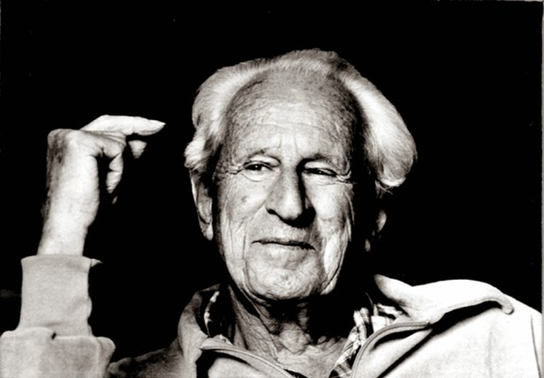
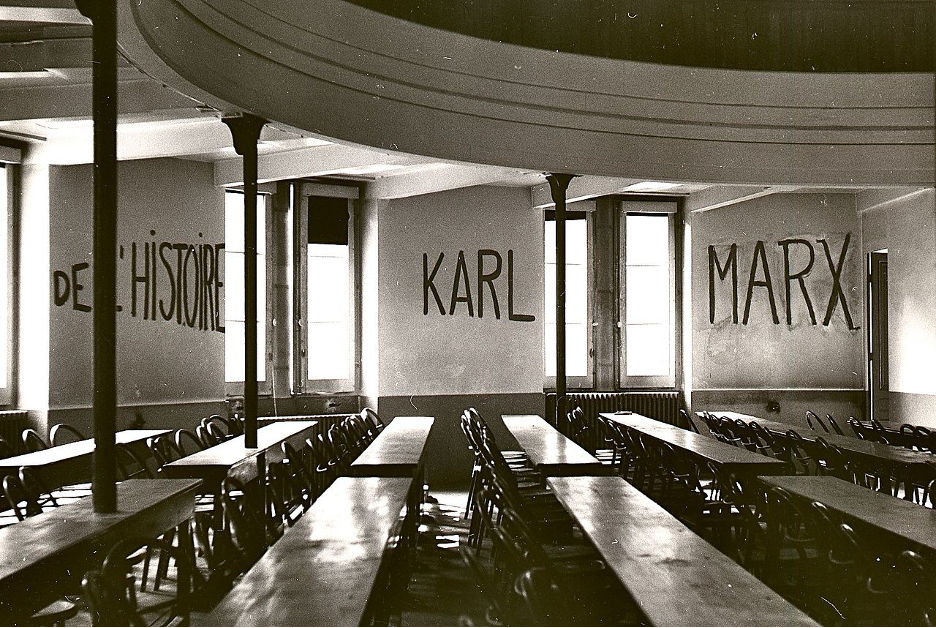
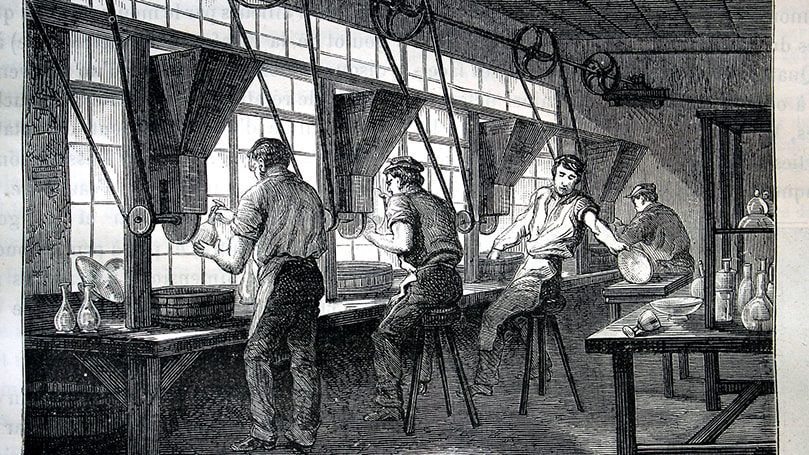
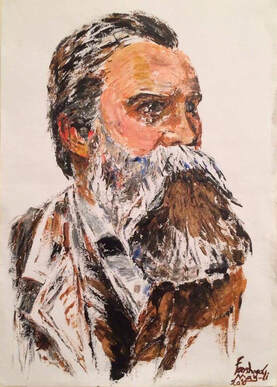
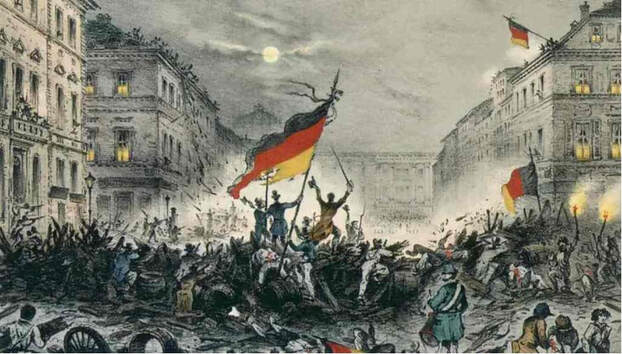
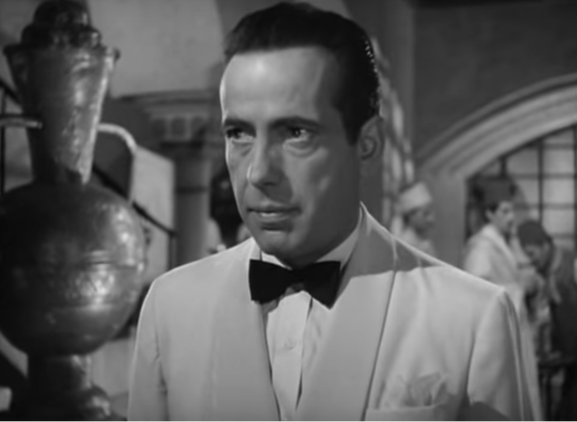
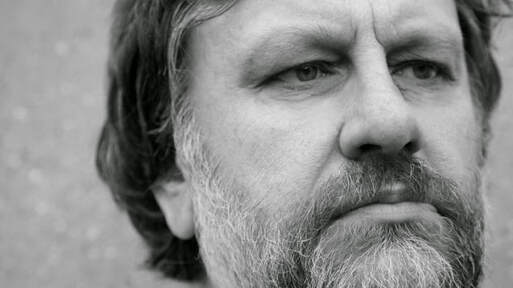




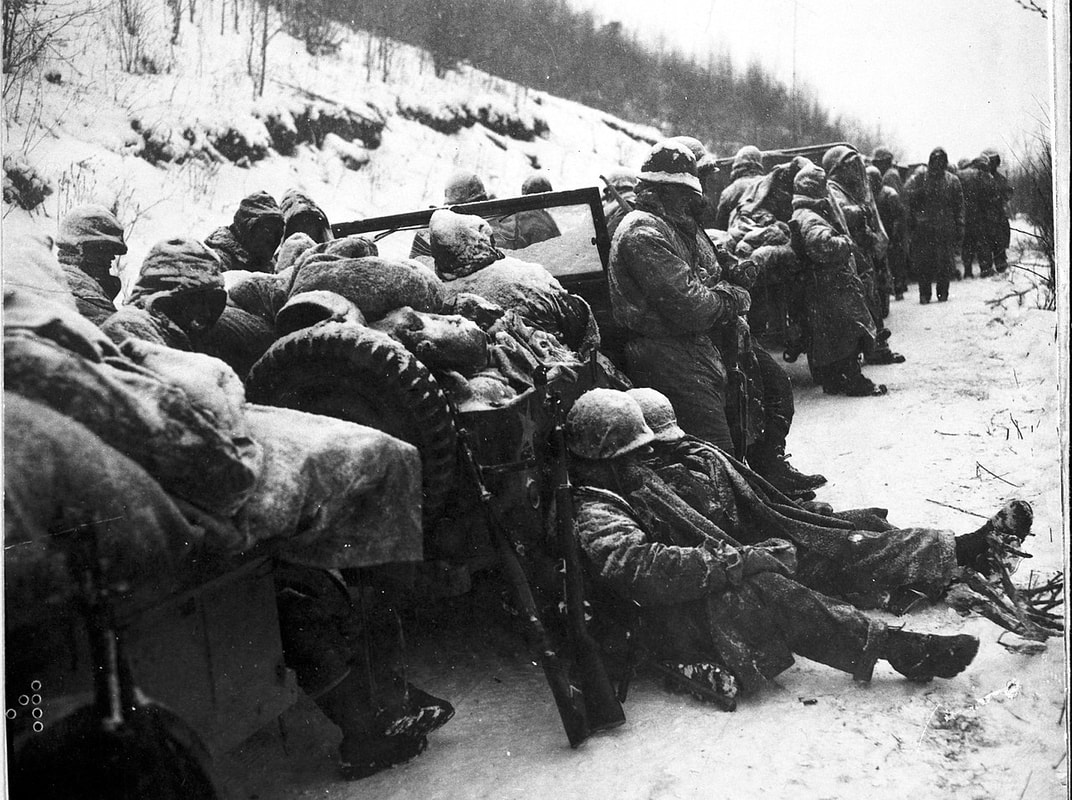
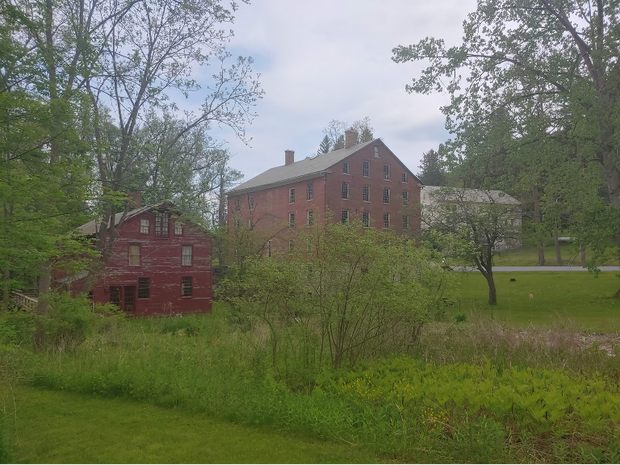

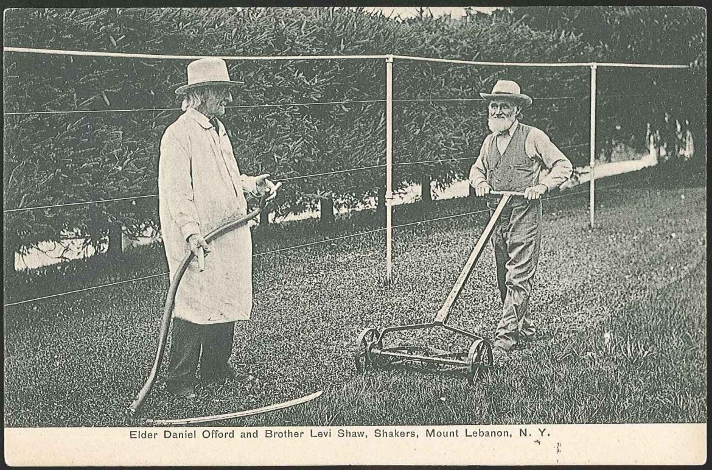
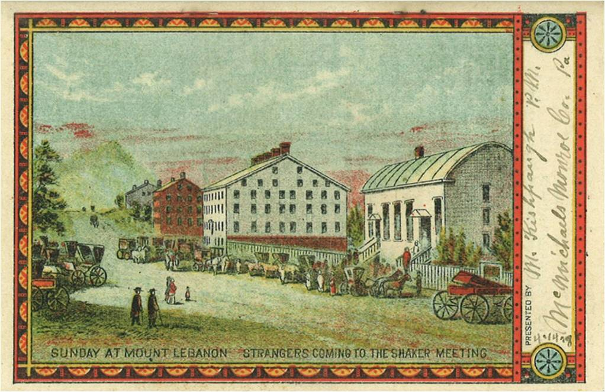
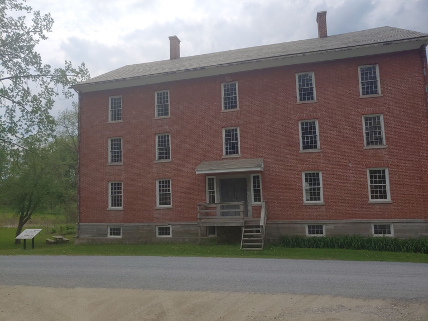
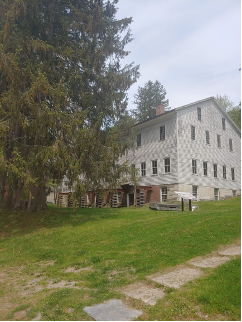





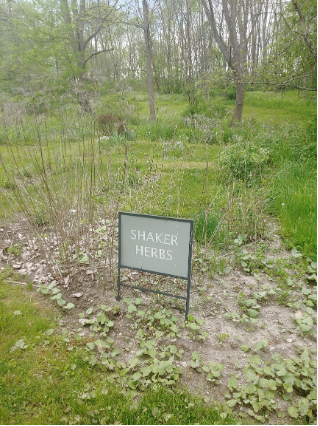


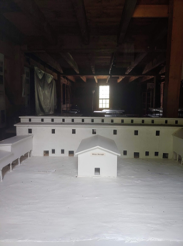


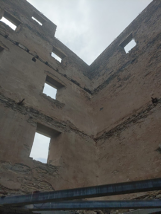
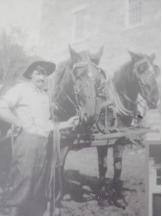

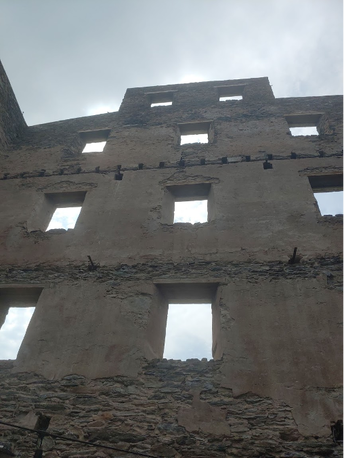






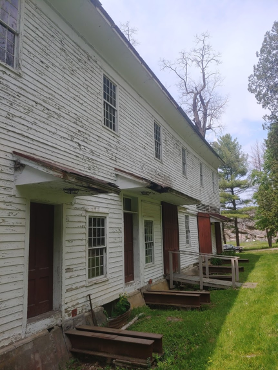

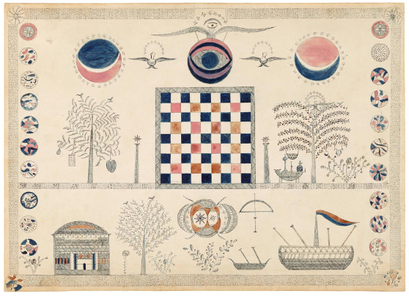
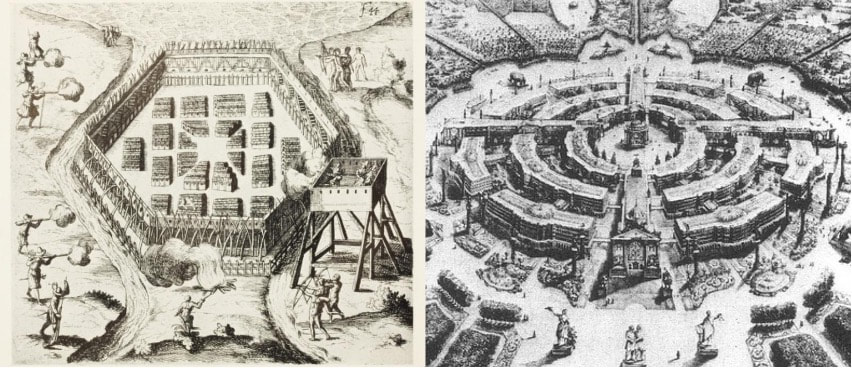




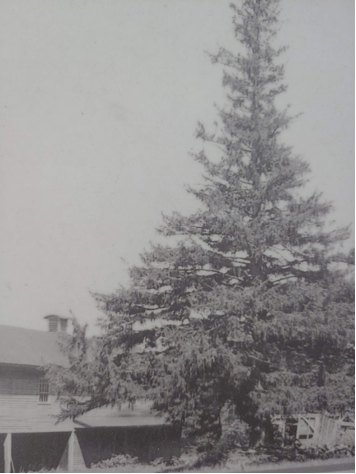


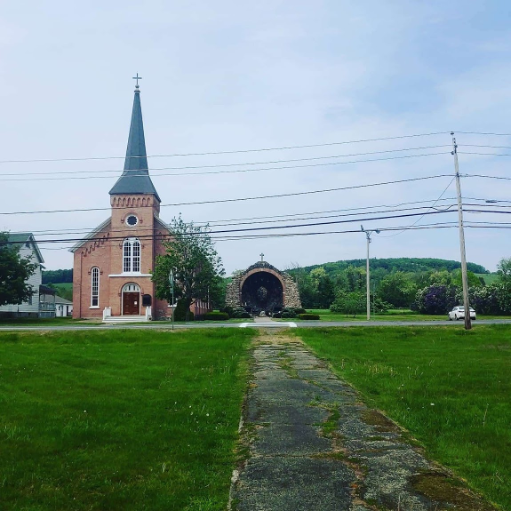


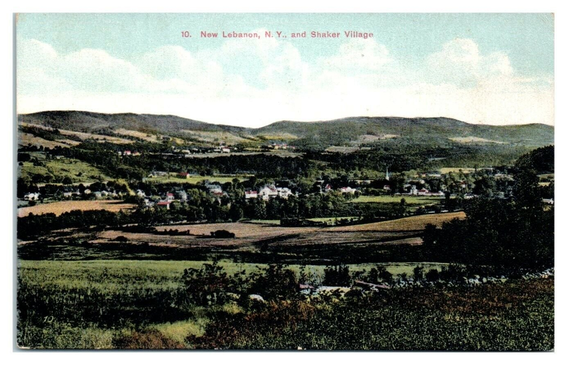

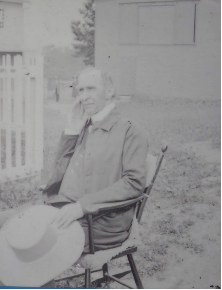

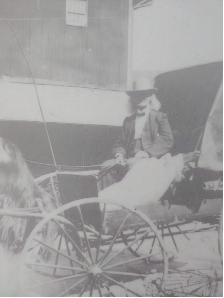
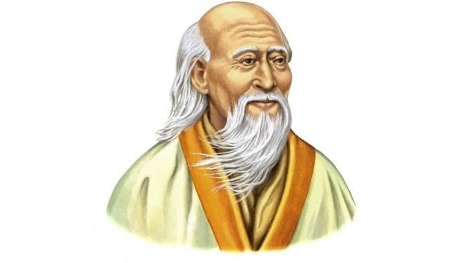

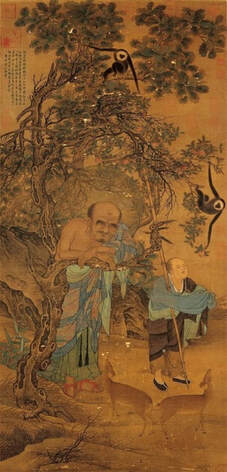
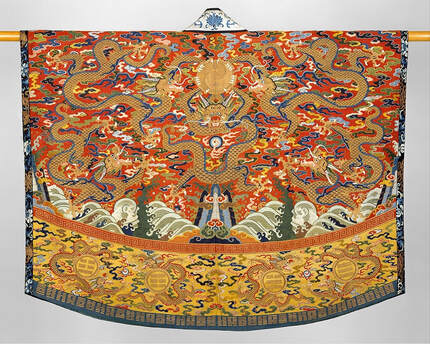

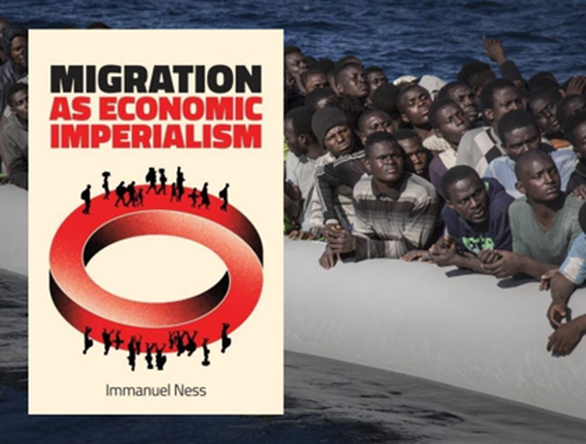
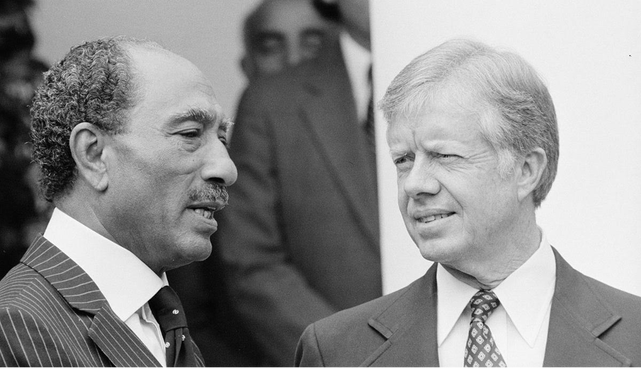

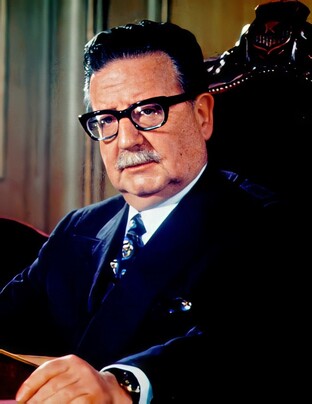
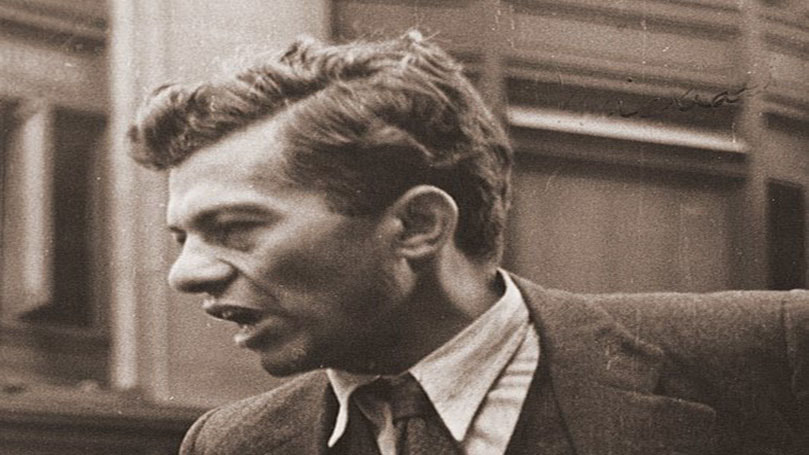
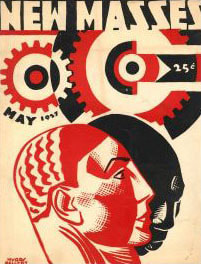

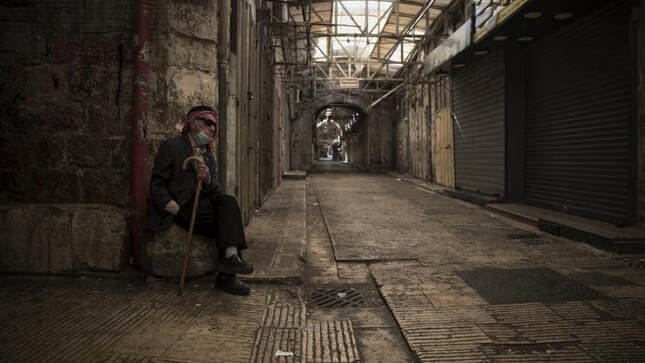
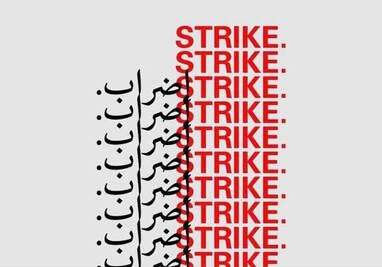



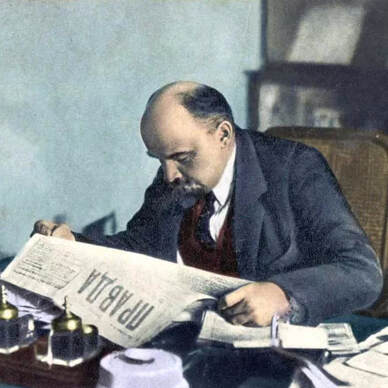

 RSS Feed
RSS Feed